World's Facts
World's Interesting Facts

18 Interesting Facts about Interior Plains Canada
Home » Regions » 18 Interesting Facts about Interior Plains Canada
Dan November 19, 2023
The Interior Plains of Canada form a significant geographic region within the country, extending across vast expanses of the central provinces. This expansive area is characterized by its relatively flat terrain, interrupted by low hills, river valleys, and occasional escarpments. It spans across Alberta , Saskatchewan , Manitoba , and parts of the Northwest Territories, covering a substantial portion of the central Canadian landscape.
The Interior Plains are part of the larger North American Interior Plains, which stretch from the Gulf of Mexico to the Canadian Arctic. In Canada , this region serves as a transitional area between the Rocky Mountains to the west and the Canadian Shield to the east, displaying a varied topography shaped by geological processes over millennia.
Geologically, the plains are composed of sedimentary rock formations, shaped by ancient seas, glaciers, and rivers. The region’s soils are generally fertile, supporting extensive agricultural activities that contribute significantly to Canada’s food production. The fertile lands of the Interior Plains are vital for grain farming, livestock grazing, and other agricultural practices, making it a key contributor to the nation’s economy.
The area is intersected by several major river systems, including the Saskatchewan River, Red River, and the North and South Saskatchewan Rivers, among others. These waterways have historically played a crucial role in transportation, trade, and settlement within the region, fostering the growth of cities and towns along their banks.
The Interior Plains of Canada exhibit a diverse ecosystem, supporting a variety of wildlife such as bison, deer, and numerous bird species. Human settlement and indigenous communities have long thrived in these regions, historically relying on the land for sustenance, trade, and cultural practices. Today, the Interior Plains remain a vital economic and cultural hub within Canada, balancing agriculture, industry, and natural landscapes that continue to shape the nation’s identity and heritage.
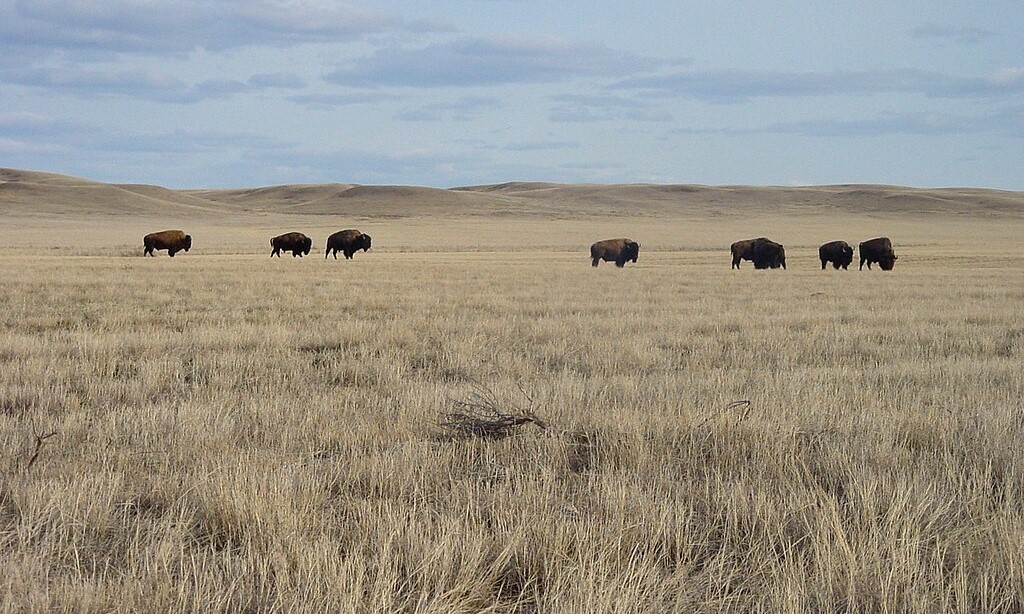
Grasslands National Park
Here are 18 interesting facts about Interior Plains of Canada to know more about it.
- Size and Scope: The Interior Plains of Canada cover a vast expanse, extending over 1.8 million square kilometers, encompassing significant portions of Alberta, Saskatchewan, and Manitoba.
- Prairie Provinces: These plains are integral to the Prairie Provinces, known for their extensive agricultural lands and vibrant rural communities.
- Fertile Soil: The rich and fertile soils of the Interior Plains support diverse agricultural activities, including wheat, barley, canola, and livestock grazing.
- Bison Herds: Historically, immense herds of bison roamed these plains, sustaining indigenous cultures and being integral to the region’s ecosystems.
- Oil Reserves: The Interior Plains hold significant oil reserves, particularly in Alberta, making it a key contributor to Canada’s oil production.
- Natural Gas: Besides oil, substantial natural gas reserves lie beneath these plains, furthering the region’s importance in energy production.
- Grain Belt: The Canadian Prairies are part of North America’s Grain Belt, renowned for their prolific grain production, contributing to global food supplies.
- Glacial Features: Evidence of past glacial activity is visible across the plains, with features like drumlins, eskers, and moraines dotting the landscape.
- River Systems: Major rivers, such as the Saskatchewan, Red, and Assiniboine Rivers, traverse these plains, facilitating transportation and supporting agriculture.
- Grasslands National Park: Located in Saskatchewan, Grasslands National Park protects a unique prairie ecosystem, showcasing the diverse flora and fauna of the region.
- Human History: Indigenous peoples, including the Cree, Blackfoot, and Assiniboine, historically inhabited and traversed these plains, leaving a rich cultural legacy.
- Winnipeg: The city of Winnipeg, situated in the Interior Plains, serves as a prominent cultural and economic center within the region.
- Tornado Alley: Portions of the Interior Plains fall within Canada’s “Tornado Alley,” experiencing tornadoes due to unique atmospheric conditions.
- Prairie Dog Towns: Prairie dog colonies once thrived in these plains, creating extensive underground tunnel networks and supporting various other species.
- Natural Beauty: The Interior Plains boast stunning natural landscapes, including expansive grasslands, rolling hills, and picturesque river valleys.
- Protected Areas: Alongside Grasslands National Park, several provincial parks and conservation areas preserve the natural beauty and biodiversity of these plains.
- Cultural Diversity: The Interior Plains exhibit a blend of cultures, reflecting the contributions of indigenous communities, European settlers, and immigrant populations.
- Economic Contribution: Beyond agriculture and energy, the Interior Plains contribute to industries like mining, forestry, and manufacturing, diversifying the region’s economy.
The Interior Plains of Canada stand as a testament to the nation’s geographical diversity and economic vitality. Spanning vast stretches of fertile lands, these plains have long been the heart of agricultural production, supplying the nation and the world with grains, oilseeds, and livestock. Beyond their agricultural significance, these plains hold treasures of natural resources, including oil, natural gas, and minerals, contributing significantly to Canada’s energy and resource sectors. Embracing a blend of rich indigenous heritage, diverse wildlife, and expansive landscapes, the Interior Plains encapsulate the spirit of resilience and adaptation, a testament to the continuous interplay between humans and the land. As they evolve in tandem with modern advancements and environmental consciousness, these plains remain a cornerstone of Canada’s identity, a cradle of cultures, and a thriving hub of economic activity amid their picturesque vistas and sprawling prairies.
← Previous post
Next post →
Related Posts

The Prairie Provinces
The vast stretch of land between British Columbia and Ontario comprises an area known as the Canadian Prairies, a 2,000 km valley of plains, forests, and farmland. Divided into three provinces — Alberta, Manitoba, and Saskatchewan — the resource-rich region has long served as the country’s breadbasket and a crucial lynchpin in the national economy.
While the Prairies are now home to some of Canada’s biggest cities, rural life remains an important part of the region’s identity. At a time when more and more Canadians live exclusively in downtown apartments and earn a living sitting in front of computers, the Prairies are a place where farming, mining, and oil still generate a livelihood for many, and traditional-minded folk live in small, pioneer-founded communities separated by vast fields and open skies.
Geography of the Prairies
The Prairies begin where the Rocky Mountains end, which is to say, Alberta’s western border with British Columbia . As you move east from the Rockies, the landscape gets very flat very quickly, as B.C.’s tall forests give way to plains, lowlands, and grassy fields. The soil of this region is the best in Canada, and together the three Prairie provinces house nearly 90 per cent of the country’s arable farmland. Vast fields of wheat , barley and other crops remain among the region’s most iconic sights. Flatness is by far the defining adjective of the region, though the Prairies’ lesser-known and mostly underpopulated northern region is far more forested and hilly.
Weather-wise, the prairies alternate between warm, dry, sunny days and cold nights, which get particularly fierce in the winter. Warm Chinook winds and thunderstorms have helped contribute to the romantic idea of the Prairies as a land with sharp, moody seasons.
Owing to the region’s history of aggressive settlement and farming, the population of the Prairies is more evenly distributed than any other region in Canada, with towns and cities spread all over the interior of the three provinces rather than huddled along the U.S. border, as is common in the rest of the country.
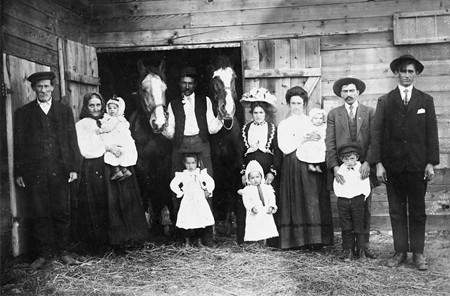
A large family of Croatian farmers in Kenaston , Saskatchewan, circa 1910.
History of the Prairies
A lasting monument to the Victorian-era colonization plans of the Canadian federal government, the three Prairie provinces all trace their histories back to 19th century settlement programs. Following Ottawa’s acquisition of the massive Rupert’s Land territory from the fur-trading Hudson’s Bay Company in 1870, and subsequent creation of the sea-to-sea Canadian Pacific Railroad , Ottawa promoted “ homesteading ” — where large swaths of government-owned land were sold to settlers at very low cost — as a way to ensure the speedy occupation and development of the new territory. It worked, and the late 19th and early 20th centuries saw large waves of immigrant farmers, particularly from Germany , Scandinavia , Russia and Ukraine , help transform the previously underpopulated area into a thriving base of Canadian agriculture. Though these white settlements largely displaced the indigenous communities who were already living there, the Great Plains Indians of the Blackfoot, Cree, Ojibwa, and Sioux nations have proven resilient, and today aboriginal people and culture remain more present on the Prairies than anywhere else in Canada, outside the North .
Canada’s farming boom came to an abrupt end during the 1920s and thirties, when the so-called Dust Bowl era of storms, droughts and crop failures further devastated a region already hard hit by the Great Depression (1929-1939). Born from economic unease, the Prairies quickly became a hotbed of political radicalism; socialism, communism and fascism all rose in popularity, as did the uniquely Canadian movements of farmer progressivism and Social Credit monetary theory. All the Prairie provinces retain distinctive political parties to this day.
After the economic boom that followed World War II (1939-1945), the Prairie economies stabilized, and were further buoyed by new discoveries of oil , minerals , and natural gas . Steady economic growth has helped the provinces of the region diversify their economies in recent decades, moving away from farming and natural resources in favour of more service-oriented, “white collar” forms of employment as more residents begin to abandon rural life for an urban lifestyle similar to that of the larger provinces.
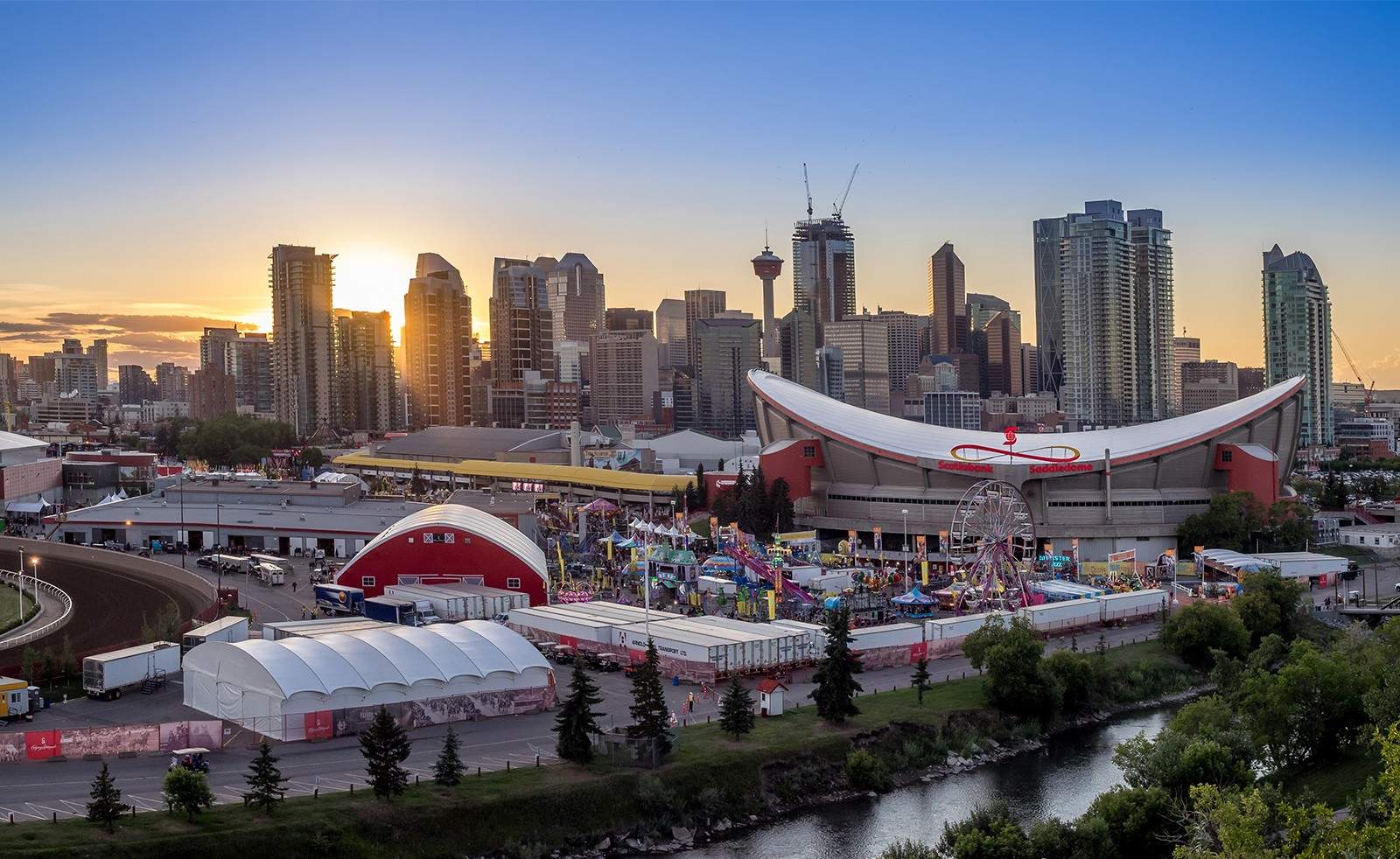
The city of Calgary on the eve of the Calgary Stampede, a week-long, cowboy-themed festival. Jeff Whyte/Shutterstock
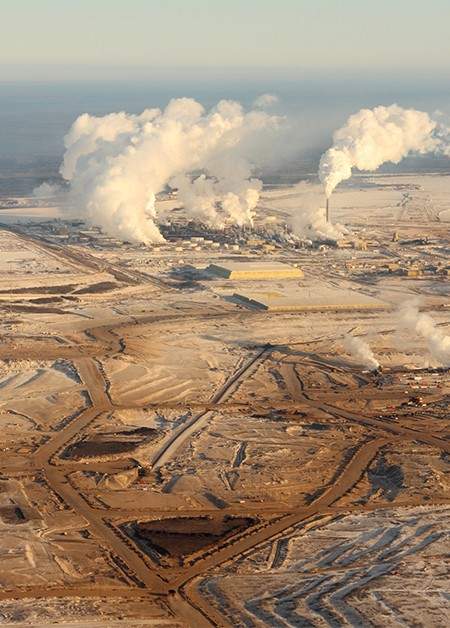
The remote city of Fort McMurray , in northern Alberta, is the home of Alberta's vast bitumen, or oil sands, reserves. In the 2000s, as bitumen technology advanced, "Fort Mac" generated enormous wealth for the province, though climate change activists worry greatly about the environmental cost.
The country’s energy powerhouse, Alberta has exploited its great natural resources to become the richest per-capita province in Canada — with a generous self-image to boot. Today, Alberta is known for being a sort of “Canadian Texas,” due to its vast oil fields, cowboy culture and long tradition of political conservatism.
Owing to the region’s comparatively dry, grassy landscape, Alberta’s early homesteaders found their land better suited for cattle ranching than farming and founded thriving Albertan beef industry that continues to this day. Its poor farmland scaring settlers to the lusher terrains of neighbouring Saskatchewan and Manitoba, Alberta languished in its first few decades of provincehood, but then in 1947 oil was discovered in the city of Leduc and the place was never quite the same.
From the 1950s to the 1970s, Alberta underwent a massive oil boom that helped Canada become one of the world’s leading petroleum-exporting countries, and Alberta the nation’s richest province. Cities like Calgary and Edmonton exploded with growth as new jobs in the energy sector (and all the related industries around it) drew thousands of wealth-hungry residents, while a government rich on oil royalties was able to attract even more with promises of low taxes and cheap utilities. Oil remains Alberta’s dominant industry to this day, and even as traditional wells begin to dry up, extraction and drilling continues thanks to the province’s recently developed oil sands in the north. Oil can be a risky investment, however, and during periods when the global price plummets — as it did most recently in 2014 — the province tends to enter a deep recession.
Albertan culture is known for being quite conservative and traditional, with a strong focus on family, Christianity, and community. Politically, the province is often portrayed as a right-wing outlier in an otherwise fairly liberal country, and thus in a permanent state of tension with the rest of Canada. During federal elections , it’s not uncommon for every one of Alberta’s parliamentary districts to elect a Conservative Party member, and the province has been governed continuously by the Conservatives (with only one four-year break) since 1971. Many of the country’s most famous conservative politicians, such as recent Tory prime minister Stephen Harper (b. 1959), originate from the province.
For information about things to see and do in Alberta, see the Alberta tourism chapter.
More About Alberta
- Tourism Alberta
- About Alberta, Government of Alberta
- Alberta Energy Facts and Statistics
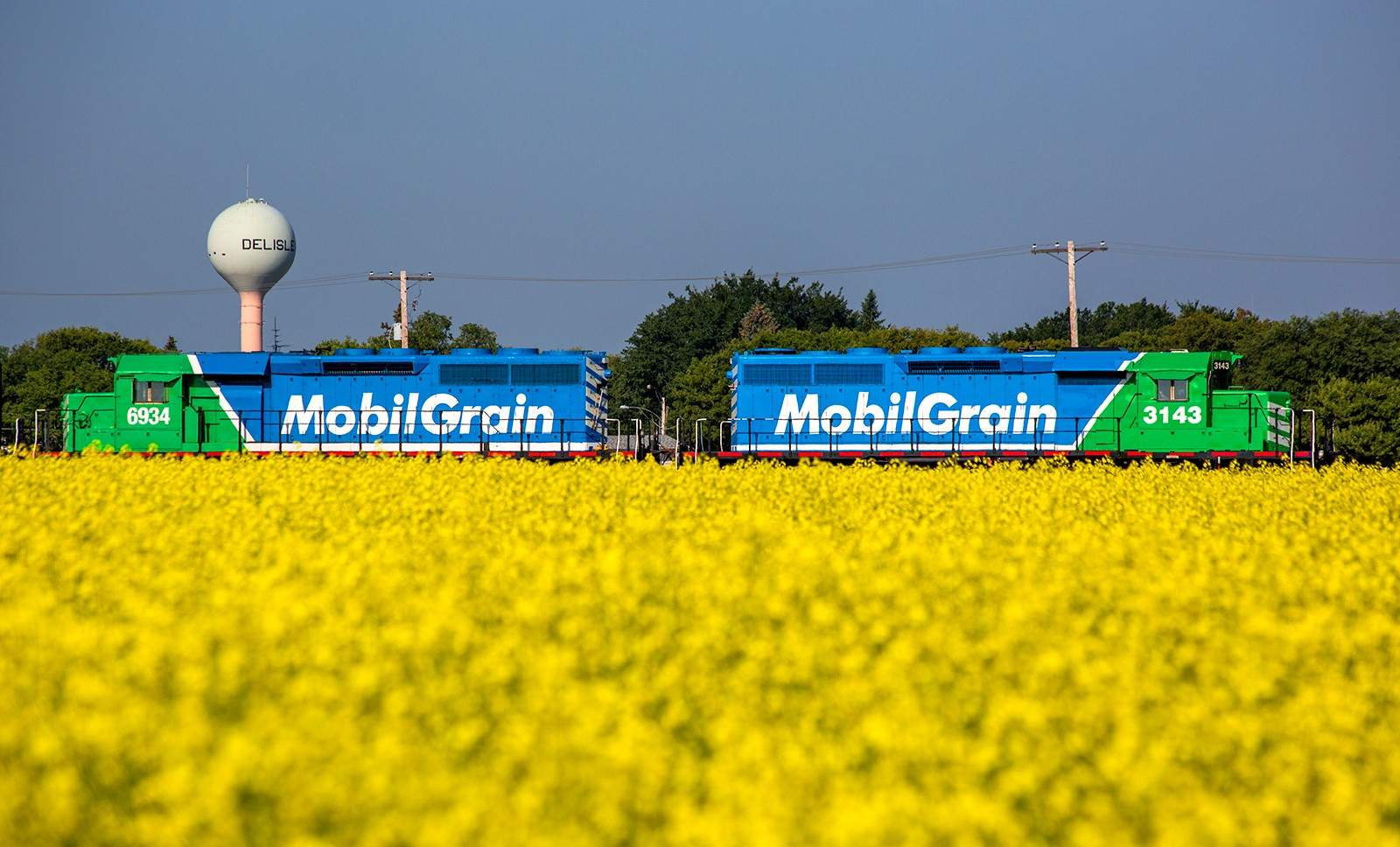
Grain locomotives parked in Delisle, Saskatchewan. Mark Zulkoskey/Shutterstock
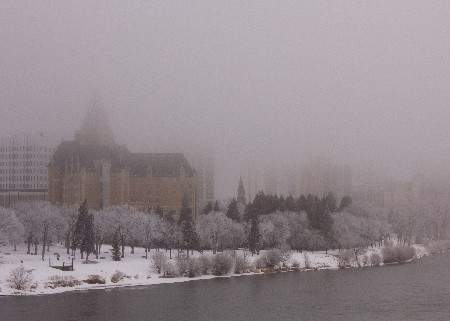
Saskatoon's Bessburough hotel seen through the spring fog and snow. Saskatoon and Regina are known for being two of the coldest cities in Canada, with temperatures below zero (C) often lasting well into May.
Saskatchewan
The most stereotyped of the three Prairie provinces, many Canadians will consider Saskatchewan synonymous with flat land, big farms, and dull people. Though the last point can certainly be debated, the other two are indisputable: Saskatchewan is entirely mountain-free, and its vast acres of farmland comprise nearly 50 per cent of the country’s total.
The preferred destination of settlers during the homestead period, Saskatchewan quickly rose to become the third biggest province in Canada until World War II (1939-1945), greatly prospering from the Canadian agricultural boom of the early 20th century . Though the province was dubbed a “one crop economy” for being so dependent on wheat farming, technological advancements after the war led to the discovery of new sources of wealth under the ground, notably uranium , oil and potash , allowing for a more diversified economy. Fuelled by favourable resource prices and growing trade with the United States, in recent years Saskatchewan has steadily risen to become one of the richest parts of Canada.
These days, fewer and fewer Saskatchewaners work as farmers or miners as more residents take up careers in the vast “ service sector ” of office jobs, bureaucracy and retail that have come to dominate the Canadian economy in general. Even so, the province’s one million residents remain fairly spread out, and Saskatchewan’s two biggest cities, Regina and Saskatoon , house less than 40 per cent of the provincial population. The province’s famously easygoing, small-town culture of tractors, trailers and truck stops has been celebrated in everything from sitcoms to folk songs.
More About Saskatchewan
- Tourism Saskatchewan
- The Saskatchewan Settlement Experience
- The Encyclopedia of Saskatchewan, University of Regina
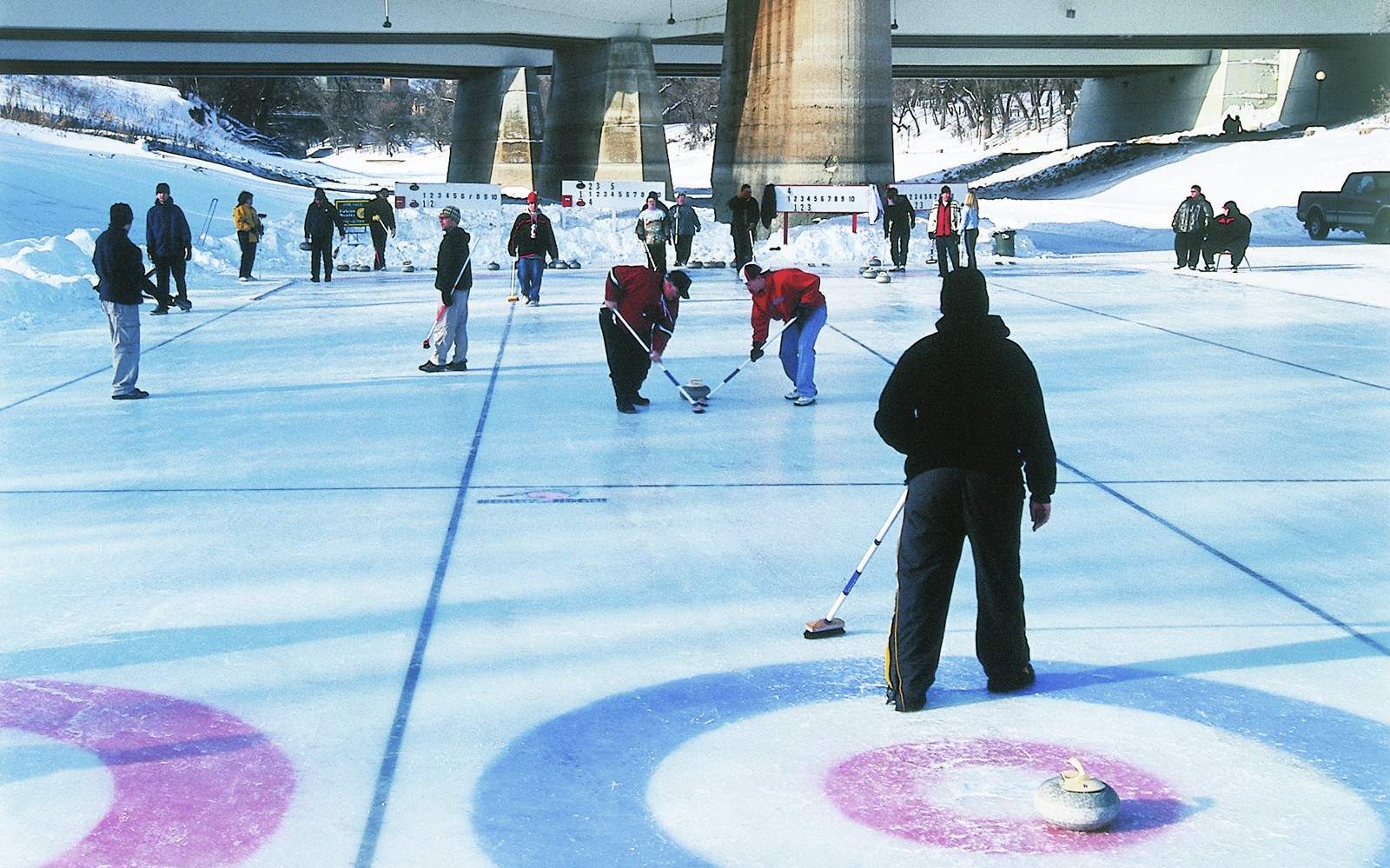
Outdoor curling on a frozen Winnipeg river. Travel Manitoba
The provincial animal.
The bison (or buffalo ) is the go-to symbol of Manitoba, appearing on provincial logos, sports jerseys, and even the flag. Enthusiastically hunted by the Great Plains Indians and white settlers for its meat and fur, Manitoba Bison are now considered a "species at risk" and protected by federal law.
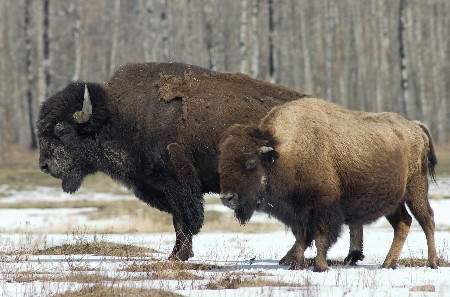
Manitoba is a history-rich region of Canada that traces its roots back to the Red River Settlement of the early 19th century , a small colony in southern Rupert’s Land inhabited by aboriginal women, French-Canadian fur traders, and their mixed-race offspring, known as the Métis . The Métis people formed a distinctive hybrid culture of aboriginal and French traditions, and were largely independent and self-governing. This came to an end in 1869, when the Canadian federal government attempted to seize the Red River lands to make way for the Canadian Pacific Railway , triggering a phase of armed conflict known as the Red River Rebellion . In 1870, Prime Minister John A. MacDonald (1815-1891) negotiated with the Métis leaders to found Manitoba as Canada’s fifth province, though Métis displeasure with the deal would eventually spawn a second phase of armed conflict, known as the North-West Rebellion , in 1885. After that, in turn, was put down, Manitoba’s Métis culture largely was wiped out as waves of white settlers flooded in and displaced the locals. Today, the province is 90 per cent white, with most Manitobans tracing their roots to 19th century British, French, German, or Ukrainian immigrants. Only in recent years has Manitoba come to celebrate its Métis past as an important part of its identity.
Geographically, Manitoba is a mix of northern forests and southern grasslands, and contains three of the country’s biggest lakes — Lake Manitoba , Lake Winnipegosis and Lake Winnipeg . Though the vast majority of Manitobans live in or around the capital city of Winnipeg , the far-north city of Churchill on the coast of Hudson Bay remains equally famous for its history with the fur trade and tourist-friendly arctic animals.
Manitobans boast of being hearty survivors of some of the harshest weather in Canada (floods and tornadoes are not uncommon), but also take pride in the natural beauty and varied wildlife of their region, which includes beavers, bears, caribou, wolves, and buffalo. In contrast to Alberta and Saskatchewan, Manitoba lacks an easily caricatured identity, and has had far less cultural, political and economic impact on Canada at large. In many ways, the defining theme of Manitoba may simply be its mellow diversity — of land, nature, politics and people.
More About Manitoba
- Manitoba Tourism
- Manitoba Facts, Government of Manitoba
- Manitoba Historical Society
Quick Facts
- The Prairie provinces of Alberta, Saskatchewan, and Manitoba are known for being the most rural parts of Canada.
- Much of the Prairies' population is descended from 19th century farmer-settlers.
- A thriving oil industry has helped Alberta become the country's richest province.
- The Prairie provinces are becoming increasingly urban as residents move away from farming and other traditional ways of life.
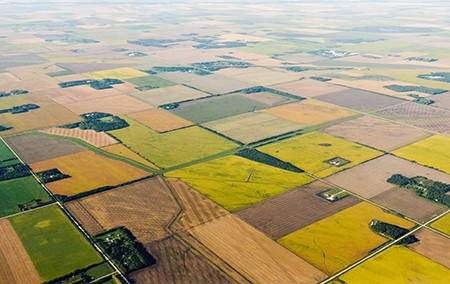
Patchwork Provinces
An arial shot of Alberta farmland.
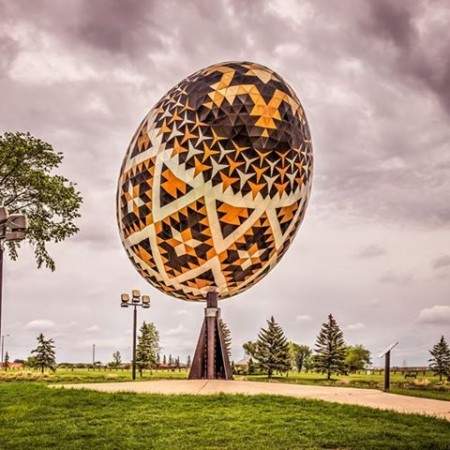
Roadside Wonders
The world's largest Ukrainian easter egg (or "pysanka"), located in Vegreville , Alberta is one of Canada's most infamous roadside attractions , and a cheesy tribute to the region's Ukrainian heritage. A vast assortment of "world's largest" things have been built to brighten up boring Prairie highways, including the world's largest beaver in Beaverlodge, Alberta, the world's largest fire hydrant in Elm Creek , Manitoba, and the world's largest paperclip in Kipling , Saskatchewan.
The Three Prairie Provinces
- Alberta: Population, 4,252,900 (2016 est.); capital, Edmonton. Province of Canada since 1905.
- Saskatchewan: Population, 1,150,600 (2016 est.); capital, Regina. Province of Canada since 1905.
- Manitoba: Population, 1,318,100 (2016 est.); capital, Winnipeg. Province of Canada since 1870.
The Prairie Provinces Travel Guide
Book your individual trip , stress-free with local travel experts
- roughguides.com
- North America
- prairie-provinces
- Travel guide
- Itineraries
- Travel Advice
- Accommodation
Plan your tailor-made trip with a local expert
Book securely with money-back guarantee
Travel stress-free with local assistance and 24/7 support
Spreading over the provinces of Manitoba, Saskatchewan and Alberta, the vast lands between Ontario in the east and the Rocky Mountains in the west are commonly called “the Prairies”. This is certainly not Canada’s glamour region, with the main cities caricatured as dull and the scenery monotonous. In truth, this image is unfair and comes mainly from the fact that most cross-country journeys follow Trans-Canada 1, through generally flat and treeless plains. Here isolated farms guard thousands of acres of swaying wheat or immense grasslands with giant cattle herds. But these landscapes only typify the region’s southernmost part, and even then they’re broken up by the occasional river valley and range of low-lying hills. The prairie’s other major cross-country route – Hwy 16 or the Yellowhead Route – lies to the north and travels through a more diverse landscape of low hills and sporadic Aspen Parkland forests.
The Alberta Badlands
Around saskatoon, the mounties, northern saskatchewan, provincial parks, saskatchewan.
Further north again, this transitional zone gives way to the vast and sparsely inhabited boreal forest. Here conifers, rivers and myriad lakes cover the rocky outcrops of the Canadian Shield and well over half the entire region – stretching north to the Northwest Territories and the hostile, treeless tundra around the Hudson Bay. These northerly climes are characterized by deep, cold winters that alternate with brief, bright summers, when the top few centimetres of topsoil thaw to create millions of stagnant pools of water where mosquitoes thrive. Yet the region remains captivating for its sense of desolate wilderness; a staggering number of first-rate backcountry canoe routes, and wildlife that includes caribou, polar bear, bison and many migratory birds.
The eastern gateway to the prairies is Winnipeg , which rewards a stopover, with some interesting historical sights, restaurants and nightlife. The city can also provide a base for exploring the varied lakes and plains of Southeastern Manitoba and, if you’ve got the time, Northern Manitoba, where the biggest draw is the desolate town of Churchill , on the southern shore of Hudson Bay, one of the world’s best places to see beluga whales and polar bears .
The more varied scenery makes Yellowhead Route (Hwy-16) from Winnipeg to Edmonton (1310km away), the best route west. It takes its name from a light-haired Iroquois explorer and guide nicknamed Tête Jaune (“yellow head”) by the voyageurs , French-speaking boatmen who plied the waterways transporting people, furs and supplies. The culture of original settlers is preserved today in small towns like Dauphin , but the route is most rewarding for its easy side-trips to two national parks, Riding Mountain in Manitoba and Prince Albert in Saskatchewan, both with good hiking and canoeing. The Yellowhead Route also runs through Saskatoon , Saskatchewan’s largest city, an ordinary but likeable place thanks to an attractive riverside setting and good restaurants. Nearby are important Métis and Plains Indians sites. Once in Alberta, the Yellowhead continues to Edmonton , a slightly bleak but bustling city that’s a gateway to an immense expanse of low hills and boreal forest to the north.
However, the quickest route west from Winnipeg is Trans-Canada Hwy-1 , which briskly slices through 1500km of bland and productive prairie on its way to the Rockies. Once the novelty of all the hypnotically swaying wheat, oceans of dazzling yellow rapeseed and the big skies with their ever-changing clouds wears off, you can preserve your sanity with a series of diverting side-trips. These include old farmsteads, lush provincial parks , the easy-going city and Mountie-capital of Regina , the gritty little atmospheric town of Moose Jaw , with its worthwhile Tunnels of Moose Jaw attraction, and restored Fort Walsh. With more time, strike out further to the attractive coulees and buttes of the pristine and wonderfully empty Grasslands National Park . The first big town in Alberta is Medicine Hat, where Hwy-3 begins – the most direct route to Vancouver. Otherwise, continuing on Hwy-1, the ranching belt is interrupted by the intriguing and arid Badlands around Drumheller where dinosaurs left abundant traces. The region is within the catchment of Calgary , the oil town and self-styled cowboy city famous for the Calgary Stampede and as the main gateway for the Canadian Rocky Mountains.
Brief history
If you’re in the Prairie Provinces in the winter, when Artic winds can bring temperatures below -30°C, it’s hard to imagine how the European pioneers survived, huddled together in remote log cabins. Yet they did, and went on to cultivate, between about 1895 and 1914, the great swath of land making up the wheat belt and the Aspen Parkland, turning it into one of the world’s most productive wheat-growing areas. This development came with a high price: the nomadic culture of the Plains Indians was almost entirely destroyed and the disease-ravaged, half-starved survivors were dumped into a string of meagre reservations. Similarly, the Métis – descendants of white fur traders and Aboriginal women – who for more than two centuries had acted as intermediaries between the two cultures, found themselves overwhelmed, their desperate attempts to maintain their independence leading to a brace of futile rebellions.
With the Métis and the First Nations out of the way, thousands of European immigrants concentrated on wheat yields. But with prosperity so dependent on grain prices and railroad charges, the region’s farmers experienced alarming booms and busts throughout the twentieth century. This situation continues to affect the prairie economies, although Saskatchewan in particular has diversified, exploiting its supplies of potash (fertilizer) and some of the same vast oil and gas reserves that underpin Alberta’s economy. Even so, prairie farmers often struggle to make ends meet when wheat prices fall and so formed wheat pools , which attempt to control freight charges and sell the grain at the best possible time. The political spin-off was the evolution of a strong socialist tradition, built on the farmers’ mistrust of markets. For many years Saskatchewan was a stronghold of the Co-operative Commonwealth Federation ( CCF ), the forerunner of the New Democratic Party; in 1944 the CCF formed the country’s first leftist provincial government, pushing through bills to set up provincially-run medical and social security schemes, which the rest of Canada eventually adopted.
Formed by the meltwaters of the last Ice Age, the Red Deer River valley cuts a deep gash through the prairie – about 240km northwest of Medicine Hat and 140km east of Calgary – creating a surreal landscape of bare, sunbaked hills and eerie lunar flats dotted with sagebrush and scrubby, tufted grass. On their own, the Alberta Badlands justify a visit, but what makes them an essential detour is the Royal Tyrrell Museum of Paleontology , one of North America’s greatest natural history museums, located 8km outside Drumheller , a dreary but obvious base. You’ll need your own transport to explore and get to Dinosaur Provincial Park , home to the Tyrrell Museum Field Station and the source of many of its fossils.
A downbeat town in an extraordinary setting, DRUMHELLER lies roughly ninety minutes’ drive northeast of Calgary or two hours on dirt roads from Dinosaur Provincial Park. Nestled at the bottom of a parched canyon and surrounded by the detritus and spoil heaps from its mining past, the otherworldliness of Drumheller’s immediate surroundings is heightened by the contrast to the vivid colours of the wheat and grasslands above. Its Red Deer River once exposed not only dinosaur fossils but also coal seams, which attracted the likes of Samuel Drumheller, after whom the town is named. The first mine opened in 1911, but within fifty years it was all over and today Drumheller is sustained by agriculture, oil and tourism. There’s not much to do in its tiny hardscrabble downtown, but the Royal Tyrrell Museum ensures visitors pass through in droves. The town has gone out of its way to try to tempt them in, with dino-mania at every turn. Though the museum is clearly the major local draw, the rest of the semi-arid Red Deer Valley is dotted with viewpoints and minor sights.
Royal Tyrrell Museum
A sleek building packed with high-tech displays and blended skilfully into desolate surroundings, the Royal Tyrrell Museum , 6km outside Drumheller, will appeal to anyone with even a hint of scientific or natural curiosity. Although it claims the world’s largest collection of complete dinosaur skeletons (120,000 specimens), the museum is far more than a load of old bones. As well as skilfully and entertainingly tracing the earth’s natural history, it’s also a leading research centre and you can watch scientists painstakingly scratch, blow and vacuum dirt from fossils. Hands-on activities include fossil casting or the chance to dig in a realistic quarry; book ahead for both. There’s also a gift shop and cafeteria, while outside you can spend the best part of an hour exploring a 1.4km hiking trail dotted with various information boards.
The Dinosaur Trail and Horseshoe Canyon
For a scenic drive from Drumheller take the 48km Dinosaur Trail ; maps are available from the visitor centre. Highlights include the Little Church (capacity six) and Horsethief Canyon and Orkney Viewpoint , both of which offer spectacular panoramas of the wildly eroded valley and are connected by a small car ferry at Bleriot (daily 10am–8.45pm; free).
For easy badland hikes , try Horseshoe Canyon , 19km southwest of Drumheller on Hwy-9, where a multitude of good trails snake around the canyon floor.
Wayne and the Hoodoos
A couple of sights are an easy drive southwest of town. First is the near-ghost town (population 27) of Wayne , 14km from Drumheller, with its atmospheric Wild West-style Last Chance Saloon . Another 9km southeast on Hwy-10 a series of Hoodoos – slender columns of wind-sculpted sandstone topped with mushroom-like caps – makes for a good photo.
North of Saskatoon, Hwy-11 cuts through a narrow slice of prairie between the final stretches of the North and South Saskatchewan rivers, before they flow together in the northeast. There’s nothing to see on the road itself, but a brief detour will take you to the atmospheric Plains Indian site of Wanuskewin and the informative Batoche National Historic Site , where the Métis rebellion of 1885 reached its disastrous climax. Setting out early and with your own transport you can combine these with visits to a museum at Duck Lake and the reconstructed Fort Carlton where you can camp. With longer to spare, consider heading to the healing waters of Little Manitou Lake or up into the wilds of Prince Albert National Park.
Prince Albert National Park
The only settlement in the wilds of Prince Albert National Park is the tourist village of WASKESIU , which is approached from the south by Hwy-263 and from the east by highways 2 and 264. Spread out along the southern shore of Waskesiu Lake, it has all the usual facilities, plus a narrow sandy beach that gets ridiculously overcrowded in summer.
Several of the park’s easier hiking trails begin in or near Waskesiu, most notably the 13km Kingfisher Trail , which loops through the forest just to the west. The best trails and canoe routes begin roughly 15km further north at Kingsmere Lake , accessible by boat or car from Waskesiu. They include a delightful week-long canoe trip along the western shore of Kingsmere Lake before heading through a series of remote lakes amid dense boreal forest. There’s also a 20km hike or canoe (a good overnight trip) to the idyllic Grey Owl’s Cabin (May–Sept), beside tiny Ajawaan Lake, near the northern shore of Kingsmere. Grey Owl lived here from 1931 until 1937, the year before his death, writing one of his better books, Pilgrims of the Wild ; this is also where he, his wife and daughter are buried. Whatever you do in the park, remember insect repellent .
The Métis and the Northwest Rebellion
As the offspring of Aboriginal women and white fur traders, the Métis were for centuries Canada’s most marginalized group. Recognized neither as Canadians nor Aboriginals, they were denied rights and often forced to wander the country in poverty with nowhere to settle. The 1869–70 Red River rebellion in Manitoba, led by Louis Riel , won significant concessions from the Canadian government but failed to protect the Métis’ way of life against the effects of increasing white settlement. Consequently, many Métis moved west to farm the banks of the South Saskatchewan River , where the men acted as intermediaries between aboriginals and the whites. Yet when government surveyors arrived in 1878 the Métis realized – as they had on the Red River twenty years before – their claim to the land they farmed was far from secure.
Beginning with the Métis, a general sense of instability spread across the region in the early 1880s, fuelled by the increasingly restless and hungry Cree peoples, as well as by the discontent of white settlers angry at the high freight charges levied on their produce. The leaders of the Métis decided to act and in June 1884 they sent a delegation to Montana, where Riel was in exile. Convinced the Métis were chosen by God to purify the human race – and he their Messiah – Riel was easily persuaded to return.
In March 1885, Riel declared a provisional government at Batoche and demanded the surrender of Fort Carlton , the nearest Mountie outpost, 35km to their west on the North Saskatchewan River. The police superintendent refused and the force he dispatched to re-establish order was badly mauled at Duck Lake . When news of the uprising reached the Cree, some 300km away, they attacked the local Hudson’s Bay Company store, killing its nine occupants in the so-called Frog Lake Massacre . Within two weeks, three columns of militia were converging on Big Bear’s Cree and the meagre Métis forces at Batoche. The total number of casualties – about fifty – does not indicate the full significance of the engagement, which marked the end of brief Métis independence. Riel’s execution in Regina on November 16, 1885, was bitterly denounced in Québec and remains a symbol of the divide between English- and French-speaking Canada.
For more information on the events and sights relating to 1885, look at the excellent website w trailsof1885.com .
Sitting on the east bank of the Churchill River where it empties into Hudson Bay, CHURCHILL has the neglected look of many remote northern settlements, its unkempt open spaces dotted with the houses of its mixed Inuit, Cree and white population. These grim buildings are fortified against the biting cold of winter and the voracious insects of summer. Like York Factory, Churchill began life as a fur trading post, with the Hudson’s Bay Company building its first fort here in 1717 and using it for shipments to Britain until the 1870s when better trade routes through the USA took over. The development of agriculture on the prairies then brought a reprieve and in 1929 the Canadian National Railway completed a line. Unfortunately, the port has never been very successful, largely because the bay is ice-free for only about three months a year. So, with its grain-handling facilities underused, the visitors who flock here for the wildlife (particularly the polar bears ) – or the aurora borealis (Northern Lights) common in the skies between late August and April – have thrown the town a real lifeline.
In 1682, the Hudson’s Bay Company established a fur-trading post at York Factory , a marshy peninsula some 240km southeast of today’s Churchill. From here the direct sea route from England was roughly 1500km shorter than the old route via the St Lawrence River, while the Hayes and Nelson rivers gave access to the region’s greatest waterways. Within a few years, a regular cycle of trade had been established, with the company’s Cree and Assiniboine go-betweens heading south in the autumn to hunt and trade for skins and returning in the spring laden with pelts to exchange for the company’s manufactured goods. The company was always keen to increase its trade, and it soon expanded its operations to Churchill, building its first fort here in 1717.
In the nineteenth century the development of faster trade routes through Minneapolis brought decline, and by the 1870s both York Factory and Churchill had become unimportant. The subsequent development of agriculture on the prairies brought a reprieve. Many of the politicians and grain farmers of this new west were determined to break the trading monopoly of Sault Ste Marie in northern Ontario and campaigned for the construction of a new port facility on Hudson Bay, connected by rail to the south through Winnipeg. In the 1920s the Canadian National Railway agreed to build the line, and it finally reached Churchill in 1929. Unfortunately, despite the efforts of the railway workers in the teeth of the ferocious climate, the port has never been very successful, largely because the bay is ice-free for only about three months a year.
Churchill’s natural attractions
Churchill occupies a transitional zone where the stunted taiga trees (subarctic coniferous forest) meet the tundra mosses. Blanketed with snow in the winter and covered by thousands of bogs and lakes in the summer, this terrain is completely flat until it reaches the sloping Churchill River banks and the ridge around Hudson Bay, whose grey-quartzite boulders have been rubbed smooth by the action of the ice, wind and water.
This environment harbours splendid wildlife , including polar bears , which start to come ashore when the bay’s ice melts in late June. They must then wait for the ice to form again to support their weight before they can start their seal hunt; a polar bear can detect a scent from 32km away and can pick up the presence of seals under a metre of snow and ice. The best months to spot bears are September, October and early November, just before the ice re-forms completely.
In mid-June, as the ice breaks on the Churchill River, the spreading patch of open water attracts schools of white beluga whales . As many as three thousand of these intelligent, inquisitive and vocal mammals spend July and August around the mouth of the river, joining the seals , who arrive in late March for five months. The area around the town is also a major migration route for birds heading north between April and June and returning south in August or early September. Nesting and hatching take place from early June until early July. A couple of hundred species are involved, including gulls, terns, loons, Lapland longspurs, ducks and geese. The star visitor is the rare Ross’s Gull, a native of Siberia, which has nested in Churchill for some years. The Birder’s Guide to Churchill by Bonnie Chartier lists them all and is sold at the Eskimo Museum.
Churchill is also a great place to see the aurora borealis ( Northern Lights ), whose swirling curtains of blue, green and white are common in the skies between late August and April; occasionally it’s seen year-round but is at its best from January to March. Finally, in spring and autumn the tundra is a colourful sheet of moss, lichens, flowers and miniature shrubs and trees, including dwarf birch, spruce and cranberry.
Alberta’s provincial capital, EDMONTON , is among Canada’s most northerly cities and at times – particularly in the teeth of its bitter winters – can seem a little too far north for comfort. It straddles the North Saskatchewan River, whose leafy banks contrast strikingly with the high-rises of downtown, and is a proud and bustling city that tries hard with its restaurants, urban-renewal projects and festivals – which include August’s world-class Folk Music Festival .
For years the downtown core on the north side of the river had a somewhat bleak feel to it, but with vast construction projects going on – a new Royal Albert Museum; a giant stadium for the Edmonton Oilers ice hockey team; and scores of associated developments – things should be better very soon. Meanwhile, the core district on the southern side of the river is Old Strathcona , a rejuvenated, late nineteenth-century area, whose main strip is filled with heritage buildings, low-key museums and a booming restaurant, bar and nightlife scene – all fuelled by a huge recent injection of oil money (and young workers) into the city. Several other attractions dot the outskirts, including the impressive TELUS World of Science museum, but none is more famous than the West Edmonton Mall , a gigantic shopping centre, which for long was the main attraction for visitors and is still an essential outlet in the dead of winter even if it feels a little dated. Attractions that are an easy day-trip from town – if you have your own transport – include Elk Island National Park and the Ukrainian Cultural Village .
Edmonton began life in 1795 as Fort Edmonton, the burly log stockade of the Hudson’s Bay Company, in some of Canada’s richest fur country. A century later the town became a staging point for those heading north, particularly during the 1897 Yukon Gold Rush. Then in 1947, things boomed again when an oil strike caused some three thousand wells to sprout within 100km of the city in a decade. Oil money flooded in again in recent decades as rising prices made difficult-to-extract oil in Alberta’s north economically viable, helping keep Edmonton’s population around a million.
Edmonton festivals
International Jazz City Festival End June w edmontonjazz.com . Runs for ten days at three different venues and offers a great value $99 ticket which gives access to all shows.
K-Days Ten days in late July w k-days.com . The more contrived and commercial Capital Ex is a giant funfair, which tries to steal some of Calgary’s Stampede thunder.
Edmonton Folk Music Festival Early Aug w edmontonfolkfest.org . Easily Edmonton’s finest event, held over four days at Gallagher Park near the Muttart Conservatory, where six stages draw artists from all around the world.
International Street Performers Festival Early July w edmontonstreetfest.com . Well-regarded festival, which attracts over one thousand street performers.
Fringe Theatre Festival Mid-Aug w fringetheatreadventures.ca . Increasingly popular ten-day theatrical jamboree that’s turned into one of the largest festivals of its kind in North America.
The heroes of a hundred adventure stories and eccentric, epic films, including such classics as Canadian Mounties versus the Atomic Invaders , the Mounties have been the continent’s most charismatic good guys since the mid-1870s. The North West Mounted Police , as they were originally called, were established in Ottawa in 1873 and given the task of restoring law and order in Saskatchewan and Alberta’s “Whoop-up Country” in the aftermath of the Cypress Hills Massacre. But there was no long-term strategy: the force’s areas of responsibility were undecided and even their uniforms had been slung together from a surplus supply of British army tunics. Yet they did a brilliant job, controlling whiskey traders who had created pandemonium by selling liquor to the Plains Indians. The force’s future was secured after they successfully defused a very delicate situation in 1876. Fearing reprisals after his victory over General Custer at the Battle of the Little Bighorn, Chief Sitting Bull and five thousand Sioux moved north, establishing a camp at Wood Mountain, 350km east of Fort Walsh. Aware of the danger, Inspector James Walsh rode into the camp with just four other constables to insist the Sioux obey Canadian law. Walsh’s bravery helped establish a rough rapport with Sitting Bull and greatly enhanced the force’s reputation.
The Mounties became vital in administering the West, acting as law enforcement officers and justices of the peace. From the 1880s onwards their patrols crisscrossed the territory, their influence reinforced by their knowledge of local conditions accumulated in the exercise of a great range of duties – including delivering the mail and providing crop reports. Despite this level of autonomy, the Mounties saw themselves as an integral, if remote, part of the British Empire , their actions and decisions sanctioned by the weight of its authority. They despised the individualism of the US sheriff and marshal; Mounties expected obedience because of the dignity of their office, not their speed with a firearm. Officers became respected for an even-handedness that extended, remarkably for the period, to dealings with the Plains Indians. Yet the force’s conservative class prejudice was less positive in their approach to policing the “lower orders”.
After 1920, when the force became the Royal Canadian Mounted Police , this conservative undertow became more problematic. The RCMP consistently supported politicians – Prime Minister Richard Bennet among them – who used them to break strikes. They have also often been accused of bias in their dealings with the Québécois. In recent years their reputation has taken a further hit: accusations of widespread corruption, making errors that led to the rendition of Canadian citizen Maher Arar to Syria and the Taser-related death of a man at Vancouver airport in 2007. As evidenced by the coverage these incidents received, the Mounties remain a potent – and important – symbol of nationality.
Some 230km north of Saskatoon the aspen parkland of the south meets the boreal forest of the north and is protected Prince Albert National Park . This great tract of wilderness is a landscape of rivers and creeks, deep lakes, tiny meadows and spruce bogs. The shift in vegetation is mirrored by the wildlife , with prairie species such as coyote and wild bison giving way to black bear, moose, wolf, caribou, osprey and eagle further north.
Prince Albert National Park is about as far north as most casual visitors go, but travel another 150km north to Lac La Ronge Provincial Park or even another 430km further to Clearwater River Provincial Park and you’ll find an even greater wilderness with some of Canada’s premier canoeing routes (see Canoeing in northern Saskatchewan). Both are also a big draw for the hook-and-bullet brigade, but the province’s greatest lure for backcountry enthusiasts of all stripes is the Athabasca Sand Dunes Provincial Wilderness Park in the extreme northwest corner of the province.
Canoeing in Northern Saskatchewan
A seemingly endless web of canoe routes connects Northern Saskatchewan’s thousands of lakes, but the key places for extended adventures are the turbulent white waters of the Clearwater River in Clearwater River Provincial Park and on the Churchill River in Lac La Ronge Provincial Park . The Churchill was once part of the main route into the northwest for the voyageurs : the river swerves across the width of the province, from west to east, before heading into Manitoba.
For most canoeists the best bet is a guided trip but independent and experienced wilderness travellers should start at the provincial parks’ dedicated webpage: w saskparks.net/canoeing .
While the National Parks of Manitoba, Saskatchewan and Alberta probably contain the finest landscapes, all these provinces also have worthwhile Provincial Parks, with thousands of acres of wilderness, lakes, rivers and forests, great hikes and hundreds of kilometres of canoe routes. Many draw local campers in droves on summer weekends and each province has its own park regulations.
Entry to Manitoba ’s provincial parks ( w manitobaparks.com ) costs $5/vehicle/day (multi-day passes available), while entry by boat, foot or bike is free. Park campsites ($11.55–28.35) can be reserved from April to September online or by calling the Parks Reservation Service ( t 204 948 3333 or t 1 888 482 2267; $10/reservation).
Entry to Saskatchewan ’s provincial parks ( w saskparks.net ) is $7/vehicle/day, $17 for three days, $25 weekly and $50 annually. Information is on t 306 787 8676, t 1 800 205 7070. Between mid-May and August you can reserve all park campsites ($13–26; t 855 737 7275, w saskparks.goingtocamp.com ) online for a $10 fee; which is a better bet than simply turning up – particularly at weekends.
Entry to Alberta ’s provincial parks is free, but camping costs $5–26. At peak times the most popular campsites are largely reservation-only ($12/reservation); many can be reserved at w albertaparks.ca , where you’ll also find the individual phone numbers for others that need to be called direct.
REGINA , 575km west of Winnipeg, is Saskatchewan’s capital, as well as a commercial and administrative centre that anchors a vast network of agricultural towns and villages. Yet despite its status, brash shopping malls and 193,000 citizens, Regina feels like a small and unremarkable prairie town. Still, it’s a comfortable place to spend a couple of days (it gets more sunshine than any other major Canadian city) and is an essential stop if you’re keen on learning more about the Royal Canadian Mounted Police (RCMP), or Mounties .
Regina’s origins stem from the 1881 decision of Edward Dewdney, lieutenant-governor of the Northwest Territories (which then spread west from Ontario to the Arctic and Pacific oceans) to move his capital south from Battleford to Pile o’Bones – an inconsequential place named for the heaps of bleached buffalo bones left along its creek by generations of Aboriginal hunters – after the Canadian Pacific Railway was routed across the southern plains. The city was renamed Regina (Latin for “queen”), after Queen Victoria, but the site was far from being fit for royalty, let alone anyone else: the sluggish creek provided a poor water supply, the clay soil was muddy in wet weather and dusty in summer and there was no timber for building. Accordingly, the railway board refused to oblige and the end result was farcical: Government House and the Mounted Police barracks were built where Dewdney wanted them, but the train station was a three-kilometre trek south.
Regina became the capital of the newly created province of Saskatchewan in 1905 and settlers flocked here from the US and Central Europe. The city soon overcame its natural disadvantages by extensive tree-planting, which provided shade and controlled the dust, and by damming the creek to provide a better water source. Yet Regina’s success was based on the fragile prosperity of a one-crop (wheat) economy and throughout the twentieth century boom alternated with bust. Today, Regina’s prosperity looks solid, thanks to sizeable oil reserves, uranium mines and its administrative role.
Regina festivals
First Nations Pow Wow Mid-April w fnuniv.ca/powwow. For something a little different, attend this First Nations gathering featuring crafts, music and dancing.
Craven Country Jamboree Mid-July w cravencountryjamboree.com . A good live music event, this four-day country music festival is held in Craven, a twenty-minute drive north of town.
Queen City Ex Late Jul w thequeencityex.com . Regina’s biggest bash, a week-long festival with a lot of livestock exhibitions, plus rides and music shows, which all ends in a massive fireworks display.
Regina Folk Festival Early Aug w reginafolkfestival.com . Held in Victoria Park, this is another big musical deal.
Set on the wide South Saskatchewan River at the heart of a vast wheat-growing area, SASKATOON is a commercial centre with a population of around 260,000 – making it Saskatchewan’s largest city. All the same it’s an easy-going place, with pleasant riverside paths and a nice-enough stop on any prairie itinerary. Most of the worthwhile sites, such as the Plains Indian Wanuskewin complex, are outside town.
Ontario Methodists founded Saskatoon as a temperance colony in 1883 and named it after a local berry, but in spite of their enthusiasm the new settlement made an extremely slow start, partly because the semi-arid farming conditions were unfamiliar and partly because the 1885 Northwest Rebellion raised fears of Aboriginal hostility. Although the railroad reached Saskatoon in 1890, there were still only 113 inhabitants at the start of the twentieth century. But the next decade saw a sudden influx of European and American settlers and, as the regional agricultural economy expanded, a group of entrepreneurs, nicknamed boomers , dominated and made Saskatoon the provincial economic hub. This success was underpinned by particularly sharp municipal loyalty: people who dared criticize any aspect of the city – from poor water quality to tyrannical labour practices – were dubbed knockers , and their opinions rubbished by the press. Even so the boomers established a pleasant, well-groomed city where solidarity overwhelmed differences in income and occupation.
Saskatoon berry pie
The thing to try while in town is Saskatoon berry pie , made with berries grown on the outskirts of the city. One popular place is the Berry Barn , 830 Valley Rd (April to mid-Dec Mon–Fri 11am–8pm, Sat & Sun 9am–8pm; t 306 978 9797, w berrybarn.ca ), a good restaurant serving hearty home-made food, 11km southwest of town off Hwy-11. It’s one of a number of places along this road that allow you to pick your own fruit.
Saskatoon’s festivals
Saskatchewan Jazz Festival Late June or early July w saskjazz.com . Saskatoon’s biggest and best shindig with over five hundred musicians performing jazz, gospel and blues across the city, mostly for free.
Shakespeare on the Saskatchewan Festival July & Aug w thesaskatchewan.com . Sees plays performed in tents on the river bank by the Mendel Art Gallery.
Potash Corp Fringe Festival Early Aug w 25thstreettheatre.org . A week of alternative performances featuring comedy and theatre from all over the world.
Folkfest Mid-Aug w saskatoonfolkfest.ca . Large three-day festival that celebrates the town’s multiethnic roots in a number of nationally or regionally themed pavilions, with cultural performances, cuisines and crafts.
Top image: Maligne Lake, Canada © Zhukova Valentyna/Shutterstock
Discover more places in Canada
- Highway 16: Winnipeg to Saskatoon
- Southeastern Manitoba
- Southern Saskatchewan
The Rough Guides to Canada and related travel guides
In-depth, easy-to-use travel guides filled with expert advice.
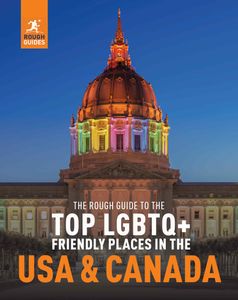
Find even more inspiration here

Planning your own trip? Prepare for your trip
Use Rough Guides' trusted partners for great rates
written by Rough Guides Editors
updated 03.09.2021
Ready to travel and discover Canada?
Get support from our local experts for stress-free planning & worry-free travels.
- Travel advice
- Where to stay

Canada Driving Directions
Directions, Maps, Hotels, and other Travel Tools
Interior Plains
The Interior Plains are a significant natural region in Canada . It surrounds Western Canada and Eastern Canada and is bordered by the Rocky Mountains to the west and the Appalachians to the east.
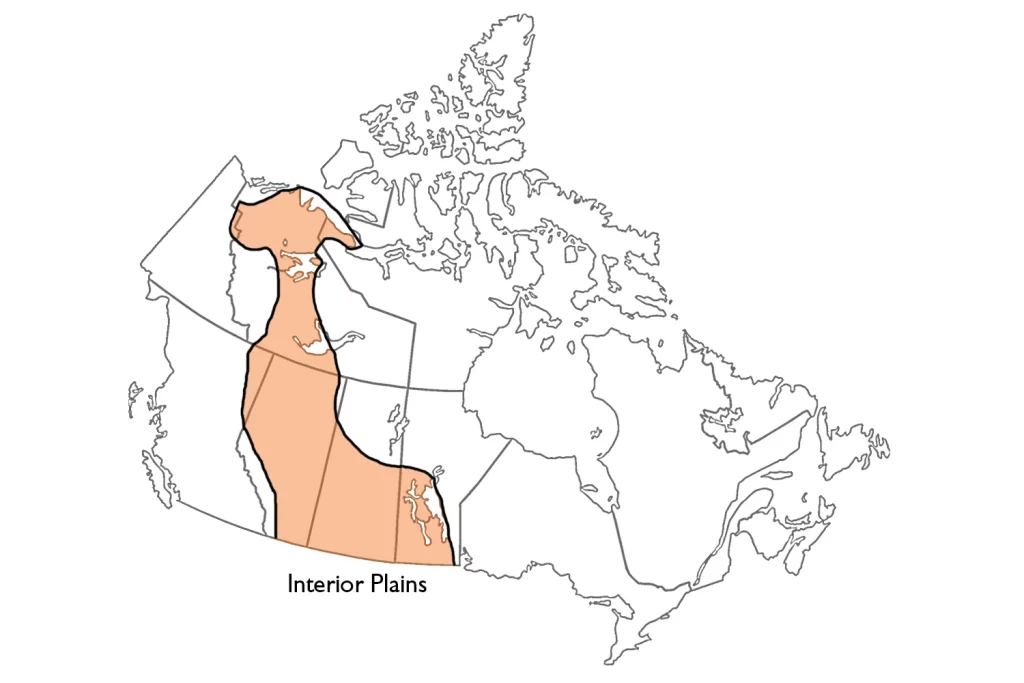
The Interior Plains form an immense region of nearly level grassland bordered by the Canadian Shield to the east and the Canadian Rockies to the west. Ancient Lake Agassiz, formed nearly 12,000 years ago from glacial meltwater, once covered much of the southern Interior Plains, especially Manitoba and Saskatchewan . After “drying up” approximately 7,000 years ago (the largest body of water remaining from Lake Agassiz is present-day Lake Winnipeg), a rich layer of soil was left behind on the former lake bed. This soil forms the basis for much of central Canada’s agricultural wealth. Rich grain-producing regions in Alberta and Saskatchewan , of wheat especially, make Canada one of the world’s major exporters of grain. Surprisingly, the waving fields of golden wheat so familiar to the landscape today were introduced by farmers only in the last century. The Red Deer River Valley in southern Alberta is home to strange-looking sandstone pillars called “hoodoos.” These pillars are created by the erosive effects of wind and water, and erosion in the area has also led to the discovery of dinosaur fossils. Humans have used the Athabasca Oil Sands in Alberta for centuries, and First Nations peoples have been utilizing the oil sands since at least the late 1700s.
The region known as the Interior Plains extends from the Canadian Shield to the western ranges. It covers over 1.8 million km2 and 18% of Canada’s land surface, primarily sedimentary rock in low-grade format. Bedrock relief plays a role in large-scale physiographic features, but small-scale features are primarily the result of Quaternary glaciation (2.6 million to 10,000 years ago). Where the Interior Plains extend northwards, as in the Northwest Territories , they become subarctic. Even further north in the islands of the western Canadian Arctic , they constitute genuinely arctic tundra lowlands.
The regional topography is partly determined by flat-lying limestones and shales of marine origin, which underlie the entire region. Younger, non-marine sediments – sand and gravels representing deposits from rivers pouring eastward from newly developing mountains – covered these marine sediments in the region’s western part. The eastern part of the southwestern US is made up of more durable sediment, resulting in the carving of the western part of this region into high, narrow peaks. The less resistant sediment was eroded, and uneven pitch formed the carvings.
The southern part of the region is divided into three levels, each of which is a step from the Manitoba Escarpment and Missouri Coteau. The first level is the Manitoba Plain in the southeast, which lies below the Manitoba Escarpment at under 400 meters elevation. The Manitoba Plain is the lowest and flattest of the three prairie steps. Underneath are Palaeozoic rocks that are about 544-250 million years old.
The next step to the west is the Saskatchewan plain. Along with Manitoba Escarpment, it is underlain by marine shales from the Cretaceous age. Glacial deposits cover the bedrock but not as thoroughly as in most other areas of the province. Saskatchewan Plain is lower in elevation and smoother than the other plains in Western Canada . The elevation ranges from 460 feet to 790 feet on flat ground. It reaches up to 915 feet in hillier areas.
The Missouri Coteau is west of the Saskatchewan Plain and represents the 3rd step in the terrain. Beyond this coteau, there are two more steps. The Eastern Alberta Plains are less elevated than the Missouri Coteau, whereas the Western Alberta Plains reach 1,100 meters. Most striking are the badlands, formed from the dissection of soft underlying rocks in Southern Alberta. This reflective relief is due to the proximity of the erosion-resistant bedrock surface in many areas. Cypress Hills is isolated and not part of the Southern Alberta Uplands.
The Northern Alberta Uplands are a series of disconnected plateaus that rise 250-700 meters from the surrounding Northern Alberta Lowlands to summits ranging from 760-1,050 meters. The valleys of the Peace, Athabasca and Hay rivers are impressive features in the lowlands. Most flat areas on the plateau have a layer of glacial till, while peat lakes are common low-lying areas in the lowlands.
The Interior Plains almost go from the Arctic Ocean to Canada, where the Arctic coastal plain and lowlands bound them. Levels around the Mackenzie River Valley tend to be lower than elsewhere, rising slowly but more dramatically in some places to meet the Precambrian Shield.
The southern Interior Plains are characterized mainly by grassland vegetation under semiarid climatic conditions throughout the plains. Still, islands of mixed-wood forest prevail at high elevations on uplands in western Alberta . The grassland gives way to a parkland of aspen trees. Under slightly cooler temperatures, there is more precipitation, meaning that this trend continues northward, and the forest becomes dominated by coniferous trees or evergreens. Finally, at the northern extension of the Interior Plains, it transitions to treeless tundra and polar deserts.
The Google Maps of the Interior Plains
What are you looking for?
Where are the Interior Plains located in Canada?
The Plains region is in between the Cordillera and the Great Canadian Shield . It is found in the Yukon , Northwest Territories , British Columbia , Alberta , Saskatchewan , and Manitoba .
The top 10 attractions in Saskatchewan
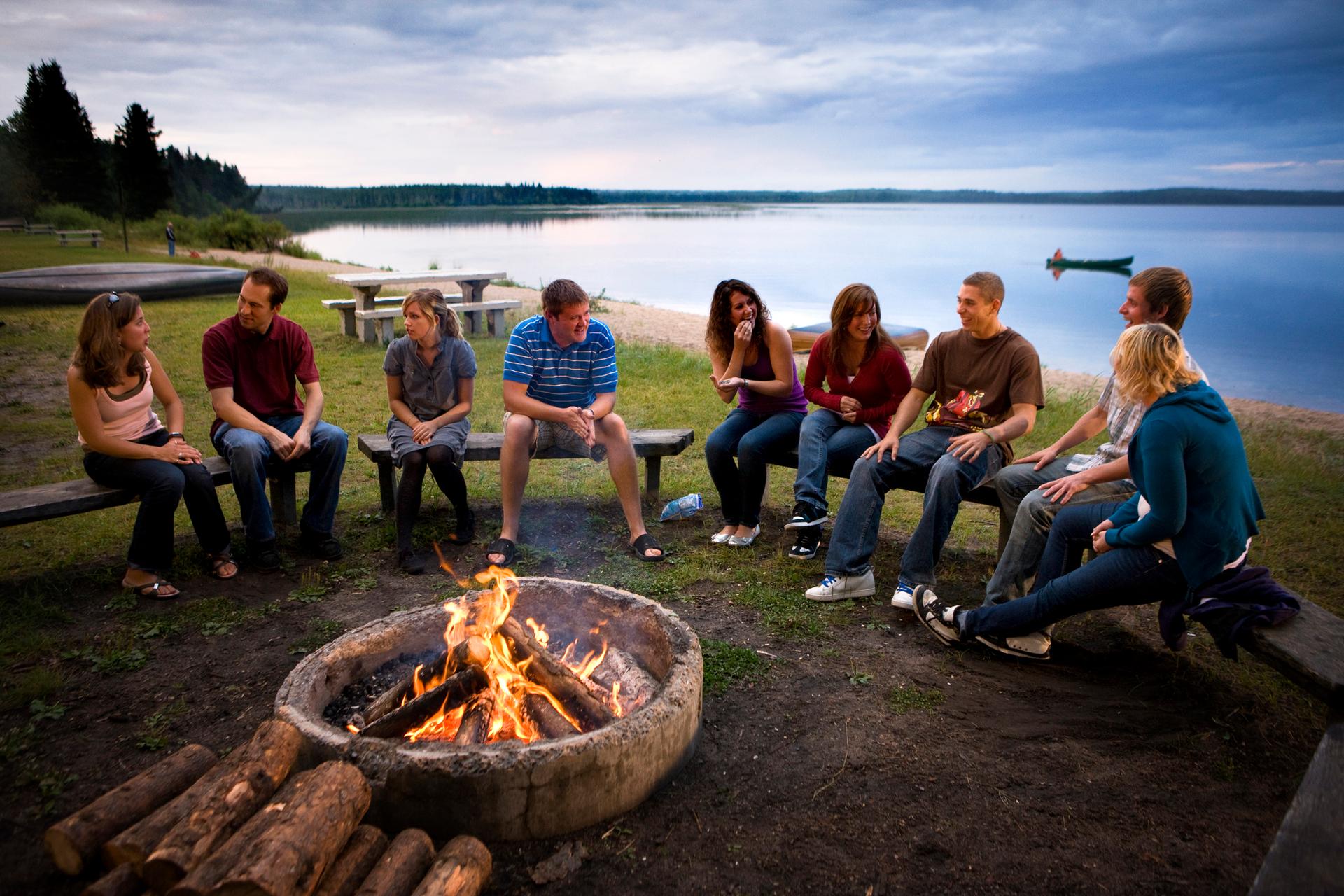
Things to do
Some of the most beautiful national parks in the country, landmarks in First Nations history, and great outdoor adventures make up the top attractions in Saskatchewan.
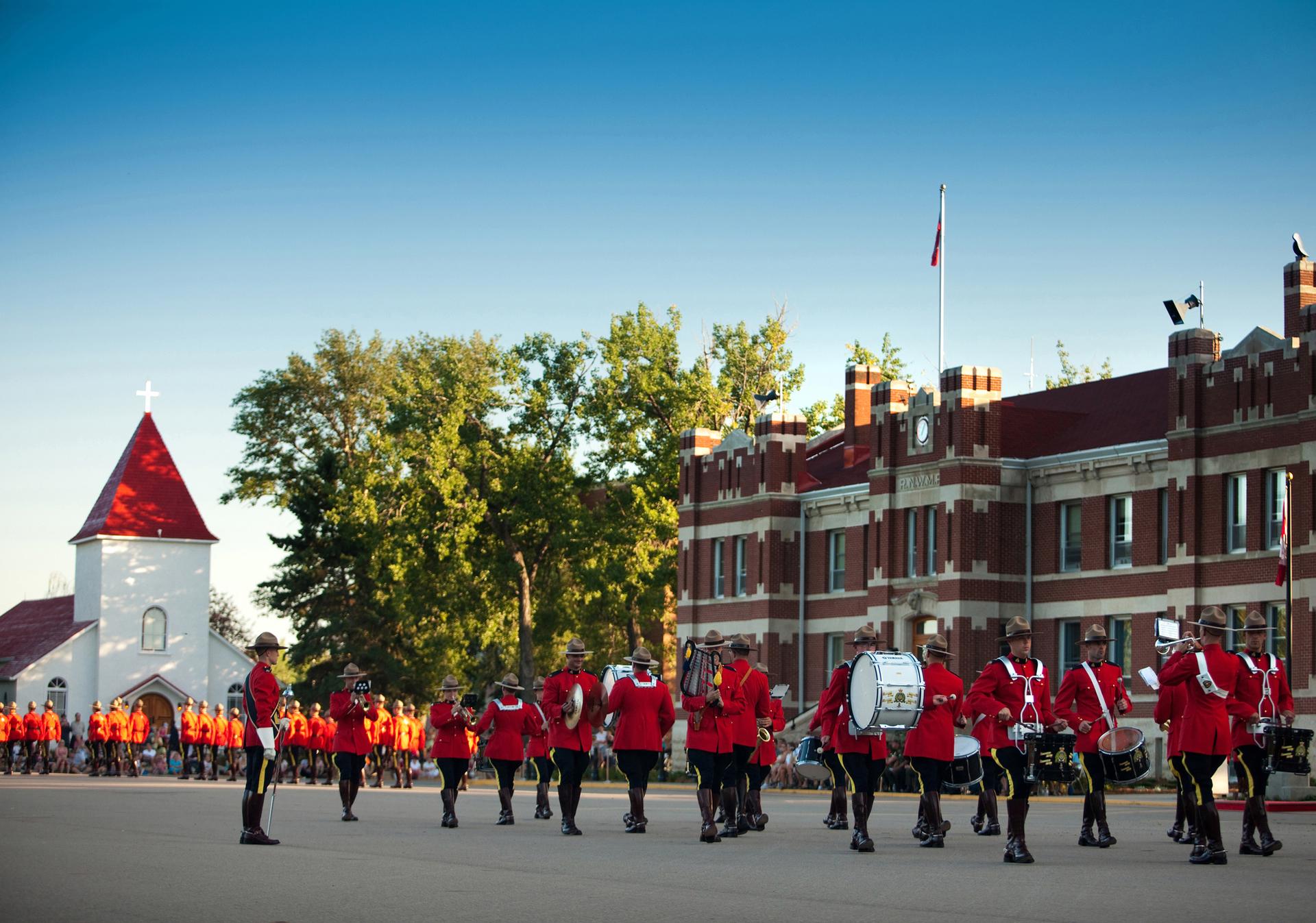
The RCMP Heritage Centre: Home of the Mounties
Mounties are right up there with beavers and politeness when it comes to icons of Canada, but they're far more than just the red suits and cool hats. The Royal Canadian Mounted Police is Canada's well-respected national police force, which has helped shape and protect our country and identity since 1873. This legacy is put on display at the RCMP Heritage Centre External Link Title , located near the historic RCMP Depot Division where all Mounties are trained. The center uses art exhibits, multimedia and more to highlight the rich story of the RCMP. Cap off your visit with the Sergeant Major's Parade, where drill staff work the cadets through roll call, inspection and more.
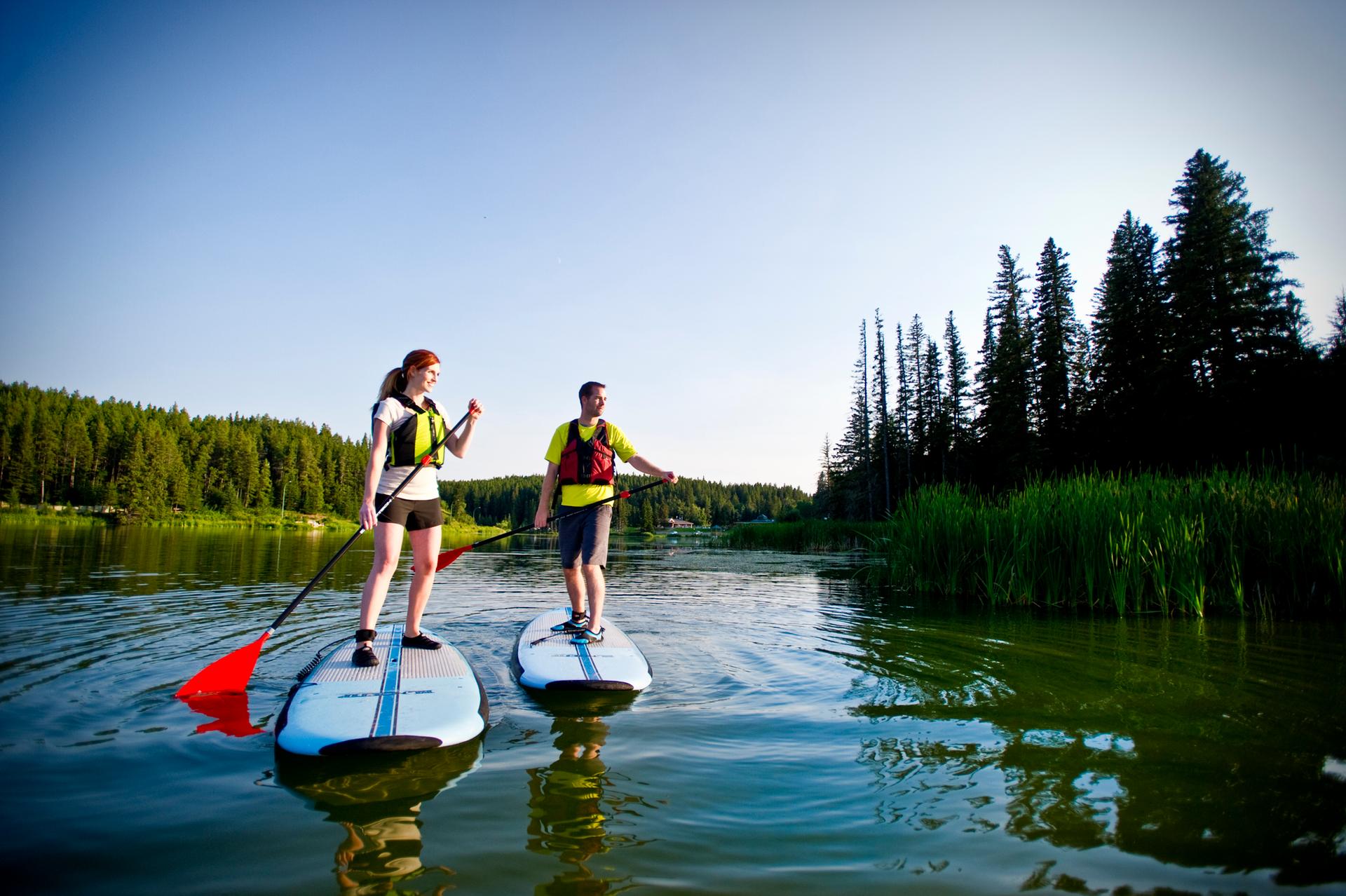
Cypress Hills Interprovincial Park
No, this isn't a rap venue. Cypress Hills Interprovincial Park External Link Title is a must-visit attraction for outdoor lovers. The park is located in the southwest corner of Saskatchewan and is named for the Cypress Hills that rise 1,900 feet above the surrounding terrain. Cliffs, lookout points, and forest trails are all there to be enjoyed and explored. The area is a Dark Sky Preserve, which means almost no unnatural light will impede your incredible view of the stars, planets and satellites in the night sky. Go camping, fishing, hiking, ziplining, canoeing, skiing, and even golfing. Try a new career as a ranch hand at a working cattle ranch or as a paleontologist, examining dinosaur bones. Visit local restaurants or the Cypress Hills winery. There really is just no way to describe everything this place has to offer in a short paragraph. You're just going to have to see it for yourself.
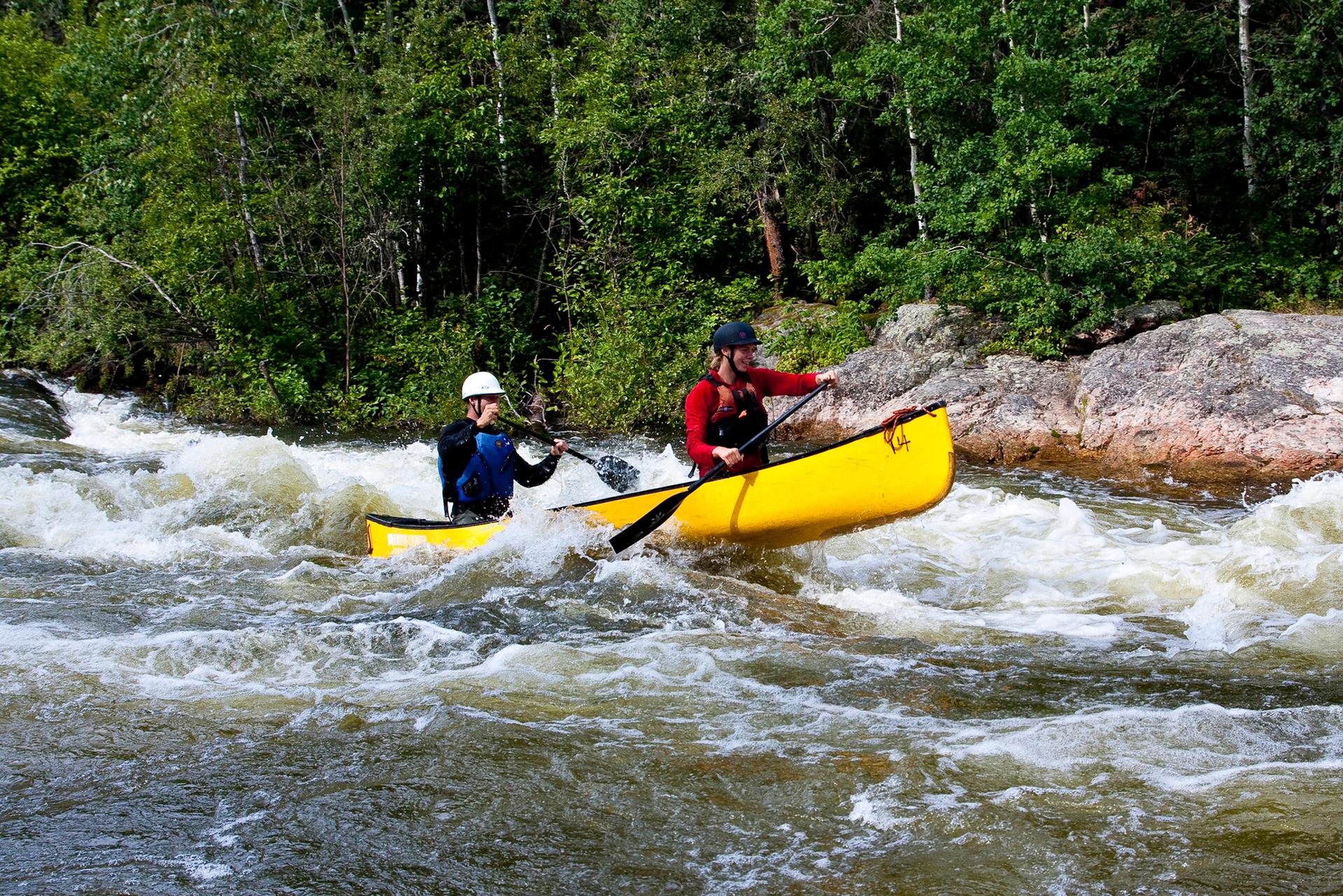
The Churchill River
For centuries, the Churchill River was used by local First Nations as a travel and trade route. When explorers and voyageurs began visiting the region, the river continued to serve that same purpose. Today, the Churchill is where adventurers can ride the whitewater and make the memory of a lifetime. The mighty waterway is full of rapids and drops that draw out paddlers from around the world. The river connects several major lakes and natural landmarks, including the Nistowiak Falls, the tallest waterfall in Saskatchewan. It’s also a great place to try and spot moose on the shores and bald eagles overhead, or try your hand at angling for walleye, northern pike, and several other species of fish.
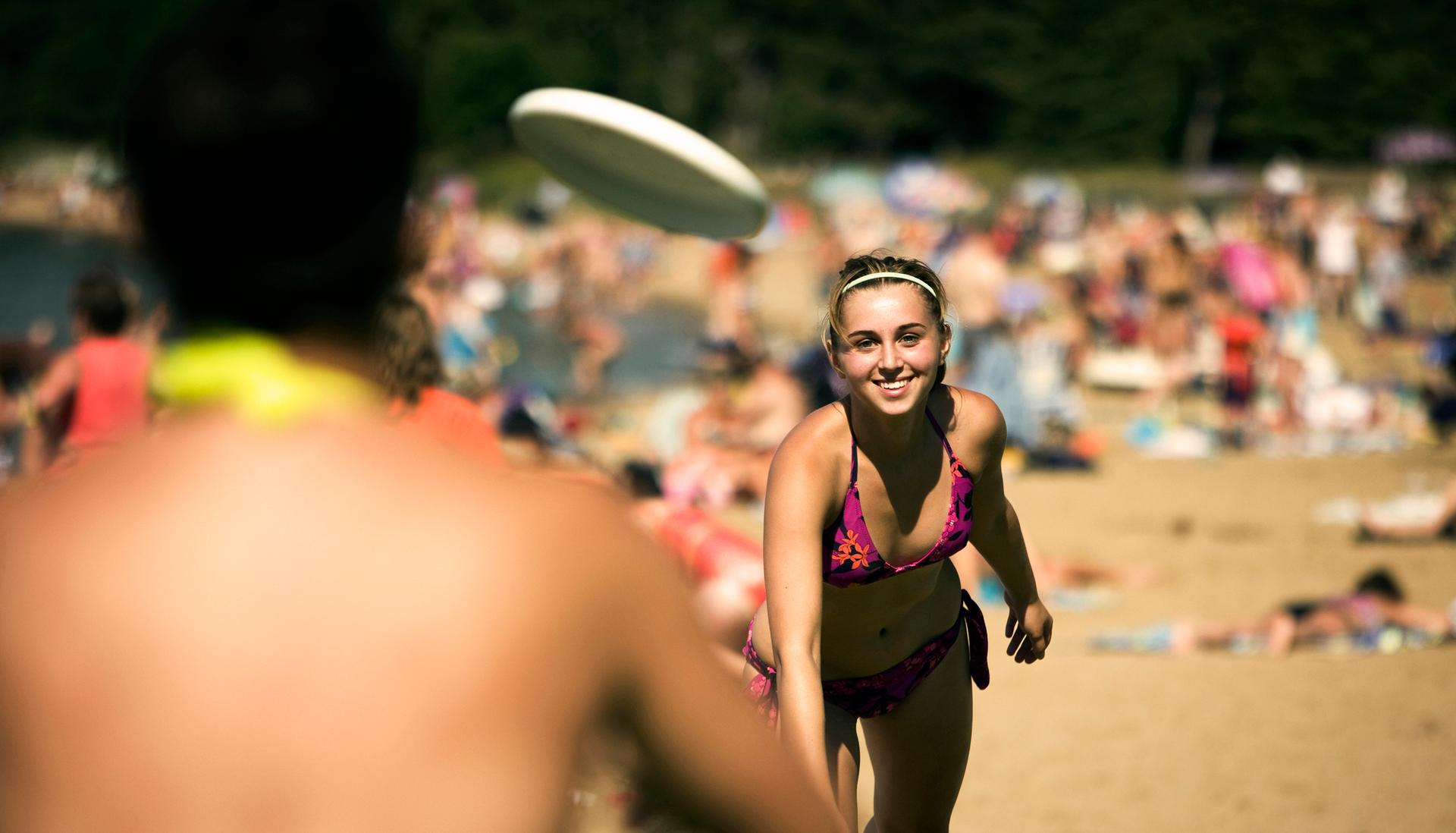
Prince Albert National Park
Named one of Canada's "50 Places of a Lifetime" by National Geographic, Prince Albert National Park External Link Title is one of the most popular parks in the country. At nearly 1,500 square miles, you're not going to see it all in one go, but several scenic driving tours will allow you to experience many of the highlights--including the possibility of seeing free-roaming plains bison. Then, leave the car behind for a guided hike or venture out on your own on a bike, boat, or skis (or heck, maybe on a wakeboard). Swim and tan at the many backcountry lakes and six beaches or take a canoe trip to visit the cabin of famous conservationist Grey Owl, whose story was captured in a 1999 film of the same name starring Pierce Brosnan.
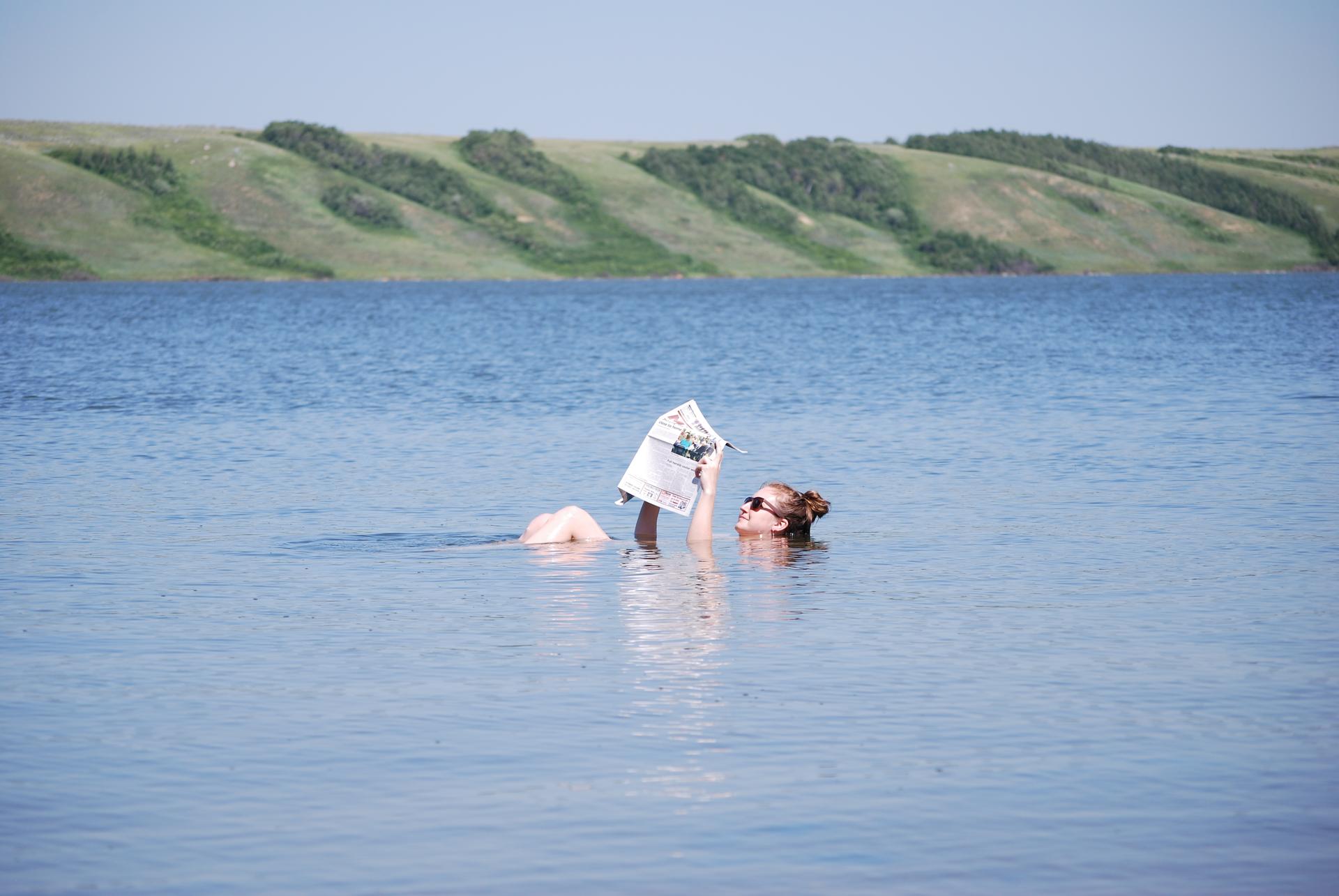
Little Manitou Lake
How do you like the sound of a combined spa/swimming day? That's what's in store on any visit to Little Manitou Lake. This unique lake is filled with briny water that apparently possesses natural skin and body care properties, not unlike the Dead Sea in Israel. These properties take their origins in the concentrations of mineral salts, magnesium, silica, potassium, and other minerals found in the water. Go for a float to relax and rejuvenate your body. Once you feel better, you can enjoy all of the attractions in the surrounding community External Link Title , from golfing, to sailing, and even great shopping.
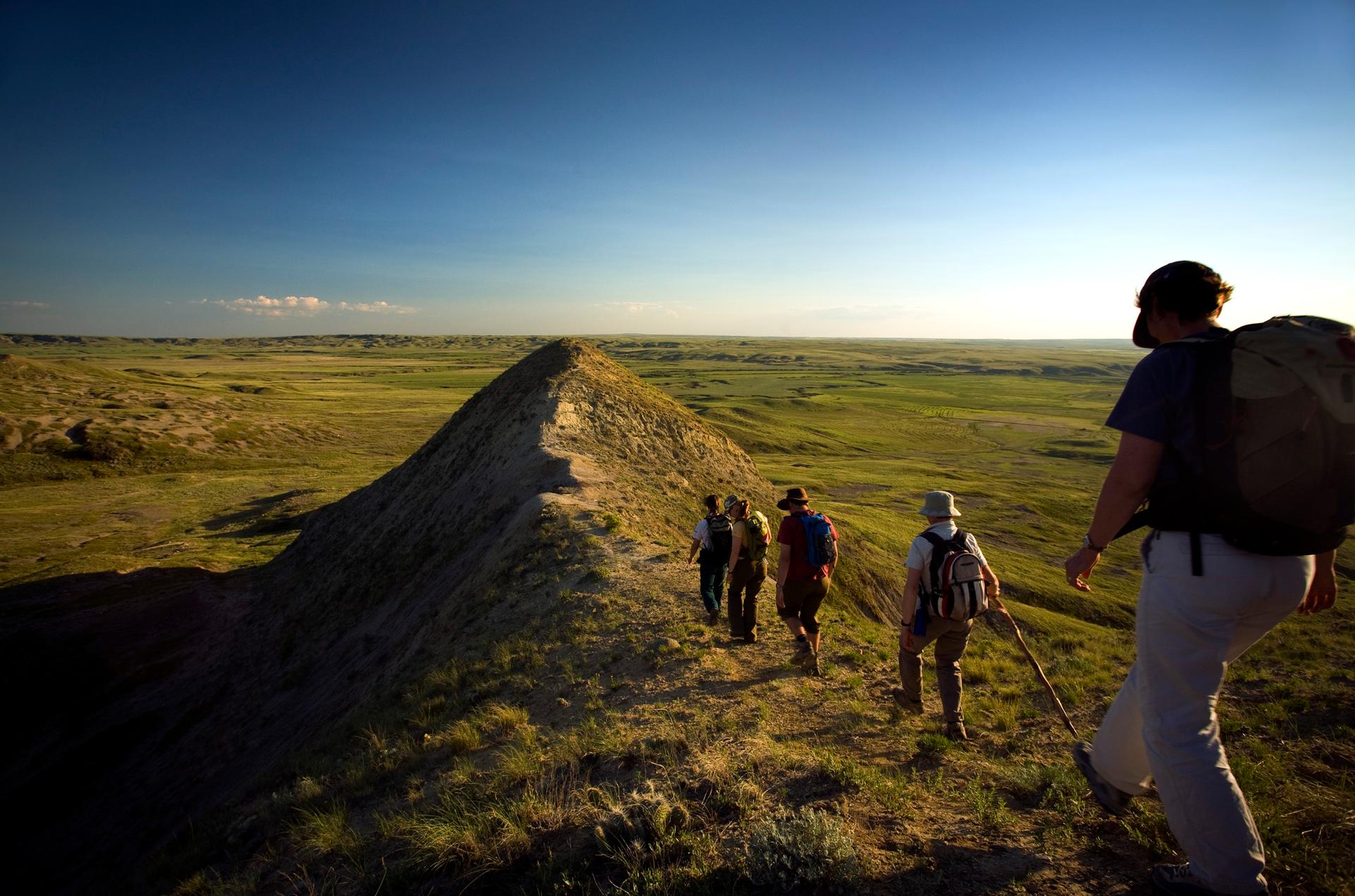
Grasslands National Park
When you imagine the prairies in your mind, the wide grassy plains, the sea of green, the bison herds, you're essentially picturing Grasslands National Park External Link Title . One of two national parks in Saskatchewan, Grasslands is a great place to experience preserved prairie land and find your home on the range. Take a prairie safari that will bring you close to bison, burrowing owls, eagles, antelope and black-tailed prairie dogs. Visit an archeological dig and learn from a paleontologist, or saddle up a horse and join a cowboy on the open range. Hike 70 Mile Butte, which rises 328 feet above the surrounding plains, and end your night with an unobstructed view of the stars, as the park is a designated Dark Sky Preserve. Close to the Montana border, the park is a must-stop for any road trippers.
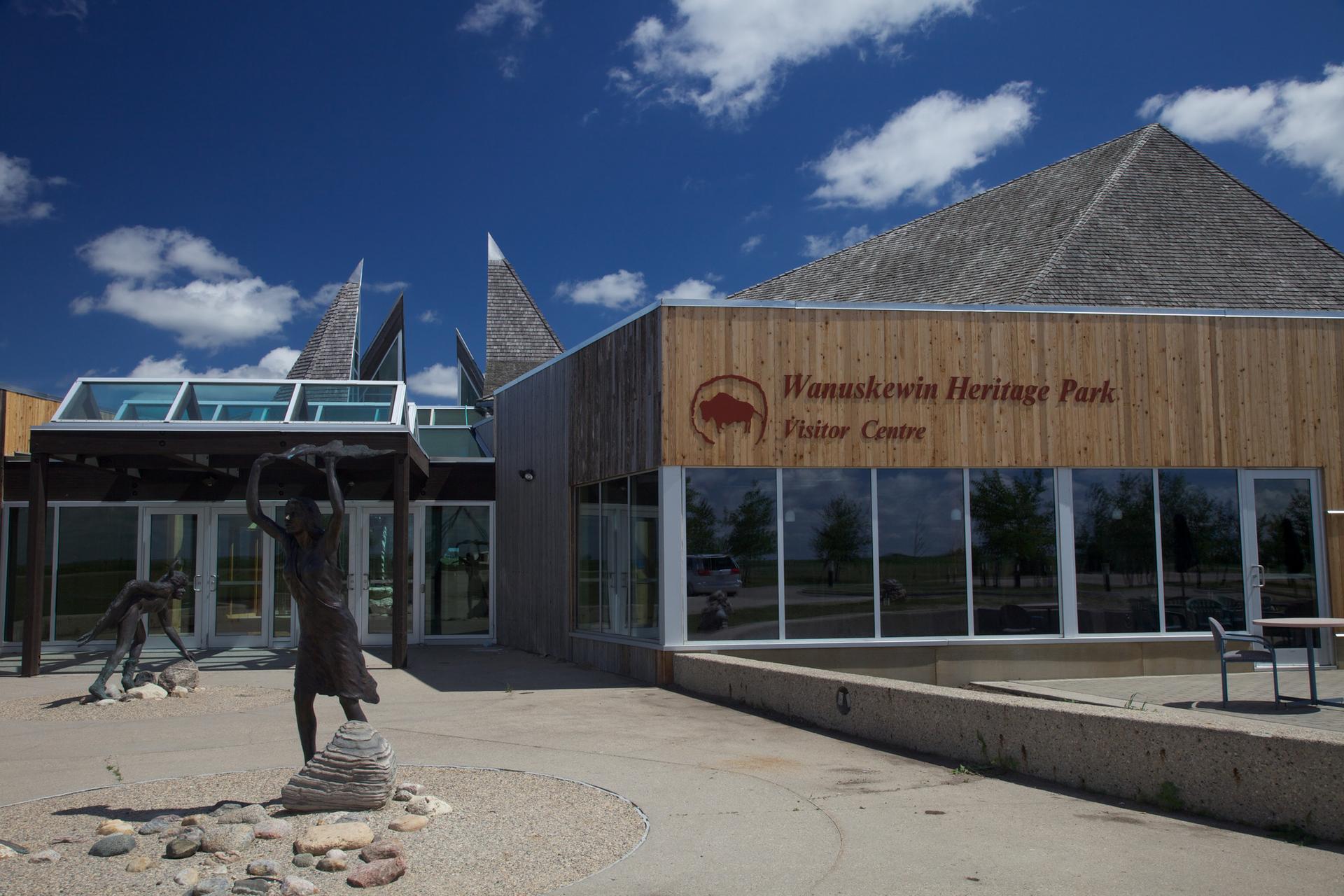
Wanuskewin Heritage Park
For over 6,000 years, Wanuskewin Heritage Park External Link Title was a meeting place for indigenous peoples of the Northern Plains. Long before the pyramids, the Pantheon or the Great Wall of China, Saskatchewan's First Peoples gathered here to hunt buffalo, worship and celebrate. Now, the park is a place to learn about that culture and that history. Explore interpretive trails that wind through the valley. Visit archeological digs full of tipi rings, stone cairns, pottery fragments, animal bones and more. Stay overnight in a tipi and listen to traditional stories around a campfire as you enjoy tea and fresh bannock. Wanuskewin is really an incredible opportunity to immerse yourself in the culture of an ancient people.
Milton Lake Lodge
Milton Lake Lodge External Link Title is a fly-in fishing destination (with a lodge and outpost camps) in the remote wilds of Saskatchewan. Don't let its location scare you; it's well worth the flight for any angler. The lakes in this area of Northern Saskatchewan are known for their huge fish. Every time you throw a line in these waters, you have a chance at a massive northern pike, a powerful lake trout, or a feisty arctic grayling.
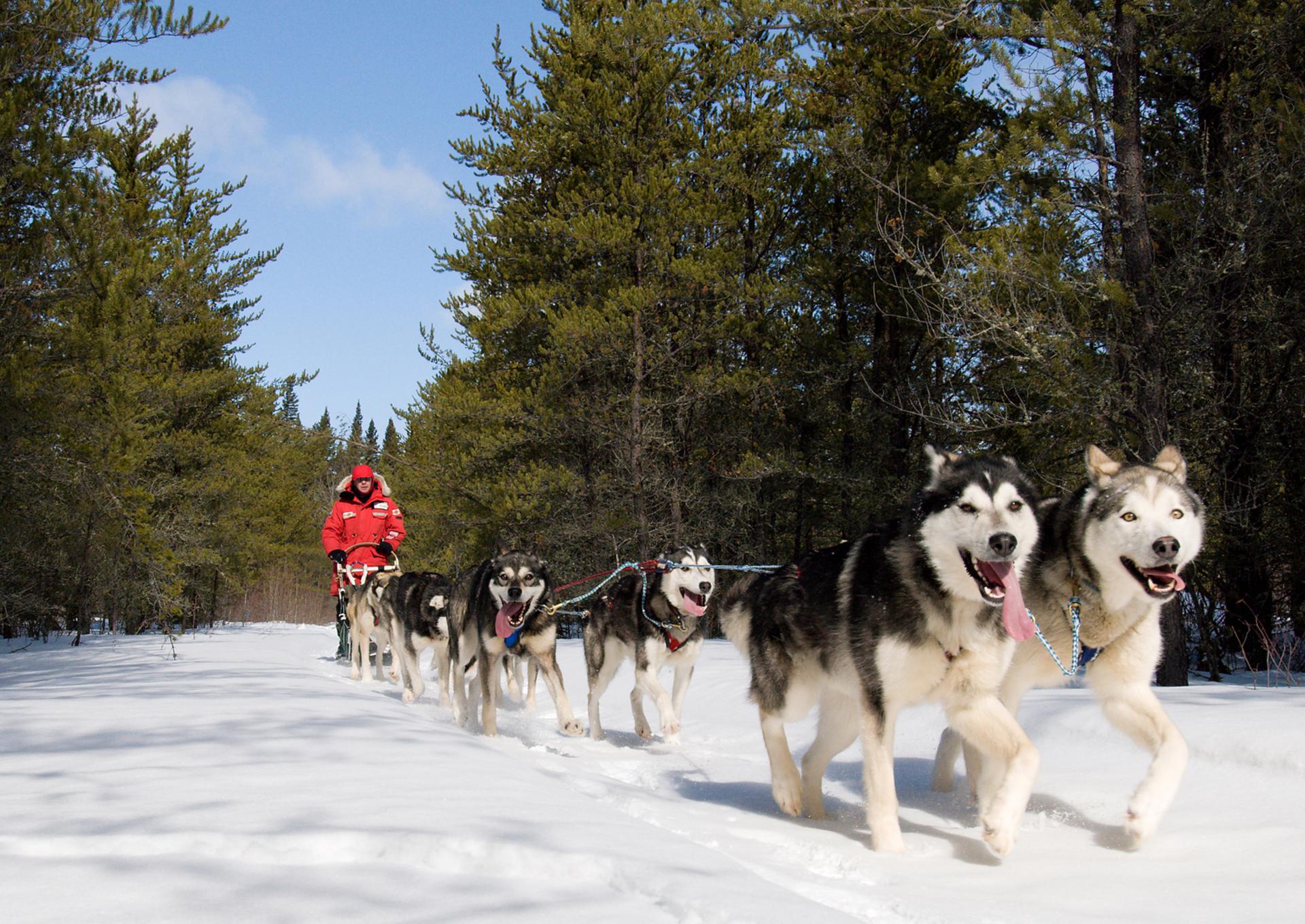
Sundogs Excursions
Want to leave the city behind? Explore the million-acre wilderness of Northern Saskatchewan's boreal forest in winter by dogsled, with Sundog Excursions External Link Title . Learn to harness and mush Alaskan husky sled dogs as you take in the beautiful terrain. Spot lynx, owls and moose. Strap on snowshoes and follow fox tracks. Listen to wolves howl in the serene, silent woodland. Gain a deeper understanding of this unique eco-system while in the company of an imaginative nature interpreter. Spend your nights in a 4-star lodge dining local on elk, bison and Saskatoon berries, or choose to sleep rustic among snow-covered trees in a canvas trapper's tent warmed by a wood stove.
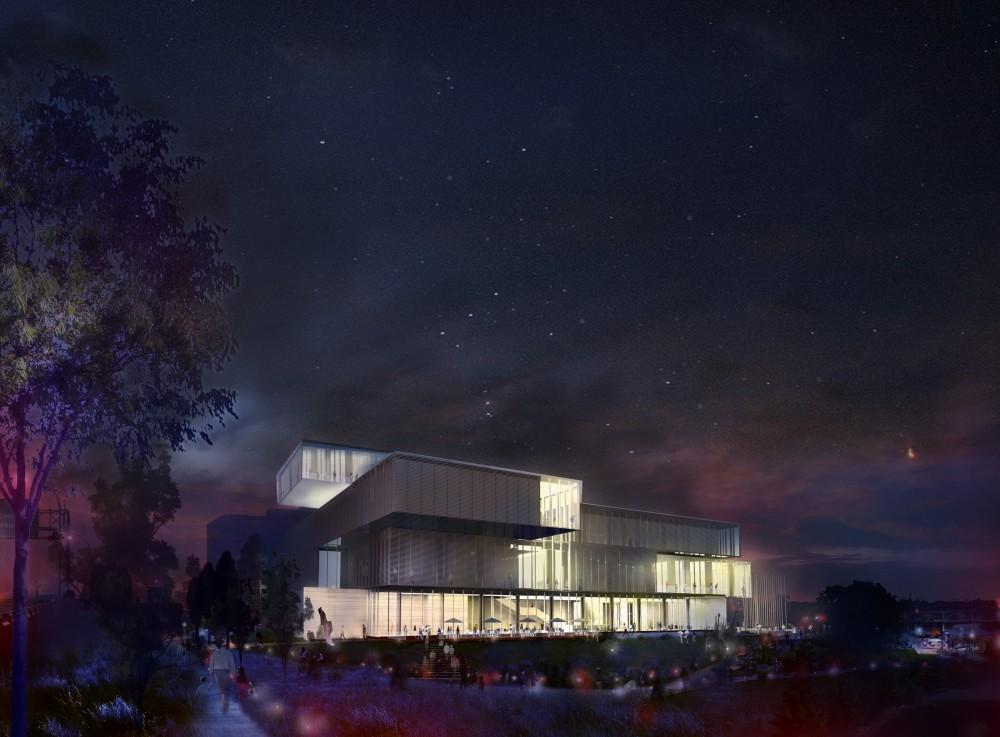
Remai Modern Art Gallery of Saskatchewan
If you can't make your trip out to Saskatchewan this year, you might actually benefit from waiting. In 2017, a brand new art museum will open up on the shores of the South Saskatchewan River in Saskatoon. The Remai Modern Art Gallery of Saskatchewan External Link Title will be architecturally striking, having won an award from Canadian Architect magazine before construction even started. The museum's collection should be equally impressive, and feature the world's most comprehensive collection of Picasso linocuts as well as 23 of his ceramic works. If you're looking for a reason to visit Saskatchewan next year, this is it.
Get inspired
Other articles you might enjoy
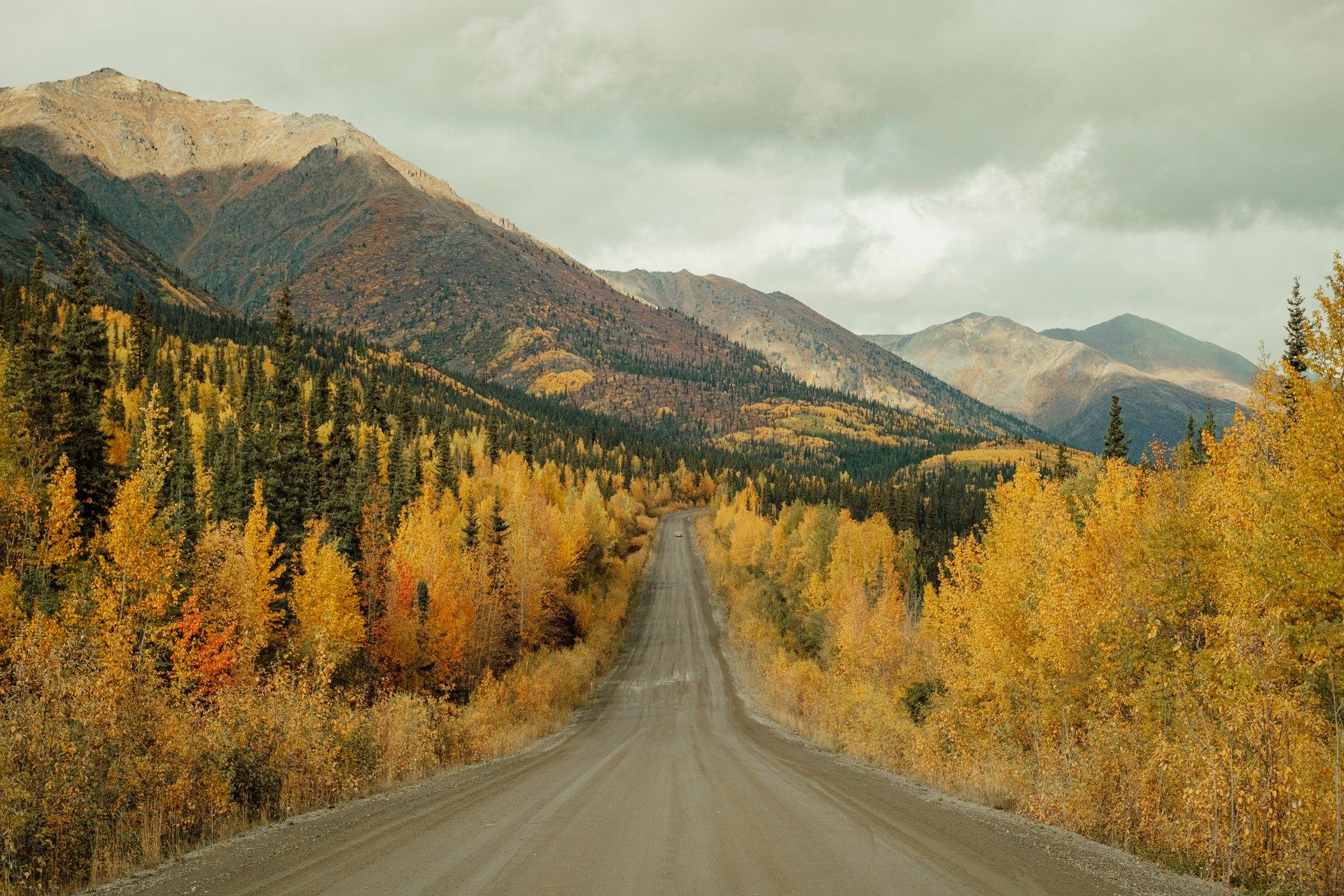
The top fall destinations across Canada
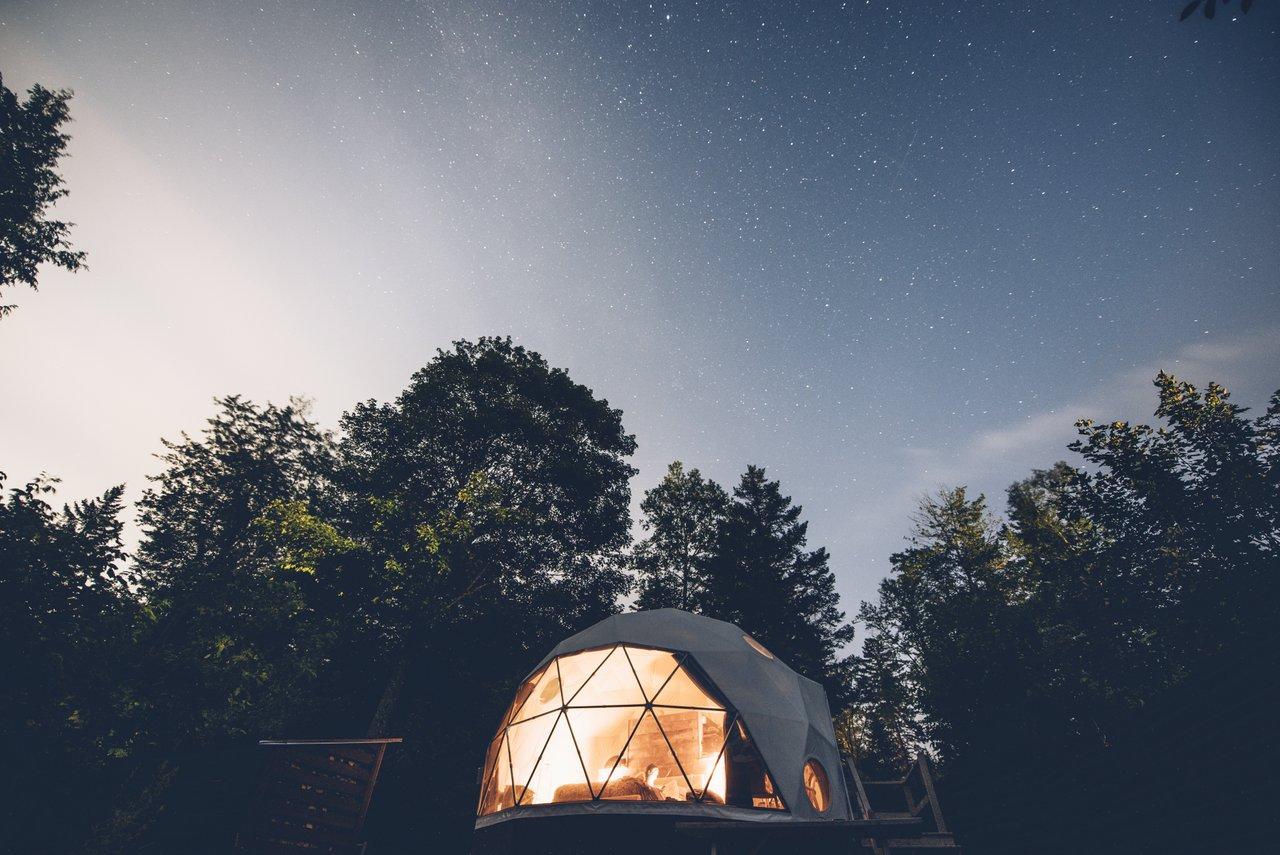
Best camping in Canada – with a twist
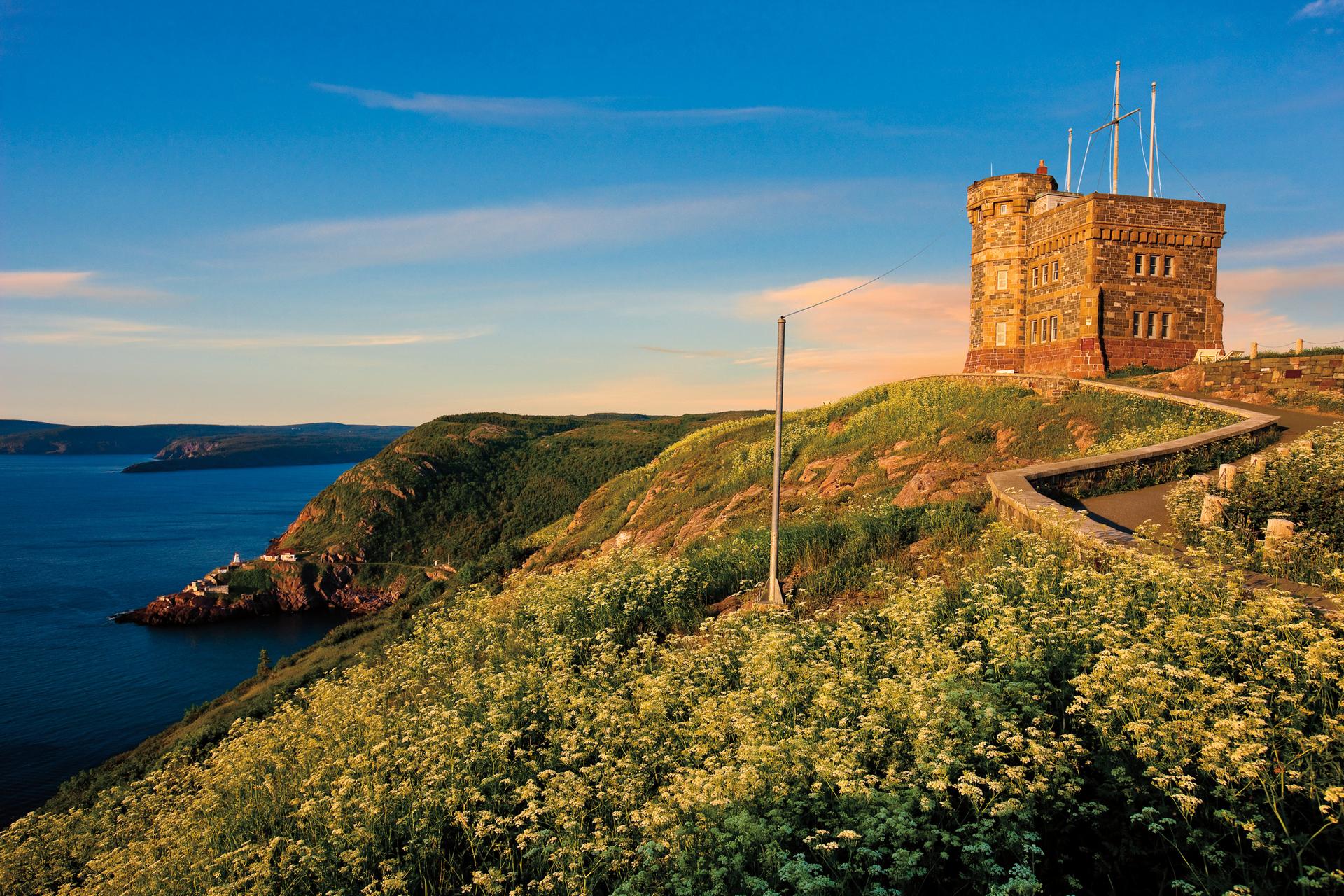
Fascinating national historic sites in Canada
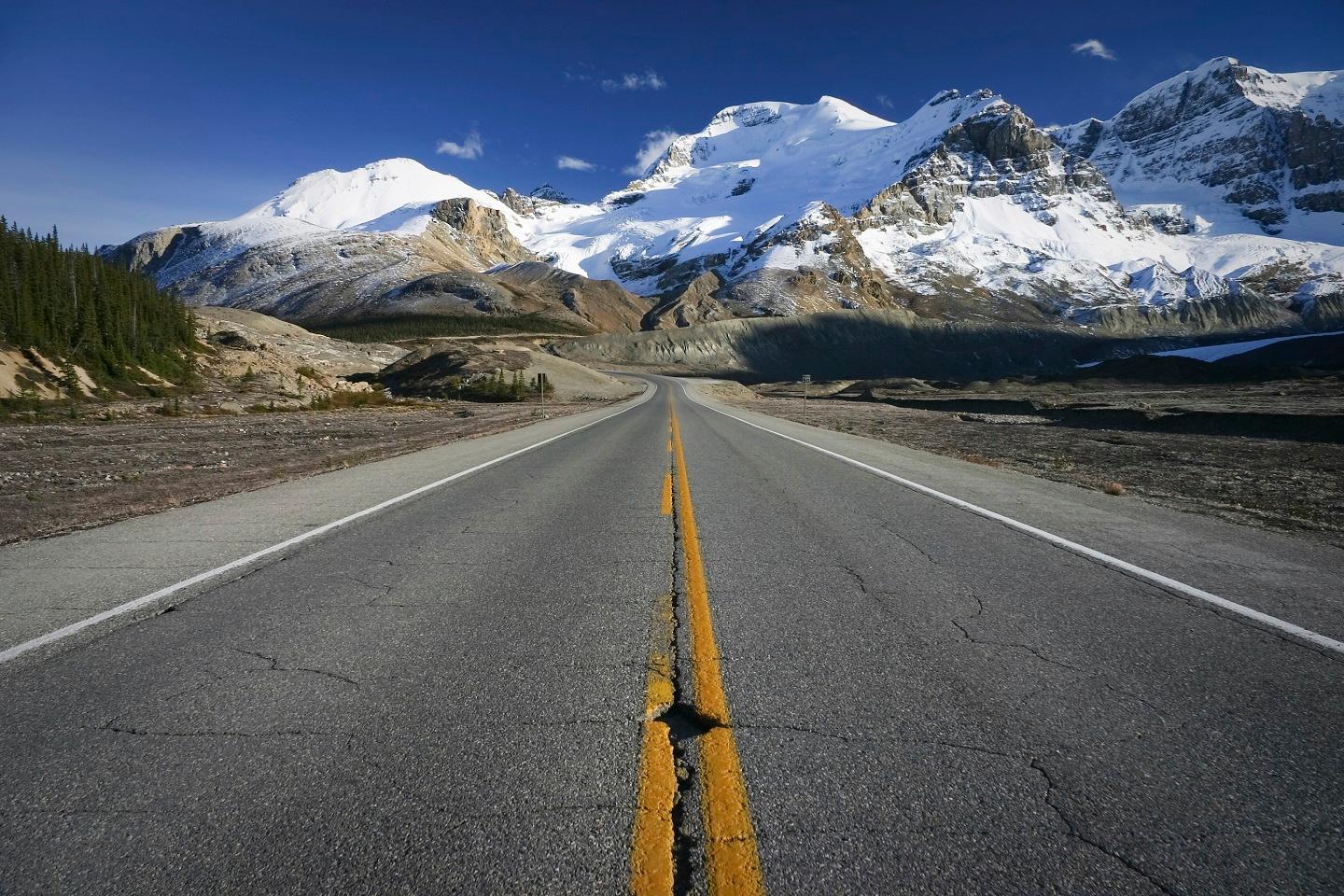
The best road trips in Canada

Golf getaway guide for Saskatoon
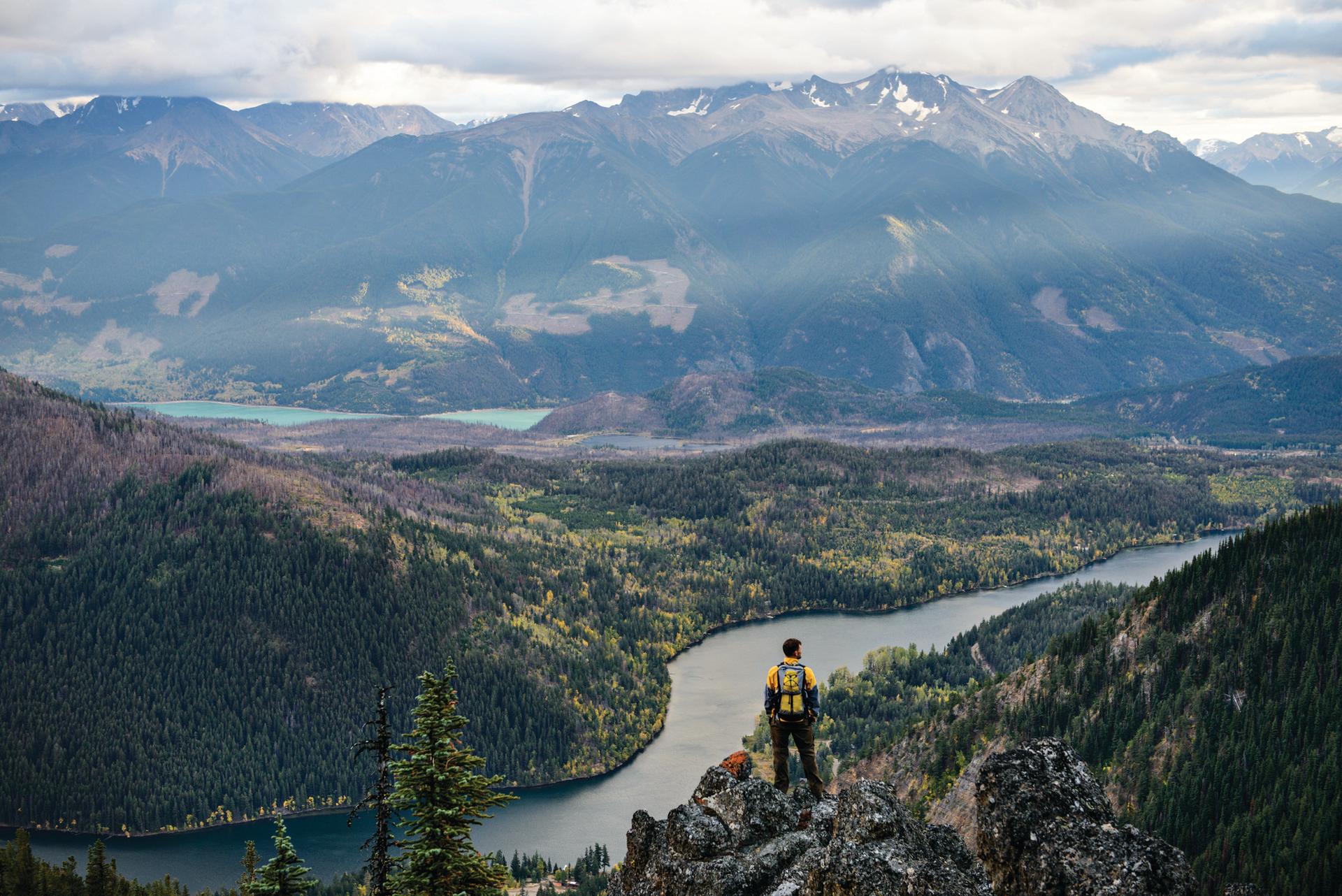
5 New Year’s resolutions to check off in Canada
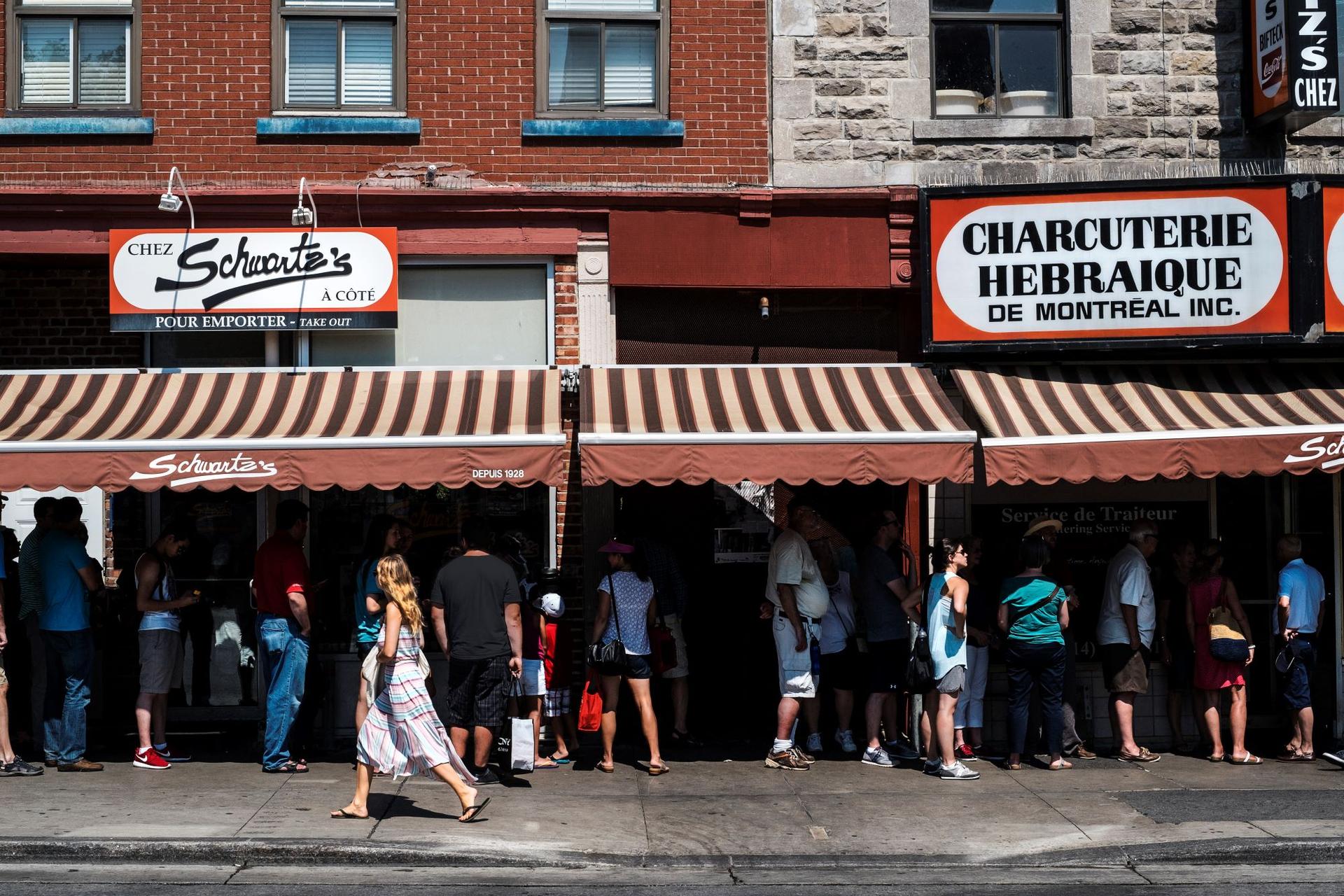
10 iconic Canadian dishes to try
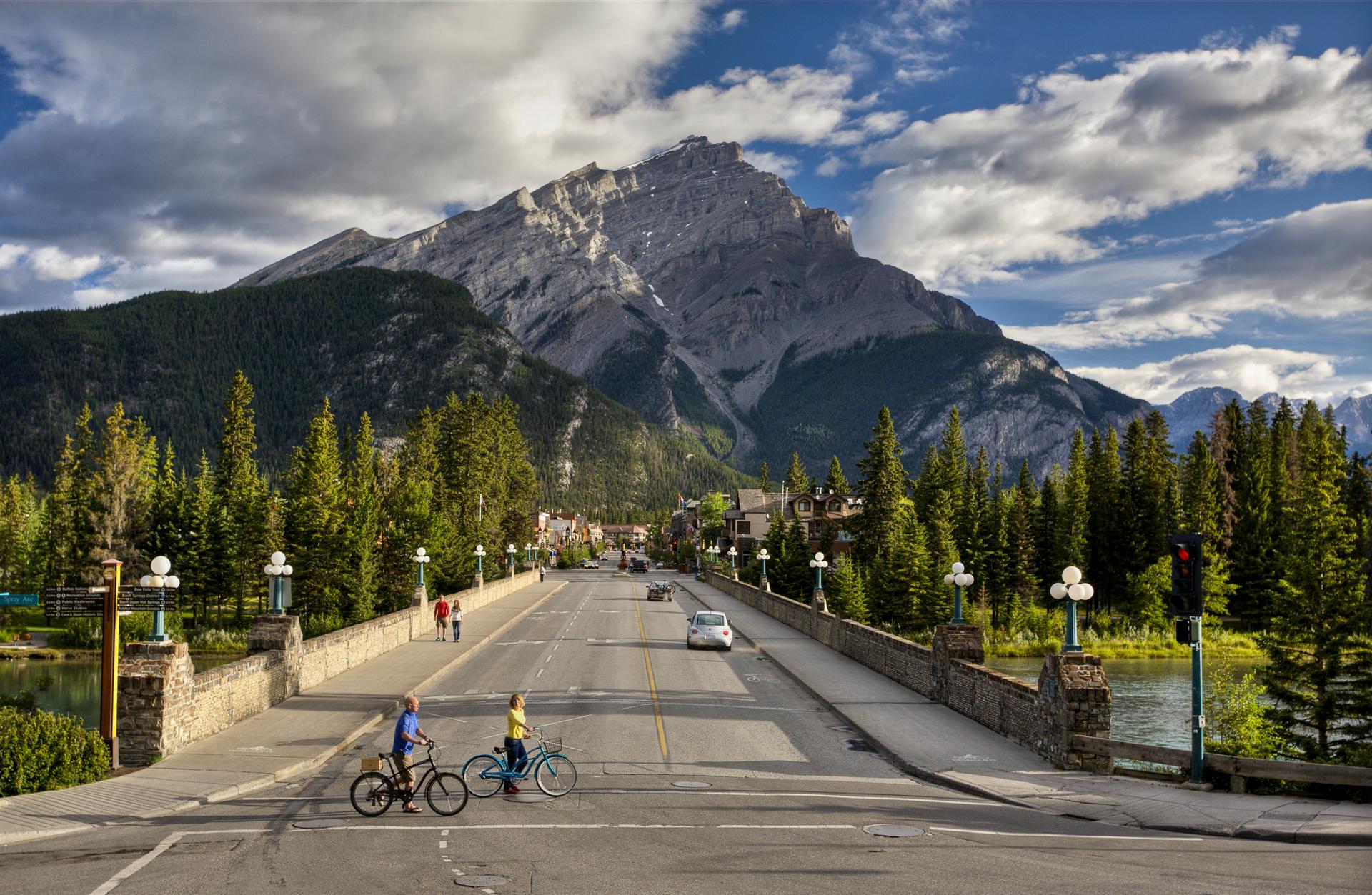
One national park to visit in every province and territory

Best food in Canada
- Other Links
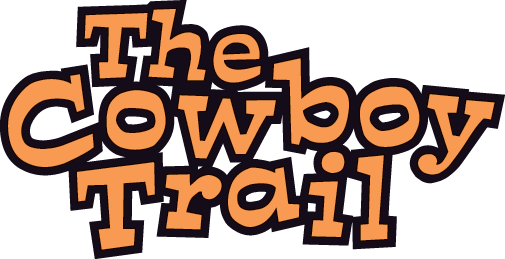
Featured Destinations
The outpost at warden rock, bragg creek, alberta, mayerthorpe, mackay’s ice cream, saddle up & drive alberta’s cowboy trail.
Nestled between the Rocky Mountains and the Canadian prairie, in the high ranching country of Alberta, is the historic Cowboy Trail. This scenic route along highway 22 through Canada’s Rocky Mountain Foothills features horseback trail rides, farm and ranch vacations, guest ranches, western themed attractions, accommodations, adventures, historic sites and western themed shopping.
For updates on what is happening on the cowboy trail, check out our calendar page or visit our facebook page which has updates from operators, images, videos and events along the trail.
This 700 km stretch of pavement is the source for western vacations and adventures. Stay at a guest ranch or working ranch at one of our farm and ranch vacations. Experience a horseback trail ride or pack trip with an outfitter into some of Alberta’s prettiest country. Take in a rodeo, festival or a pow-wow for a day. Visit one of our many world class attractions. Stay in a western hotel, motel, or pristine wilderness campground. From Cochrane or Longview you can turn west into the heart of the Rocky Mountains to experience Kananaskis Country or Banff National Park. Expect to be overwhelmed by the rugged mountain scenery and the pristine wilderness literally at your doorstep. To experience the real west, please contact any of our preferred suppliers on this web site. For custom travel arrangements, one of our specialty Tour Operators would be pleased to assist you.
Outfitters & Trail Rides
Book a professional outfitter or guide and experience a one-day horseback ride or a multi-day pack trip into some of Alberta's prettiest country.
Saddle Peak Trail Rides
Hustle trout fly fishing adventures, moose mountain horseback adventures, attractions.
From western museums to frontier towns, The Cowboy Trail has a number of partner attractions with an amazing amount of things to do and see.
Restaurants
Down-home, ranch-style cooking is still available for hungry folks on The Cowboy Trail where the food is served with a country vacation flavour.
Oldman River Brewing
Boundary ranch, ram river tours / south ram outfitters, red lodge guest ranch, sundre pioneer museum featuring the chester mjolsness world of wildlife exhibit, historic reesor ranch, town of pincher creek, cypress hills destination area, town of sundre, marv's classic soda shop and diner, original historic bragg creek trading post, trail riders of the canadian rockies, rocky mountain house national historic site, anchor d guiding & outfitting ltd., banff trail riders, erbn green cannabis co., home on the range adventure tours ltd., timberline tours ltd, mckenzie's trails west, don begg studio west bronze art foundry, enlightened herb cannabis.

23 Top-Rated Tourist Attractions in Canada
Written by Lana Law and Michael Law Updated Mar 29, 2024 We may earn a commission from affiliate links ( )
The second largest country in the world, Canada has no shortage of beautiful landscapes and interesting sights for travelers to explore. From coast to coast to coast, the country is home to vibrant and culturally rich cities, along with incredible natural wonders.
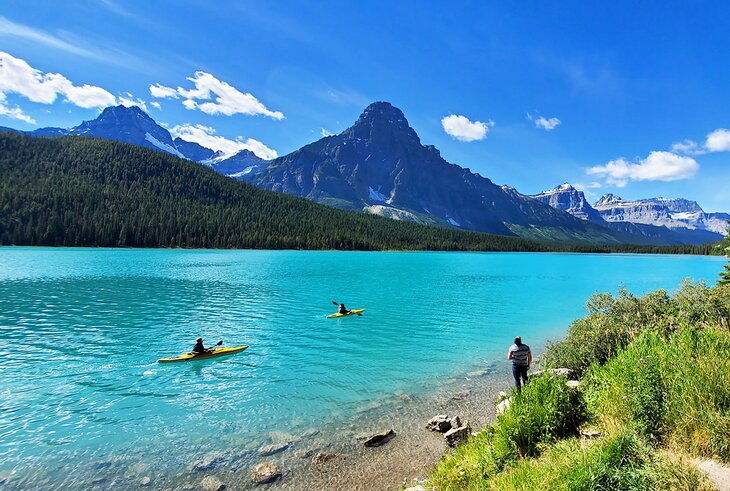
In Western Canada , the Rocky Mountains; the Okanagan Valley; and the cities of Vancouver, Victoria, and Calgary are some of the best places to visit and frequently dominate itineraries. In Central Canada , Niagara Falls, Toronto, Ottawa, Montreal, and Quebec City are some of the most popular tourist destinations.
For those who venture out to Canada's Atlantic Provinces in the east, the beauty of Gros Morne National Park , along with the cities of Halifax and St. John's, provide their own unique character.
Off the beaten path, but equally impressive, is Canada's North , where great rivers flow out to the Arctic Ocean, creating some incredible territory for canoeists, and where polar bears can be seen in the wild. Travelers can explore the remote beauty of places like Nahanni National Park ; Great Slave Lake; and the towns and cities of Churchill, Whitehorse, and Yellowknife .
For ideas to help plan your travels, see our list of top tourist attractions in Canada.
1. Niagara Falls
2. banff national park & the rocky mountains, 3. toronto's cn tower, 4. old quebec (vieux-quebec), 5. whistler, 6. ottawa's parliament hill, 7. st. john's signal hill national historic site, 8. old montreal, 9. polar bears of churchill, manitoba, 10. vancouver island, 11. bay of fundy, 12. victoria's inner harbour, 13. gros morne national park, 14. vancouver's stanley park, 15. calgary stampede, 16. canadian museum for human rights, 17. the okanagan valley, 18. cypress hills interprovincial park, 19. royal tyrrell museum in drumheller, 20. dawson city, 21. rideau canal, 22. algonquin provincial park, 23. nahanni national park reserve.
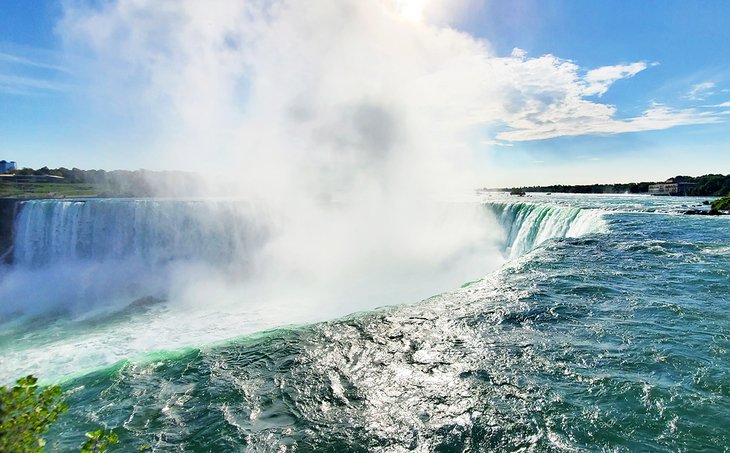
Niagara Falls is Canada's most famous natural attraction, bringing in millions of visitors each year. Located just over an hour's drive from Toronto, along the American border, these massive falls drop approximately 57 meters. You can see the falls at an astoundingly close distance from several key points.
Niagara Falls and the Niagara Gorge have been attracting tourists and daredevils for well over a century. Between the mid-19th and mid-20th centuries, there were numerous attempts to plunge over the falls in various types of homemade boats and barrels. This, along with tightrope walkers and other spectacles, led to the adjacent town of Niagara Falls developing a carnival-type atmosphere that still persists today.
Families will enjoy a walk down Niagara's outrageous Clifton Hill leading to the gorge and falls. Other popular things to do here include a cruise to the base of the falls, a trip up the Skylon Tower for a fantastic aerial view, and a look from the bottom of the falls on the Journey Behind the Falls experience.
- Read More: Top-Rated Tourist Attractions in Niagara Falls, Canada
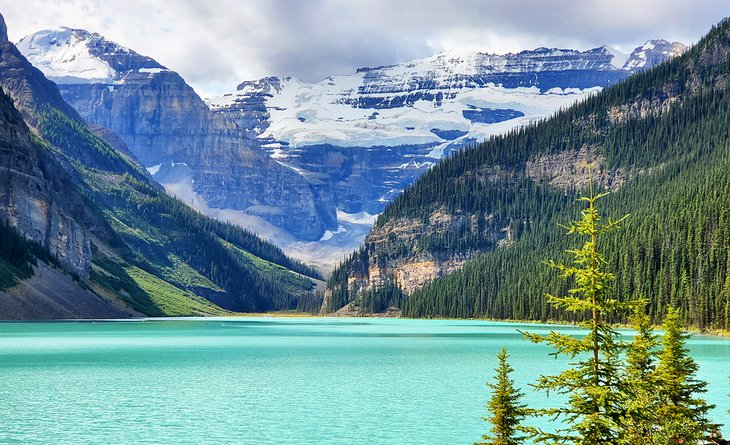
Banff National Park lies in the heart of the majestic Rocky Mountains in the province of Alberta and showcases some of Canada's most beautiful scenery. Turquoise-colored lakes, snowcapped peaks, and glaciers are all easily accessible in this stunning park. Take a scenic drive or head off on one of the best hikes in Banff .
The jewel of the park is Lake Louise , where green waters reflect the surrounding mountains and glaciers, and visitors can stroll easily around the shores. Just a short distance is Moraine Lake, another impressive alpine lake with an even slightly more dramatic surrounding.
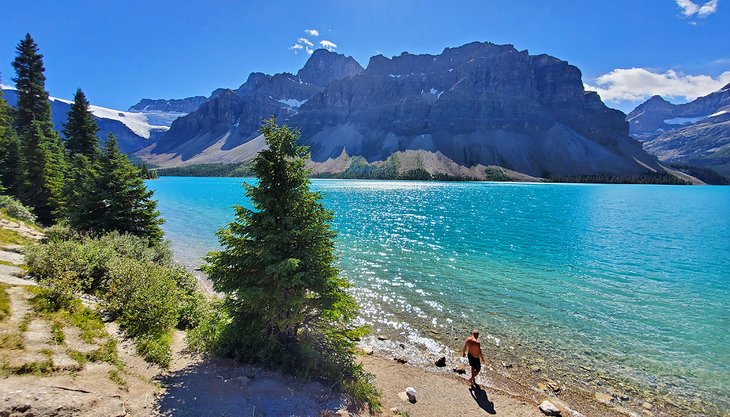
The Icefields Parkway , which runs from Lake Louise to Jasper, is an unforgettable drive and another major attraction in Banff. At the south end of the park is the lovely little town of Banff, providing all kinds of options for accommodation, shopping, dining, and nightlife.
Banff is also a major winter sports area and home to Lake Louise Ski Resort and Sunshine Village , two of Canada's best ski destinations.
- Top-Rated Tourist Attractions in Banff National Park
- Top Things to Do at Lake Louise
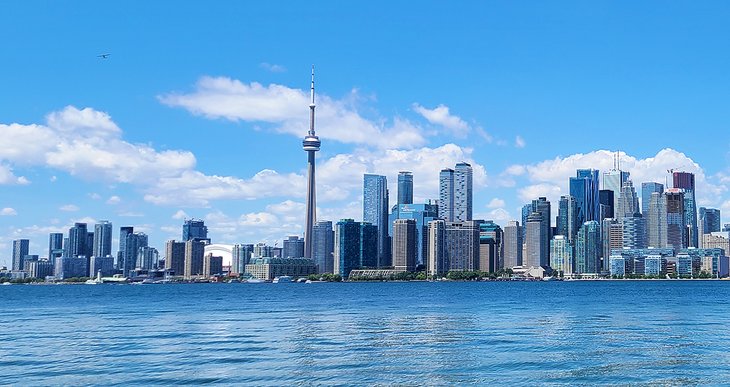
On the shores of Lake Ontario in Canada's biggest city is the iconic CN Tower, one of Canada's most famous landmarks. The tower stands an impressive 553 meters high and dominates the skyline.
At the top, you can find fine dining in the revolving 360 restaurant, and enjoy a meal while looking out over the city and lake. The LookOut and the Glass Floor offer beautiful views out over the entire area. For an added thrill, consider stepping outside of the enclosed area onto the metal walkway for the CN Tower Edgewalk. You'll be harnessed in and then be able to walk around the building, 116 stories or 356 meters (1,168 feet) above the ground below.
But even those who choose not to go up the tower will find themselves stopping to stare at the structure, which is visible from almost everywhere in the city. At night, the tower is lit in different colors.
- Read More: Top-Rated Tourist Attractions in Toronto
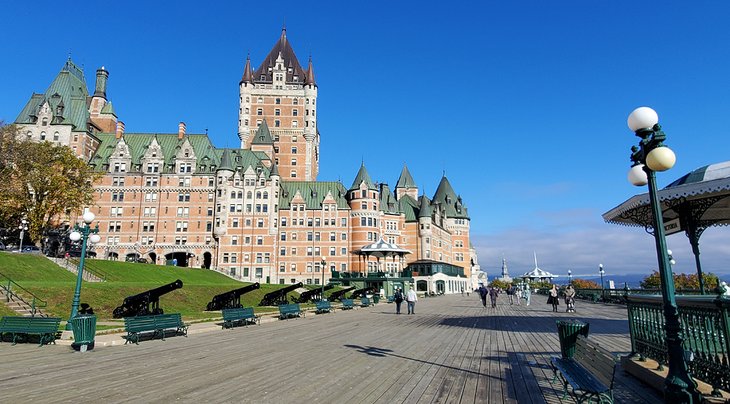
Old Quebec is a UNESCO World Heritage Site and one of Canada's historic gems. Spread across the Upper and Lower Town of Quebec, this area contains the city's most historic buildings. The Lower Town, along the St. Lawrence River, is the site of the original settlement and home to the outstanding Fairmont Le Château Frontenac , as well as numerous other treasures. The Upper Town rests on 100-meter-high cliffs and is home to the Citadel , the Plains of Abraham , Place d'Armes , and the Parque Historique de l'Artillerie .
Old Quebec is one of Canada's most popular historical areas and is well developed for tourism. In addition to the historical sites, other highlights include artists displaying their works on Rue du Trésor; interesting museums, like the Musée de la Civilisation; and unique shops and restaurants.
- Read More: Top-Rated Tourist Attractions in Québec City
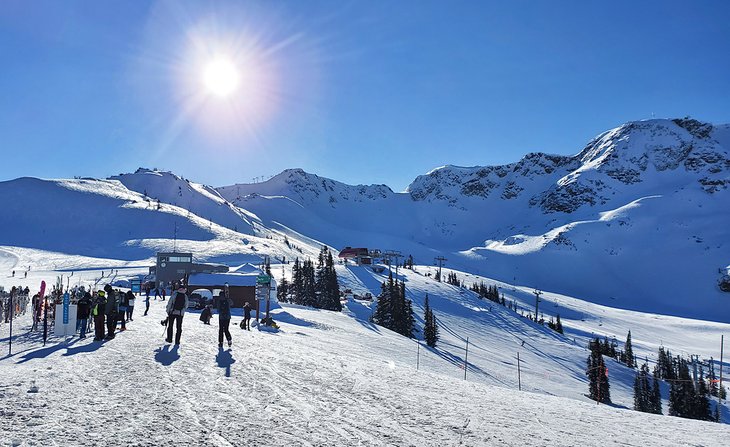
Just a two-hour drive from Vancouver is the famous ski resort of Whistler Blackcomb and the year-round resort destination of Whistler. While Whistler has always been an important winter sports area, it has also developed into a popular summer destination, with golf, mountain biking, and a lively town atmosphere no matter when you visit.
The village gained international attention in 2010 when it became one of the locations for the Winter Olympic Games. The area offers world-class skiing, hotels, and dining, as well as a variety of outdoor recreational opportunities and beautiful mountain scenery.
- Read More: Top Things to Do in Whistler & Easy Day Trips
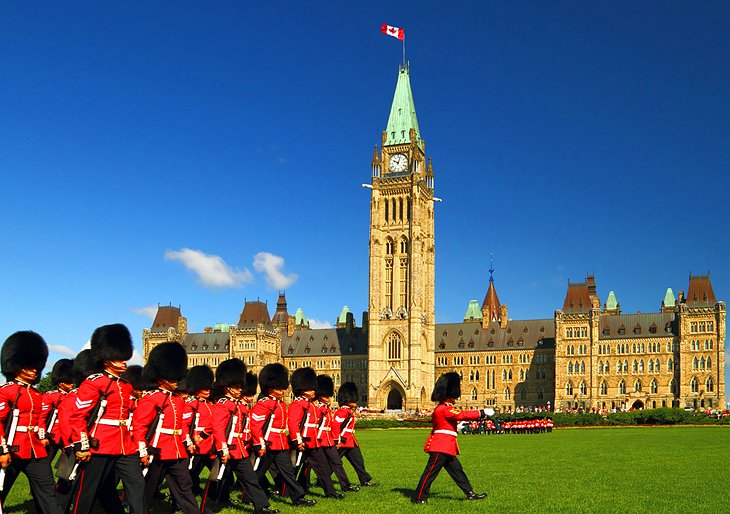
Ottawa's Parliament Hill stands high above the Ottawa River and is graced by the Neo-Gothic-style Parliament buildings built in the last half of the 19th century. The most prominent feature is the Peace Tower, which divides the House of Commons and the Senate on either side. In front of the Parliament buildings is the Centennial Flame , lit in 1966 to commemorate the centenary of the Canadian Confederation, and behind the buildings is a sculpture garden.
In the summer, the Changing of the Guard takes place on the front lawn of the Houses of Parliament, weather permitting. Below Parliament Hill, a lovely walk runs alongside the Ottawa River.
Note that the Parliament Buildings will be undergoing significant renovations until 2030.
- Read More: Top-Rated Tourist Attractions in Ottawa
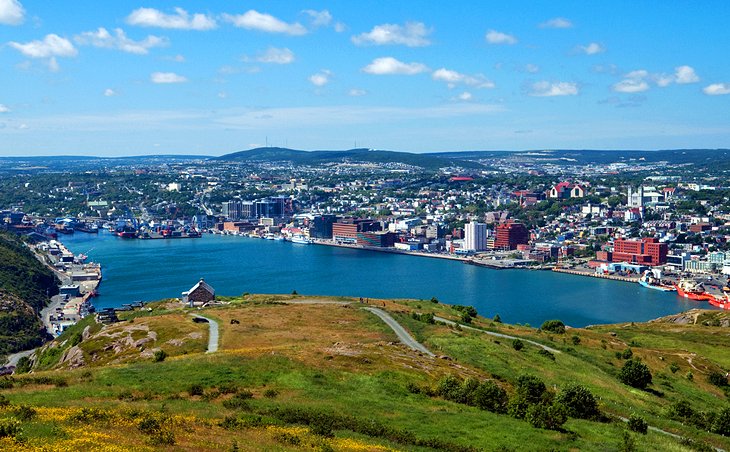
At the entrance to St. John's harbor, overlooking the city and sea, is Signal Hill National Historic Site. It was here, in 1901, that the first wireless transatlantic signal was received. It also played a strategic role in the Seven Years' War with France, although the current fortifications were built during the hostilities of 1812.
The Cabot Tower is one of the key sites of Signal Hill. It was built in 1897 to mark the four-hundredth anniversary of the discovery of Newfoundland. It also now commemorates Guglielmo Marconi's reception here in 1901 of the first transatlantic radio telegraphy signal, transmitted over a distance of 2,700 kilometers from Poldhu in England.
In the tower are exhibitions on the history of Signal Hill and the history of communications (with a special section on Marconi). From the top, you can enjoy panoramic views of the city and the coast as far as Cape Spear - the most easterly point of North America.
- Read More: Top-Rated Tourist Attractions in St. John's, Newfoundland
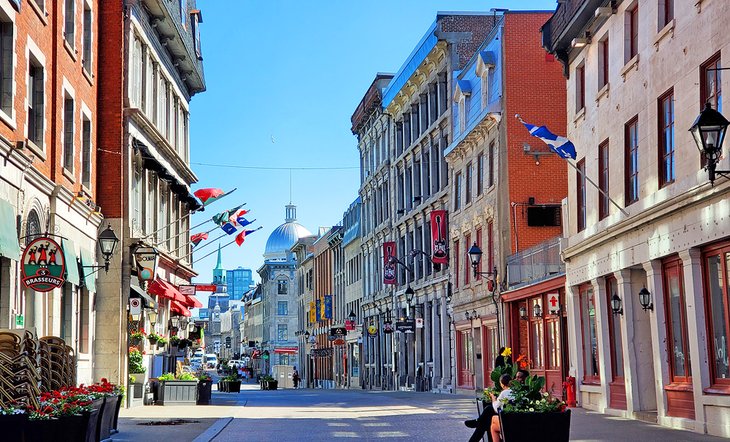
Old Montreal, lined with lovely historic buildings, is a place to go for great shopping and fine dining. While Montreal itself is a vibrant modern city, Old Montreal, down by the waterfront, is where you'll want to go to soak up the atmosphere.
Some of the must-see places in Old Montreal include Rue Bonsecours and the landmark Marché Bonsecours in the old town hall building, the interior of the beautiful Notre-Dame Basilica , the lively Place Jacques-Cartier , and the 1870s City Hall .
- Top-Rated Tourist Attractions in Old Montréal
- Top-Rated Tourist Attractions in Montreal
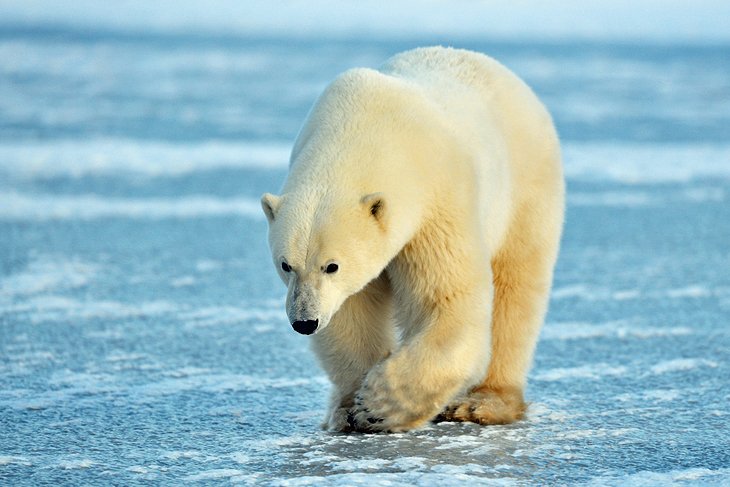
One of Canada's most unique attractions is the polar bear migration which sees these beautiful creatures make their way from land out onto the ice in Hudson Bay, near the town of Churchill in Northern Manitoba .
This small community opens itself up to tourists each fall. Tours take visitors out in tundra buggies with caged windows for close encounters with the polar bears. The prime viewing time occurs in October or November while the bears are waiting for the water to freeze before heading out onto the ice.
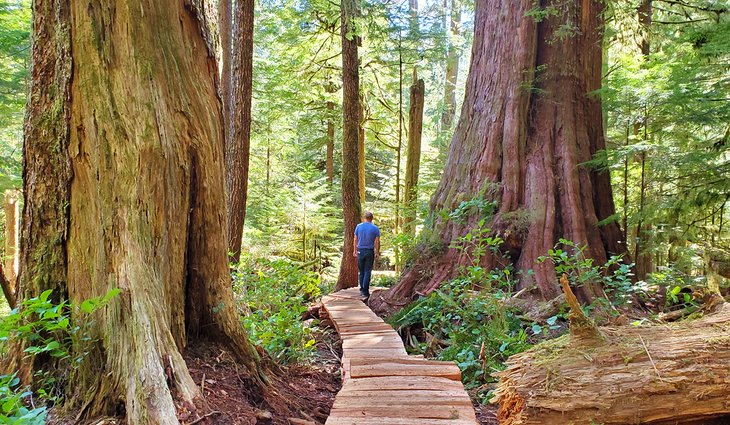
Although it is less than a two-hour ferry ride from the mainland, Vancouver Island can seem a world away. Most people head to Victoria, BC's capital city, for sightseeing and culture, but if you head north into the wild and remote landscapes, the island holds some unexpected and unforgettable experiences.
Nature lovers can hit the best hiking trails on Vancouver Island and set themselves up at some beautiful camping locations . Those looking for more comfort can always turn to one of the island's lodges or resorts.
One of the island's most incredible sights is the old-growth forests of giant trees, some more than 1,000 years old. Within day-tripping distance of Victoria are the ancient trees of Eden Grove, near the town of Port Renfrew . If you are heading up island, you can also wander through Cathedral Grove , not far from the town of Port Alberni, or go all the way out to Tofino to see even more huge trees.
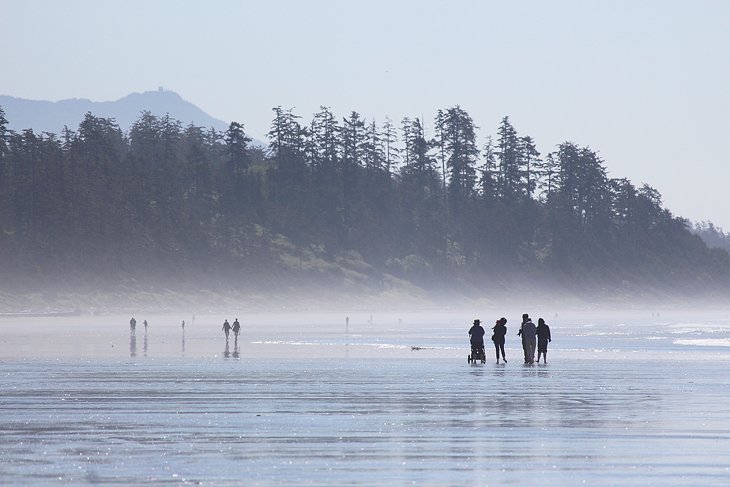
On the rugged west coast, a magnificent scene of sandy coves and dramatic rocky shores reveals itself as you drive up to Tofino . Around this tiny but incredibly popular off-the-beaten-path tourist town, in nearby Pacific Rim National Park Reserve , you can find incredible hiking trails , some of the largest trees in Canada, endless beaches, great surfing spots, camping , and places where you can simply soak up nature in peace.
Tofino is a year-round destination , although, in the storm season from November to March, many visitors come to appreciate the huge waves rolling ashore; some come to surf, and others come simply to cozy up next to a fire in one of Tofino's lovely resorts looking out over the Pacific Ocean.
Other destinations around the Island, include Nanaimo , Parksville , and Qualicum Beach , all on the eastern shore, looking out onto the Salish Sea. If you really want to get away from it all, head up to the far north of the island and explore Cape Scott Provincial Park .
Read More: Top-Rated Attractions on Vancouver Island
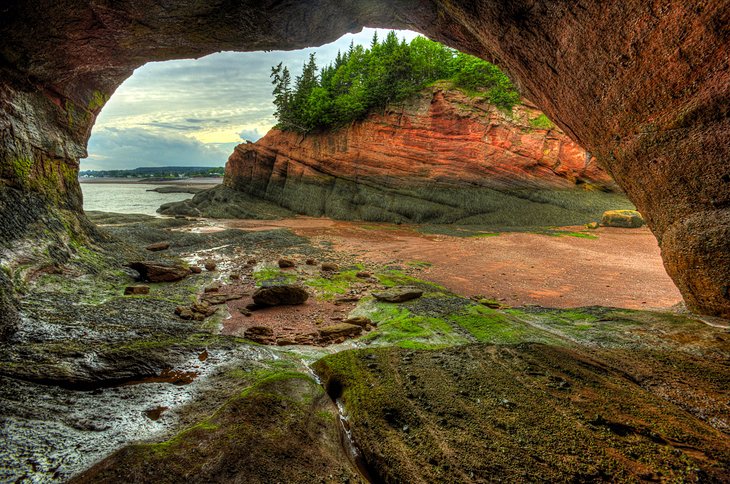
The Bay of Fundy, located in Eastern Canada between New Brunswick and Nova Scotia , is known for its amazing tides. The variation between high and low is the largest in the world, measuring up to a maximum of 19 meters (10 fathoms).
While there are many ways to appreciate this natural wonder, some of the most popular locations and sights along the Bay of Fundy are the cliffs and rock formations at Hopewell Cape , Fundy National Park , the Fundy Trail Parkway , and Grand Manan Island .
- Read More: Top-Rated Tourist Attractions on the Bay of Fundy
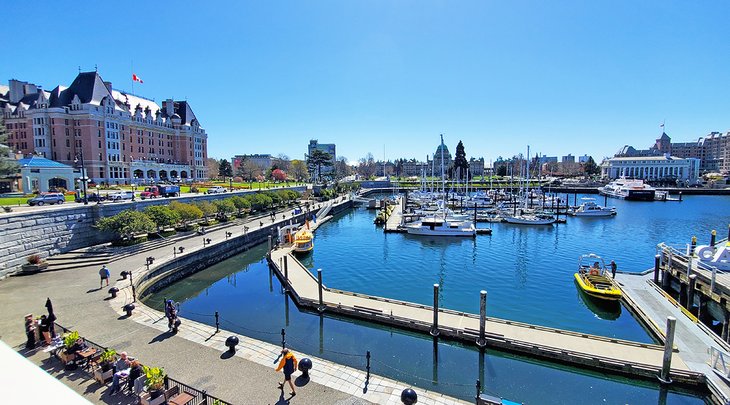
Few Canadian cities have done such a beautiful job of developing their waterfront area as Victoria and its Inner Harbour. This is a great place for strolling, relaxing, shopping, dining, and watching street performers all against the backdrop of the harbor.
The centerpiece of this area is the historic Empress Hotel , one of the city's most lovely buildings. Over the years, the Empress has welcomed kings and queens and, today, features a traditional high tea, which is one of the highlights for many visitors coming to Victoria. While the harbor area is popular year-round, it is particularly lively during the summer months.
The Inner Harbour is also where you'll find the British Columbia Legislative Buildings constructed in 1893. Visitors can take advantage of free tours offered daily and immerse themselves in the grandeur of the historic landmark.
- Read More: Top-Rated Tourist Attractions in Victoria, British Columbia
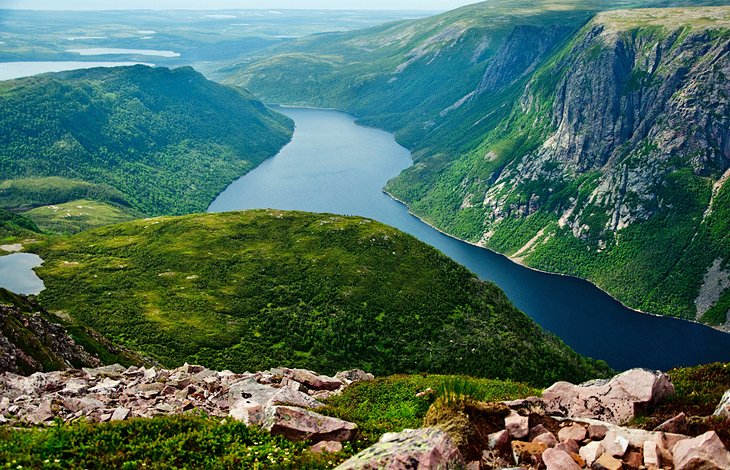
Newfoundland's Gros Morne National Park is more remote than many of Canada's most popular national parks, but worth the effort to discover this beautiful landscape of mountains and fjords. The park is a UNESCO World Heritage Site featuring steep cliff walls, waterfalls, and interesting rock formations carved by the glacier-fed waters.
Most visitors take a boat tour to appreciate the scenery, but there are also hiking trails and opportunities for kayaking. In winter, the park receives far fewer visitors but is open for ski touring, complete with backcountry ski huts.
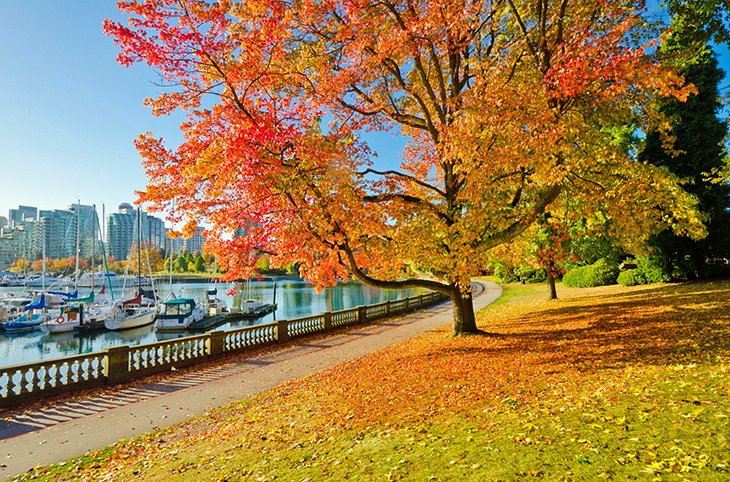
One of Vancouver's greatest treasures is the 405-hectare Stanley Park, conveniently located on the west side of the downtown area. Situated on a peninsula, the park is surrounded by the ocean and home to huge red cedar and Douglas fir trees. The seawall , which rings the park, has an extensive walking, jogging, and biking path with designated lanes for walkers and bikers. From the seawall are some lovely views of the city and mountains. A scenic drive also winds through Stanley Park with numerous pullouts.
Within the park are the Vancouver Aquarium , scenic Beaver Lake , and the Stanley Park Pavilion and Rose Garden . Also of special interest are numerous totem poles , some of which were erected more than 100 years ago. In the spring, the cherry trees burst into bloom in an amazing display.
- Top-Rated Tourist Attractions in Stanley Park
- Top-Rated Tourist Attractions in Vancouver
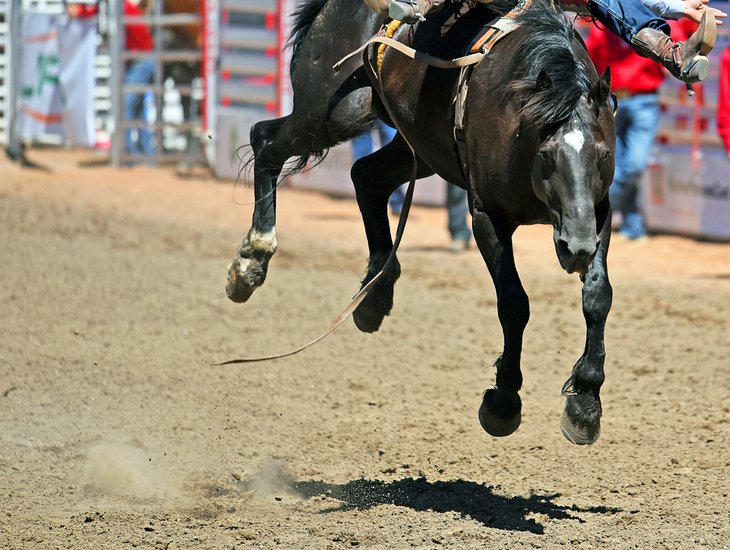
This 10-day affair is one of the most widely anticipated events in Western Canada, with many locals and summertime travelers planning their holidays around the Calgary Stampede. For this week in July, the city of Calgary turns into a true western town, where people who might otherwise be wearing suits to work instead don jeans and cowboy boots.
At the Stampede Grounds are daily rodeo events drawing participants from across North America, thrill rides, games, food, and the nightly Grandstand Show. Around town, free "Stampede Breakfasts" are hosted by numerous establishments either at indoor or outdoor locations and usually consist of pancakes. Many big-name country music performers also typically come to the city for this event.
- Read More: Top-Rated Tourist Attractions in Calgary
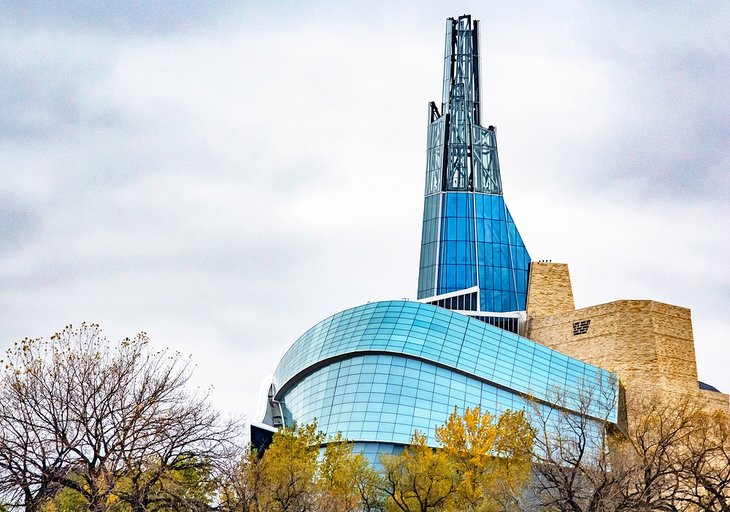
Winnipeg's newest major attraction, which has drawn both national and international attention, is the Canadian Museum for Human Rights. Opened in 2014 near The Forks , the building displays a unique design that is eye-catching to say the least, with geometry and colors based on images of the Canadian landscape.
Also unique is the concept behind the museum, which proved controversial when deciding which histories would be featured here. The museum highlights personal stories, capturing different perspectives, and focuses on a range of themes.
Official site: https://humanrights.ca/
- Read More: Top Tourist Attractions & Places to Visit in Winnipeg
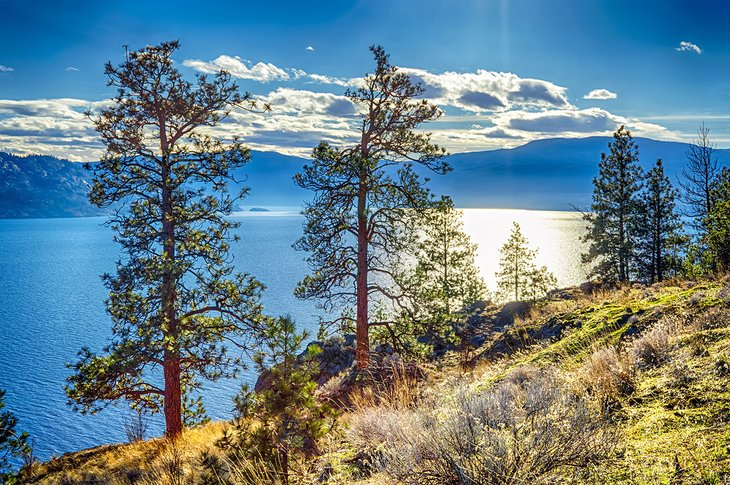
Locals who live in Penticton and Kelowna like to say that the Okanagan Valley is located on the warm side of the mountains from neighboring Alberta. This statement rings true - this long valley is truly a summer playground for Western Canadians.
Huge lakes dominate the valley floor, and some of British Columbia's best beaches can be found here. Offshore from the lively cities, canoeing, pleasure boating, and sailing are all popular activities, and every sunny summer day, the lakes are filled with smiling, laughing people having fun.
Along the gentle inclines leading up from the lakes, you'll find farms growing some of Canada's best fruit, including cherries, peaches, pears, and plums among many others. Places to stay are numerous; quality accommodation can be found in both Penticton and Kelowna.
In the winter, the Okanagan quiets down somewhat, but when the snow flies, locals head to Big White, Apex, Silver Star, or Sun Peaks, some of British Columbia's best ski resorts .
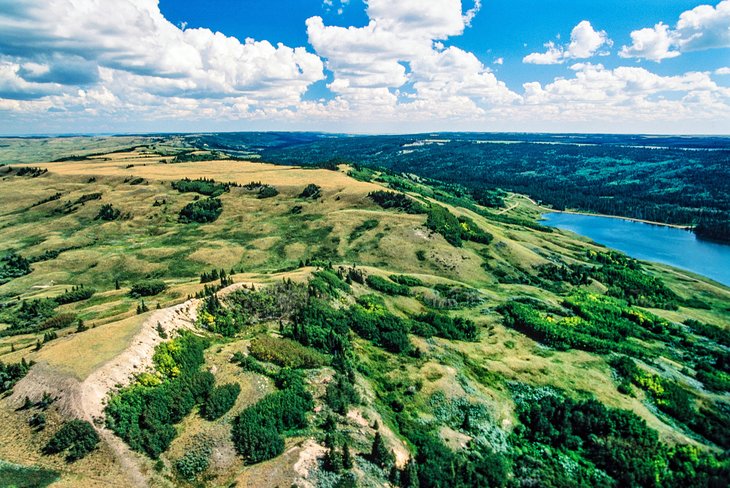
The province of Saskatchewan and Cypress Hills Interprovincial Park, in particular, are often overlooked as places to visit in Canada. A bit out of the way, they attract fewer tourists but those who do make the effort to get here are amply rewarded.
Wide-open spaces, huge skies, and abundant (and rare) wildlife are the norm out here, as is a feeling of peace and quiet. Rent a canoe and paddle one of the many lakes, go for a long hike in the grasslands, or if you find yourself here in winter, strap on your downhill skis and take a few runs.
For a bit of frontier history, swing by Fort Walsh National Historic Site and learn what life was like here in the late 19th century.
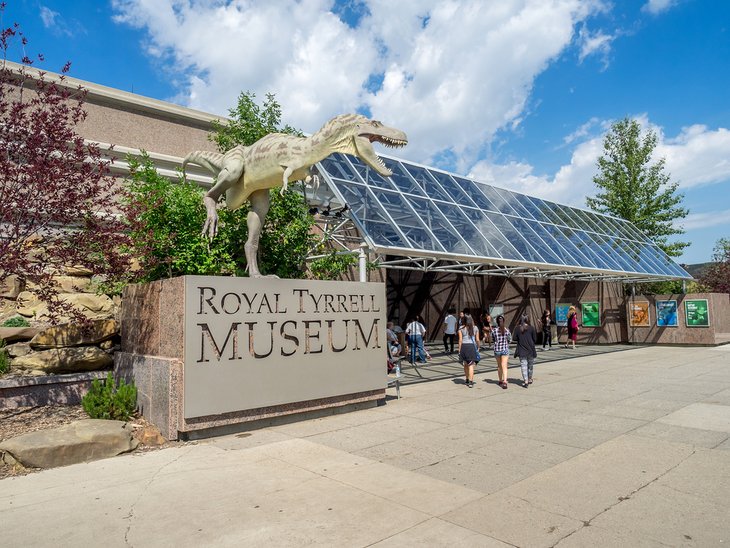
One of the world's premier dinosaur museums, the Royal Tyrrel is not to be missed. Incredible displays of dinosaurs found nearby are impressively showcased in a world-class setting. As you wander through the 13 galleries, you'll be transported back 3.9 billion years to the time that dinosaurs roamed the world. Standing next to these giants will truly make you feel rather insignificant.
A visit here isn't all indoors. Be sure to take time to explore the interpretive hiking trails located on the museum property.
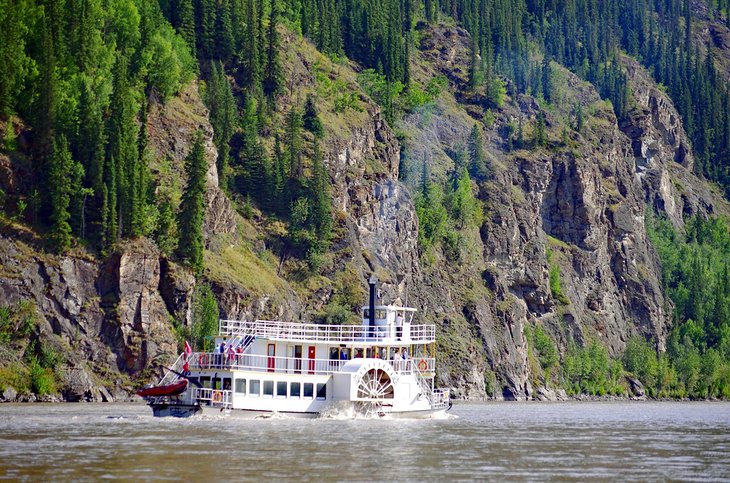
Home of the 19th-century gold rush, Dawson City today finds its gold in the pockets of the happy visitors who come to see what life was like back in those crazy days. The town has done an excellent job of preserving the historical architecture of the time. In fact, the downtown core, called the Dawson Historical Complex, is a National Historic Site.
The Yukon River runs right by the city, and for a true historical experience, be sure to take a ride on a river paddlewheeler.
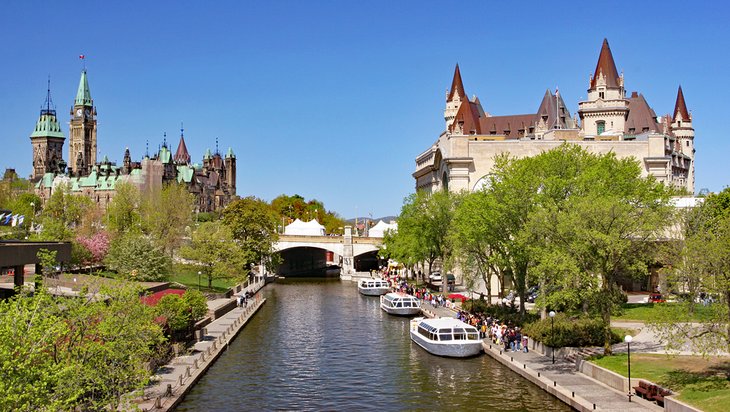
The historic Rideau Canal is a beloved four-season playground for the residents and visitors to Eastern Ontario. Extending from Kingston, on Lake Ontario, for 202 kilometers to Ottawa, this National Historic Site has been in operation since 1832.
In the summer, pleasure boats filled with families enjoying the summer sun transit the locks and make their way slowly along the route, stopping for ice cream and snacks at small towns along the way.
A portion of the canal in Ottawa transforms into a 7.8-kilometer-long ice skating rink in winter . All along the route are warming huts, pastry shops (be sure to try a Beaver Tail), coffee and hot chocolate vendors, changerooms, and washrooms. The skating season usually runs from January to early March, depending on the weather, and admission is free.
Read More: Explore the Historic Rideau Canal in Ottawa
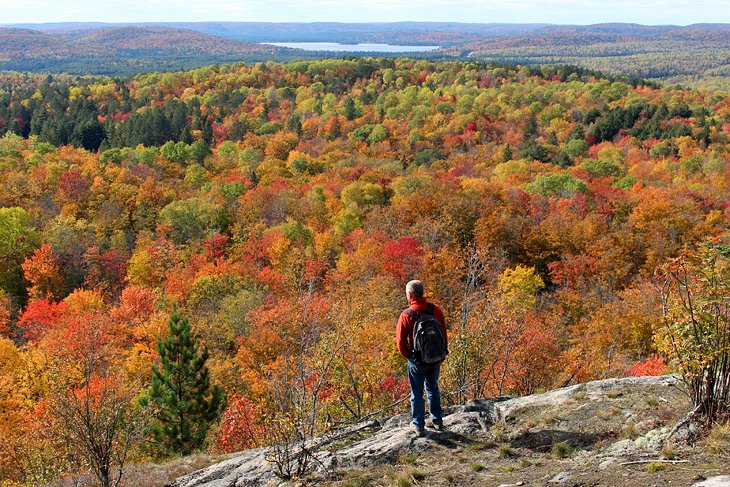
Algonquin Provincial Park has been a beloved spot for nature lovers since 1893, when it was established as Canada's first provincial park . During the summer, numerous canoeists, campers, hikers, and mountain bikers visit this vast forest playground. This beautiful location is only three hours away from the urban cityscape of Toronto .
Home to over 1,500 lakes, this watery wonderland is a perfect place to explore in a canoe. Every day in summer, hundreds of paddlers set off on routes that take them from one spectacular location to the next.
Many others choose to just set up camp at one of the eight car-accessible campgrounds and enjoy the outdoor experience that typically involves long days at the beach, BBQs, and evening campfires. In fact, many families make a summer vacation at Algonquin a multigenerational event that takes place year after year.
Experience the magic of fall in the park as the leaves transform into a vibrant display of orange, red, and yellow. Take a hike on one of the trails and ascend to a lookout point for a breathtaking panoramic view.
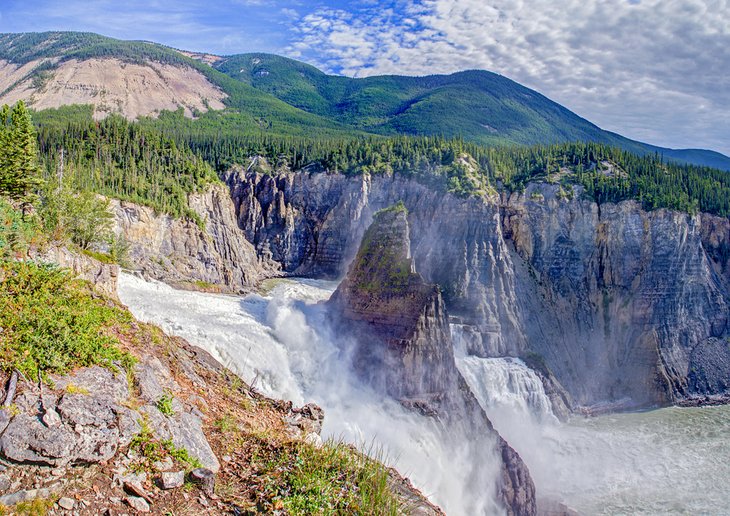
Those with an inner desire to get off the beaten track and see some of Canada's most raw and incredible scenery should point their compass toward Nahanni National Park . In this UNESCO World Heritage Site, the massive South Nahanni River slices its way through the Selwyn, Mackenzie, and Franklin Mountains.
Along the way, it creates several incredible canyons (some over 1,000 meters deep), passes by hot springs, and tumbles over Virginia Falls, an awe-inspiring sight that is twice as high as Niagara Falls .
One of the most popular things to do in the park is river rafting or whitewater canoeing from Virginia Falls downriver to Nahanni Butte, a distance of nearly 220 kilometers. You'll camp along the way and trips usually take about 12 days.
Other pursuits in the park include mountain climbing in the rather ominously named Cirque of the Unclimbables, fishing for arctic grayling or bull trout, and hiking up Sheaf Creek to the spectacular Tl'ogotsho Plateau.
If all that physical activity sounds a bit much, just take a two or three-hour flightseeing trip over the area and get a bird's eye view.
More Related Articles on PlanetWare.com
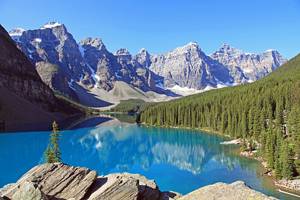
Planning Your Trip to Canada: Get more details on where to go and what to see with our detailed list of possible itineraries for exploring Canada . This is a guide to exploring each region, with links to things to do in each location. If you are coming for a winter holiday, be sure to have a look at our list of top ski resorts in Canada .

More on Canada
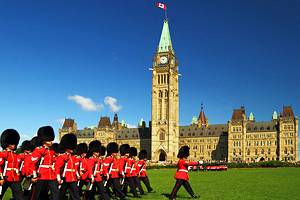

Home » Destinations » North America » Canada » Your Canada Sightseeing Guide By Canadians: 26 Things Not To Miss
Your Canada Sightseeing Guide By Canadians: 26 Things Not To Miss
Links in this article may earn us a little money if you book/ order stuff. More here .
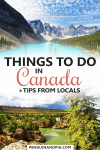
Ready to Do Some Canada Sightseeing? Here are the Top Things to Check Out!
Let’s be serious – pulling together a post on the best things in Canada can be tricky since Canada is so big! There are just too many things to see and do.
If you didn’t already know, half of us at Penguin and Pia (Eric) is Canadian, and the other half (Lisa) lived in Canada for a few months in 2017 on her Canadian Working Holiday Visa .
We used the time to explore a few places in Canada but we didn’t even come close to crossing off all the best Canada sights! So, we wanted to make a list for someone who might just be learning about or travelling to Canada for the first time .
Once again, we’ve teamed up with fellow Canadian Laura at She Who Wanders to try and cover the whole country! As a Montreal local who lived “out west” in Vancouver, she knows a thing or two about which Canadian sights to check out!
A huge shout out to Laura for once again writing down your Canadian knowledge and sharing it with us!
Of course, there are a few obvious tourist attractions like Niagara Falls. Many foreign travellers even start trip planning and packing for Canada by looking for attractions near Niagara Falls.
Now, this isn’t a bad idea – but there are so many other tourist attractions (sorry, Toronto) and natural attractions all across Canada that you should check out. So, if you’re looking for places to visit in Canada during the summer or the winter , this post has it all for you!
So you know, we’re going to cross all the regions of Canada in this post. While we might not name an attraction or sight in each province or territory, we’ll explain all the parts of this great country so you can plan the perfect trip!
We’re going to head from East to West – and we will add to this post we go and as we explore things! Ready to explore Canada? Here we go!
Table of Contents
The Atlantic Coast (Maritime Provinces)
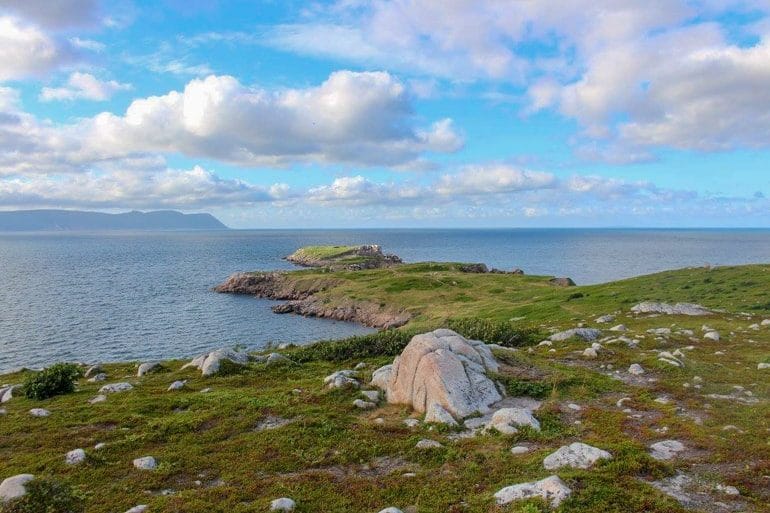
There is something about the East Coast of Canada that draws visitors in. Once you experience it, you’ll never forget your time there.
The East Coast is also referred to as the Maritime Provinces. From quaint fishing villages, dense forests, a maritime climate, and a whole lot of culture, the East Coast is not to be missed if you visit Canada.
The provinces that make up this area of Canada are Newfoundland and Labrador, Nova Scotia, Prince Edward Island, and New Brunswick. These small provinces have played (and continue to play) a huge role in shaping Canada’s history.
St John’s and Halifax have served as port cities for trade and commerce, while Charlottetown, the capital of Prince Edward Island – is where the Charlottetown Conference was held in 1864.
It was this meeting where the original idea of a Dominion of Canada was brought up. Three years later, Canada was born!
As such, there is a rich history to the East Coast, drawing upon Irish and Scottish roots from Europe to influence the culture and traditions for more than a few centuries.
Fundy National Park
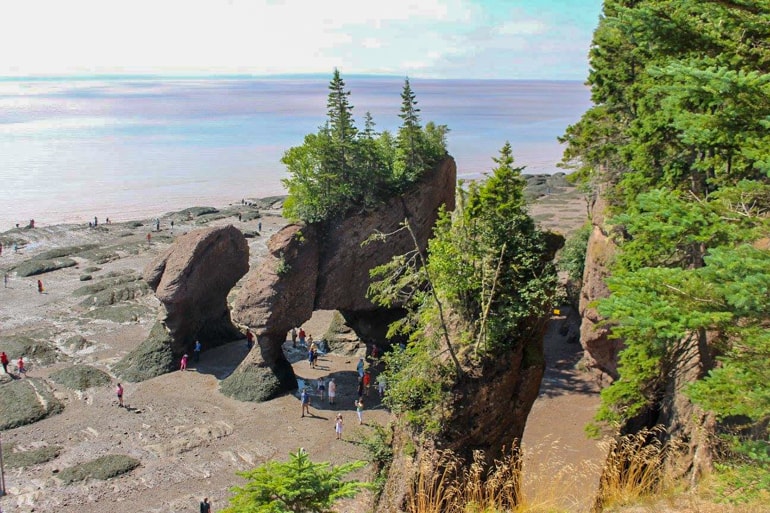
Located in New Brunswick, the Fundy National Park is a very popular place for nature lovers in Canada. The park is close to the Bay of Fundy and, as such, benefits in many ways from the dynamic coastline.
The area is home to the highest tides in the world. At the Hopewell Rocks, visitors can walk on the sea floor during low tide and return hours later to see their footprints deep under the ocean tide once again.
Fundy National Park is also home to the Canadian Highlands – an area known to resemble the geographical landscape and weather of the famed Scottish Highlands.
Besides the lush green hiking trails and rocky cliff views, the park is home to over 25 waterfalls that are sure to make your adventure a memorable one. To learn more, you can visit the official website for Fundy National Park .
Gros Morne National Park
Located in Newfoundland, Gros Morne is a landscape so old and important that it’s actually a UNESCO World Heritage Site!
Formed by moving glaciers and shifting continents, the landscape features a little bit of everything: from dense forest to bare tundra, steep cliffs, and ocean views. Norway is known for its fjords – and so is Gros Morne!
If you’re visiting Gros Morne, you have to book a cruise on the fjord of Western Brook Pond – a waterway that features massive towering rock cliffs. There are featured hiking and diverse wildlife throughout the park for you to see, as well.
You can even hike Gros Morne Mountain for some of the highest and most spectacular views in Eastern Canada. To learn more, you can check out the official website for Gros Morne.
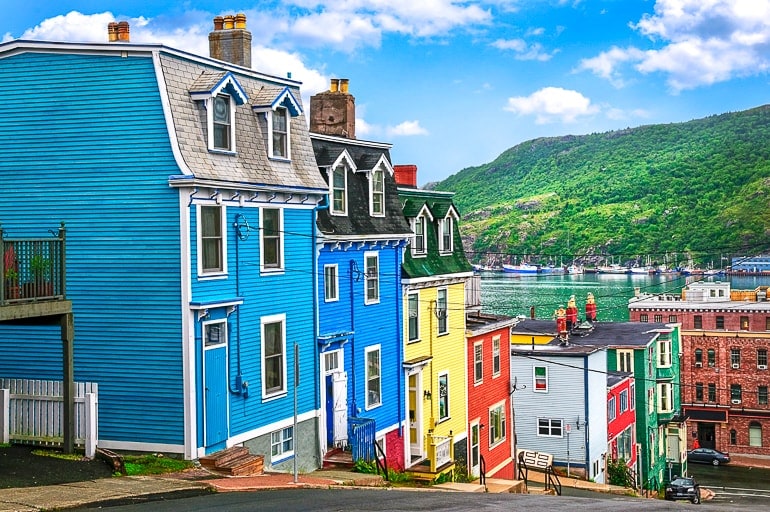
The capital of Newfoundland and Labrador is known for its colourful houses and so much more. it’s actually the oldest and most Easterly city in North America. With over 500 years of history to explore, you’re bound to find something that interests you!
Visitors can dive back into history and learn about Canada’s role in shaping the world as it is today. Check out the Cathedral of St. John the Baptist or hike up to Signal Hill – where the first wireless communication was received from across the Atlantic Ocean!
Having taken in the history, you can embrace the “now” in and around this city. From whale-watching via a chartered tour to world-class dining, the city has lots to offer. We’ve only given you a small sampler.
If you want to learn more, discover the tourism website for Newfoundland and Labrador . Remember, because it’s so far east – it’s actually easy to fly from Paris, Frankfurt, London, or Dublin!
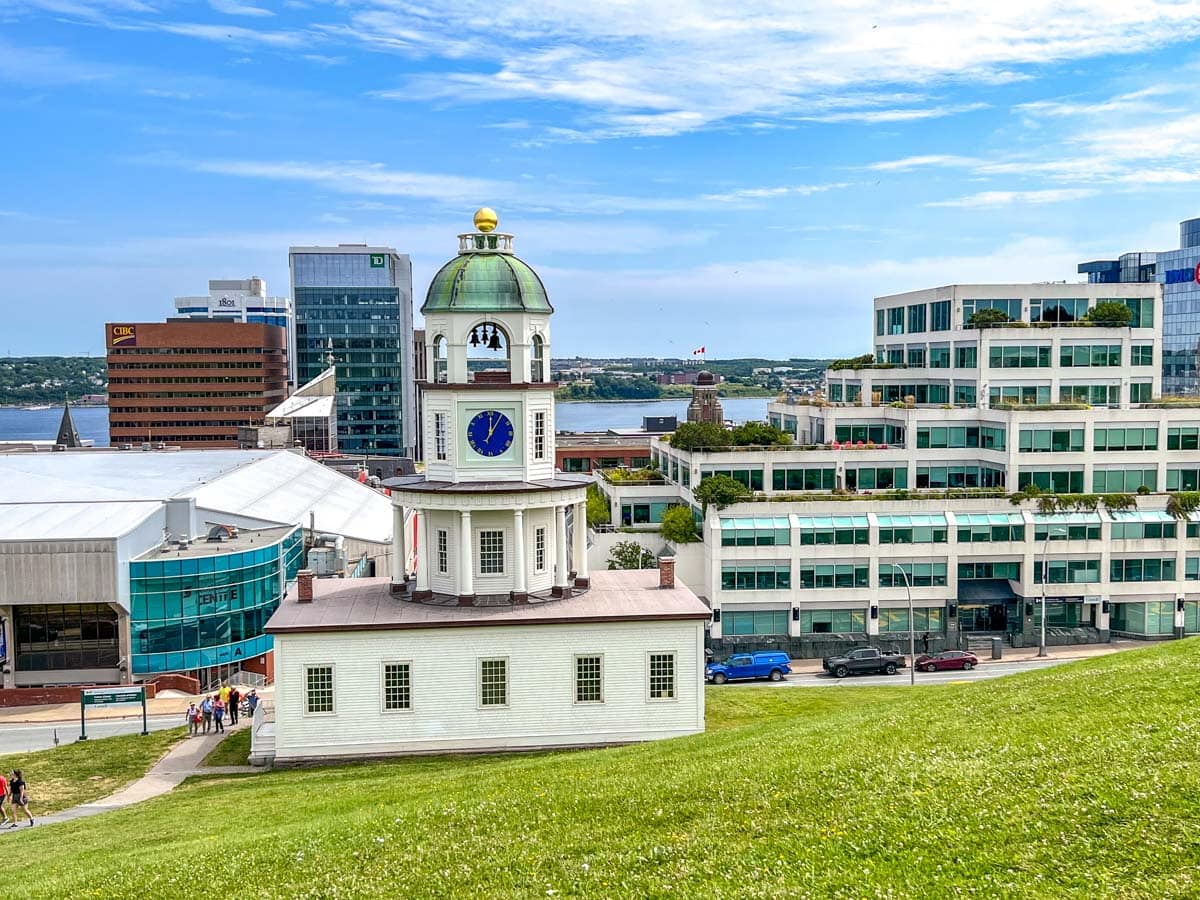
The capital of Nova Scotia is not to be missed. Like St. John’s, Halifax is known for its lively nightlife, rich seafaring history, amazing seafood, shopping, epic coastlines, outdoor activities, and much, much more.
You can visit the Citadel atop Citadel Hill – an important place during the War of 1812. Halifax Harbour is full of Maritime history – including the Maritime Museum. Pier 21, a common landing point for immigrants into Europe for decades, is now a museum and archive experience.
Eric’s grandparents came through Pier 21 in the 1950s from Europe and their signatures and landing cards can be searched in the museum!
Visitors can also use Halifax as a starting point to explore other places in Nova Scotia like Peggy’s Cove, Cape Breton, and the Cabot Trail – which we’ll cover below. To learn more, check out the Halifax tourism site .
Looking for a Room in Halifax? Check Here for Hotel Deals in Halifax .
The Cabot Trail
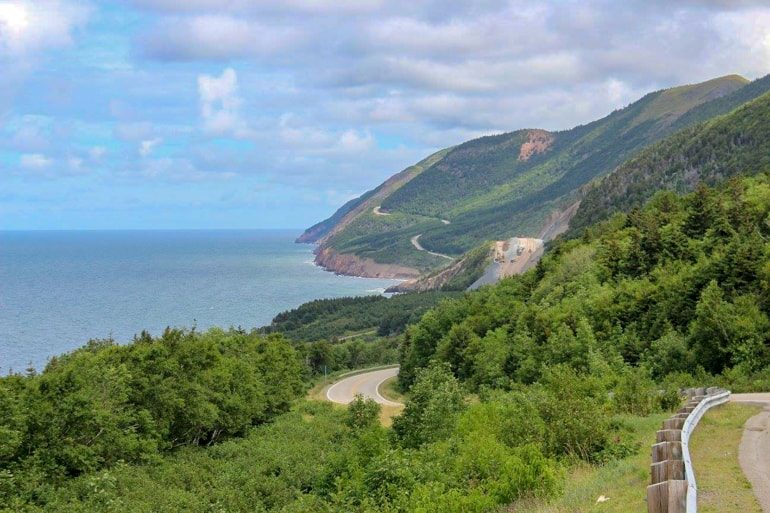
Nova Scotia has a lot to offer. The famous Cabot Trail is certainly one of them. Rated as one of the most scenic drives in North America, the route is a complete loop around Cape Breton Island – a well-known part of Nova Scotia.
The Cabot trail takes about 8 hours of actual driving time but you should plan for 3-5 days to complete the loop so that you can allow for stops along the way. Plus, the Trail is just shy of 300 kilometres – so you should break it up anyways!
Named after John Cabot, the famous Italian explorer who discovered parts of North America, the Trail takes you through Cape Breton Highlands National Park and along the coast to explore small towns and beautiful coastlines.
Don’t forget to stop to enjoy local specialties like lobster! You can actually discover the Trail in all seasons – with ice fishing and snowmobiling as possible activities in the wintertime. To learn more about this epic road trip, you can check out the Cabot Trail website .
Argyle Shores Provincial Park
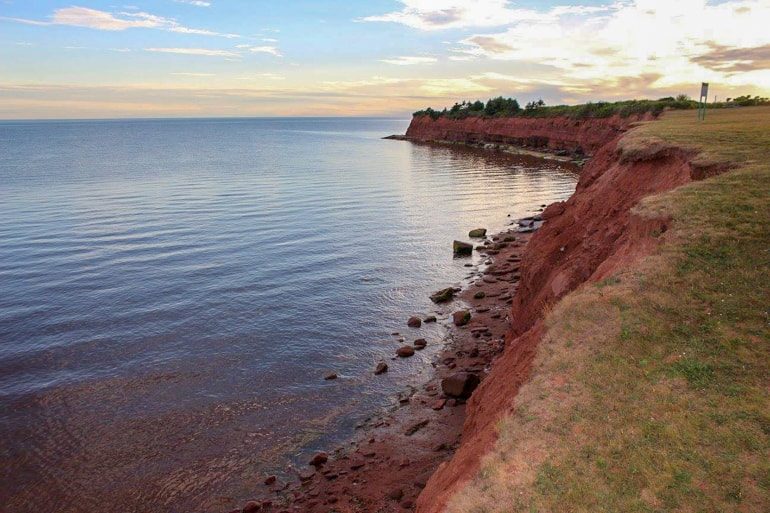
The Red Sands Shore region of Prince Edward Island is named appropriately – to say the least! From scenic coastal drives to deep red soil that stains the unique landscape, Argyle Shores Provincial Park is a great place to discover the region in the summer.
From hiking trails to swimming, there is plenty to do and see in the park. Those who are really keen can go sea-kayaking and use the time to explore off-the-beaten-path fishing villages.
If you’re interested in seeing more of Prince Edward Island, consider a road trip to the capital – Charlottetown. You can also drive to Cavendish to check out the “birthplace” of the fictional character “Anne of Green Gables”.
Created by Lucy Maud Montgomery in 1908, Anne and her down-to-earth roots in Prince Edward Island have remained a staple of Canadian literature ever since. To learn more, check out the Prince Edward Island site for Red Sands Shore .
Eastern Canada
In the middle of Canada but leaning to the East, you’ll find the two provinces of Quebec and Ontario. You’ll also find most of the country’s population and a whole bunch of the popular attractions in Canada!
Ontario and Quebec are the two largest provinces in the country. So, considering the size of the area, there is lots to discover. Quebec, like the Atlantic Provinces, has roots that date back to the original settlements well before Canada was Canada.
The area is predominantly French-speaking because the French claimed the area around the same time that the British claimed Ontario and other parts of Canada.
They fought quite a bit – but that’s a history lesson for another day! Don’t worry if you don’t speak French – Montreal is a very bilingual city!
Ontario has the nation’s capital, Ottawa, as well as the country’s biggest city – Toronto. You might be familiar with things in Ontario like the CN Tower and Niagara Falls – but our post is meant to show you a few of the other top things to check out in Ontario! As always, we’re still geographically heading east to west with these suggestions!
Quebec City
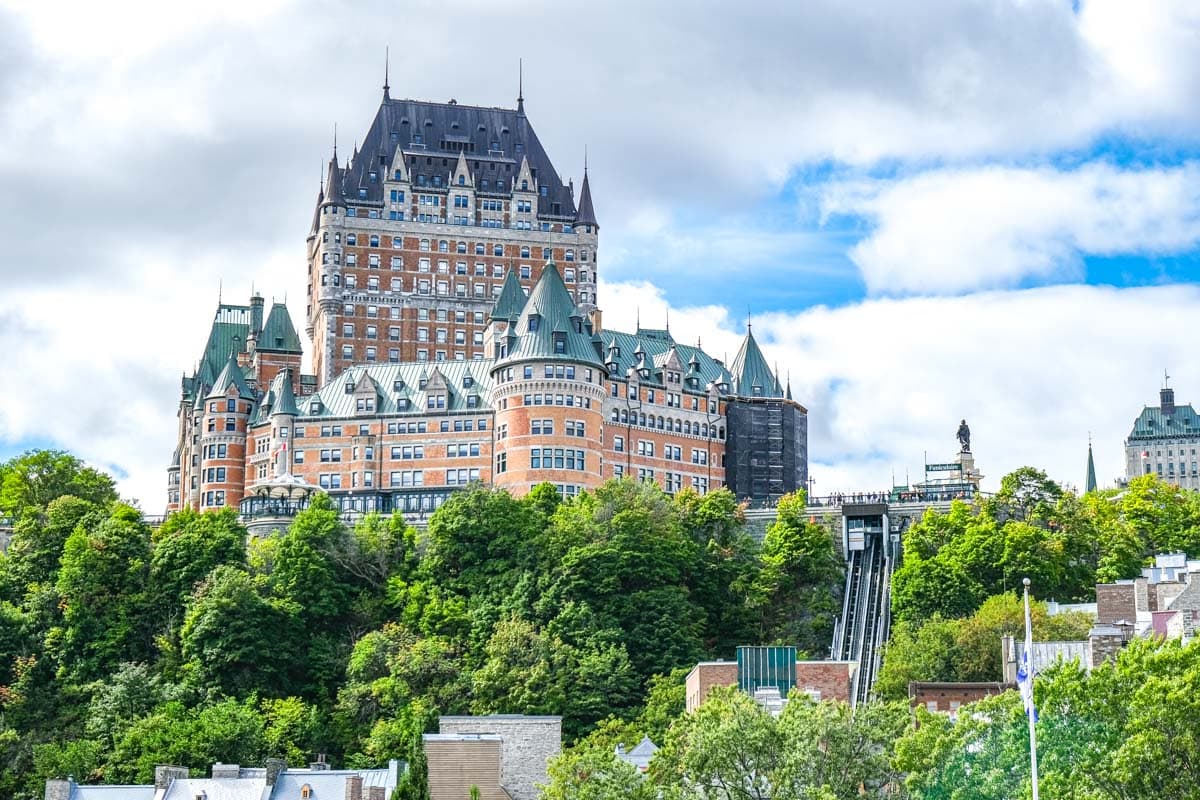
Quebec City is like stepping into a time capsule to discover Canada’s routes. The difference here from the Atlantic Provinces is that the history of Canada is a little more French!
As a UNESCO World Heritage Site, Old Quebec City has too much to offer. From walking tours on cobblestone alleyways to boat tours on the St. Lawrence River, there is never a dull moment in Quebec City.
The city is great to visit in all seasons. The summer makes for a visit with warm temperatures and lots of patios to enjoy in the city, The winter brings about the famous Christmas Markets, the winter festival known as Carnival, and activities like ice skating.
Oh, and if you want a place to stay – why not book the beautiful and historic Chateau Frontenac (pictured above). You can learn more about visiting Quebec City on their website .
Looking for Quebec City Accommodation? Search for Deals in Quebec City ! Want to Discover Quebec City? Book a Grand Walking Tour or Fantastic Quebec City Harbour Cruise .
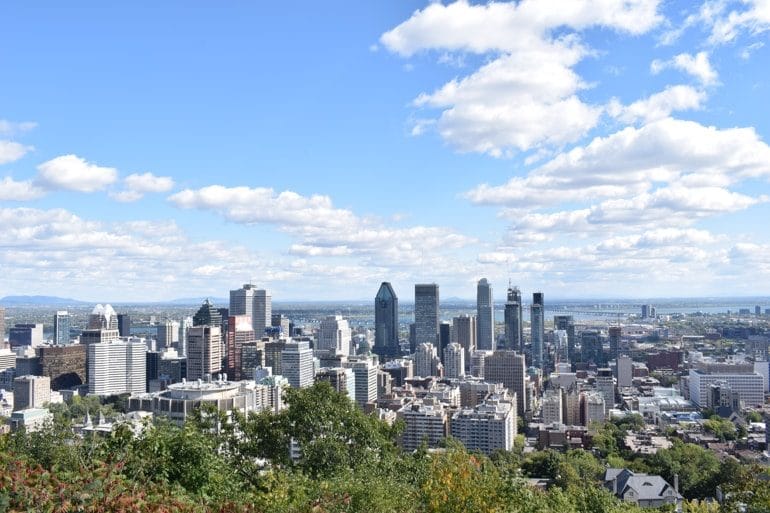
Love good food, great culture, and feeling like you’ve popped over to Europe while having never left Canada?
Well, then Montreal is your city to visit, hosting the Jazz Fest and Just for Laughs comedy fest annually summer is fantastic. If you’re keen to get a real Canadian winter under your belt then pop over during the holidays.
Montreal can get pretty cold but there’s ice skating in the Old Town and cute cafes to pop into to warm up. There are also incredible museums to check out if you need to escape the winter chill!
The mountain after which the city is names – Mount Royal – has an incredible view over the city. Nearby, Beaver Lake is the perfect spot to pack a picnic and watch the trees change red and gold over autumn.
Don’t forget about the Old Port which will transport you back to a time before public transit and social media with its twinkle lights and cobbled streets.
If you are for sure visiting Montreal, we have loads of great posts on the amazing city:
- Our Guide on Where to Stay in Montreal
- The Best Sights and Attractions in Montreal (told by a local)
- How to Spend the Perfect Day in Montreal
Want to Discover Montreal? Do an Old Montreal Walking Tour or Book a Top-Rated Dinner Cruise !
The Parliament Buildings in Ottawa
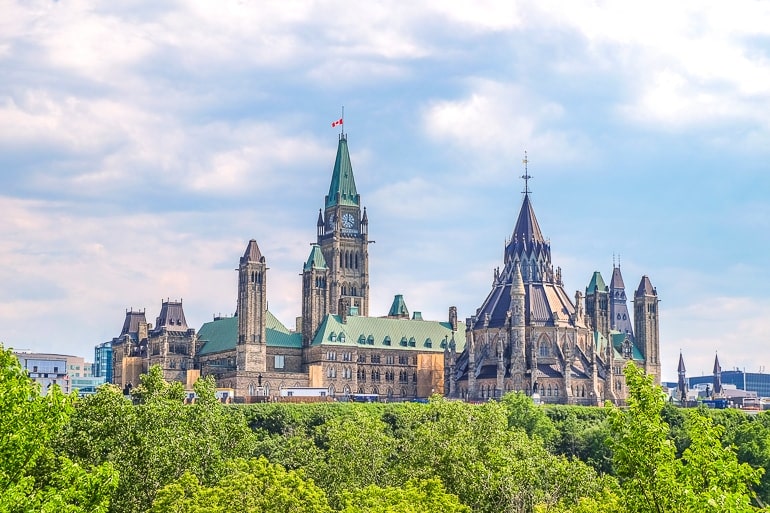
If you’re keen to explore Canada’s capital city, you can learn all about the Canadian Government and visit the Parliament Buildings. There are lots of statues around the grounds at Parliament Hill for you to discover and learn about Canada’s history from.
Ottawa, in general, has plenty to do in the summertime and the winter. The famous Byward Market is full of shops and stalls selling local goods as well as numerous bars and restaurants that come alive with activity and music each night. We wrote a whole post on the top pubs and bars in Ottawa for this exact reason!
In the winter, the Rideau Canal becomes the largest skating rink in the world and you can rent ice skates to skate as much of the almost 8-kilometre rink as you like.
Along the way, you can stop at stalls to warm up and enjoy Canadian treats like Beavertails (a fried dough dessert covered in sugar and cinnamon).
Looking for more travel guides to explore Ottawa? We’ve got a few great posts to help you out!
- Our Guide on 27 Things To Do in Ottawa
- How to Spend One Perfect Day in Ottawa
- Where to Stay in Ottawa: A Guide to Hotels and Neighbourhoods
The CN Tower
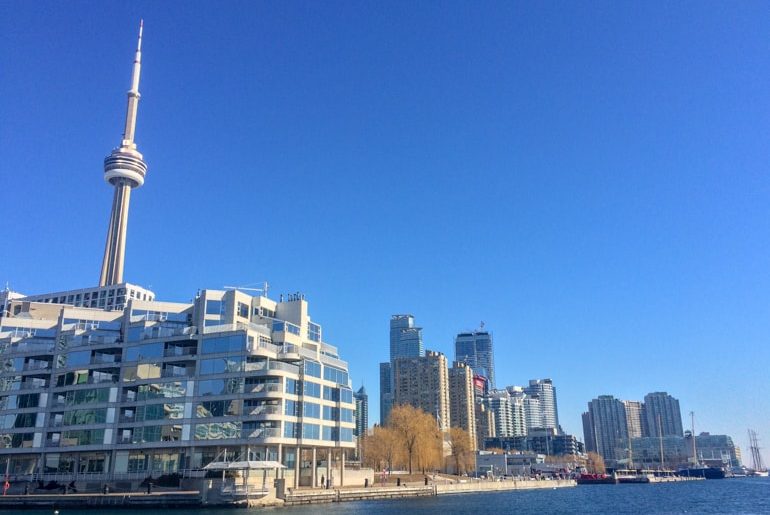
As the tallest structure in Canada (and for decades, the entire world) the CN Tower, or Canadian National Tower by its full name, is always worth a visit.
That’s why we put it on our list of top tourist attractions in Toronto ! Standing at 533 metres tall, going up to the top allows for amazing views of the region. You can even see all the way to the United States from the top on a clear day.
At the top, there is lots to do. You can walk (or jump) on the glass floor as you peer all the way to the ground a 1,000 feet below.
The 360 Restaurant serves high-class dishes with local ingredients and makes a rotation almost every hour – giving diners a different view through the meal. Definitely something to put on your one-day Toronto itinerary !
The Sky Pod is an observation deck even higher up from the main deck, and you can even head “outside” for the Edge Walk – where you dangle in a harness off the edge of the tower 116 stories up! To book tickets to go up the CN Tower, you can check out the website .
Booking a Toronto Hotel? Check Out Our Guide to Toronto Hotels and Neighbourhoods ! Want to Discover Toronto? Book the Toronto Bus Tour or Do the Ultimate 5-Hour Toronto Tour !
Niagara Falls
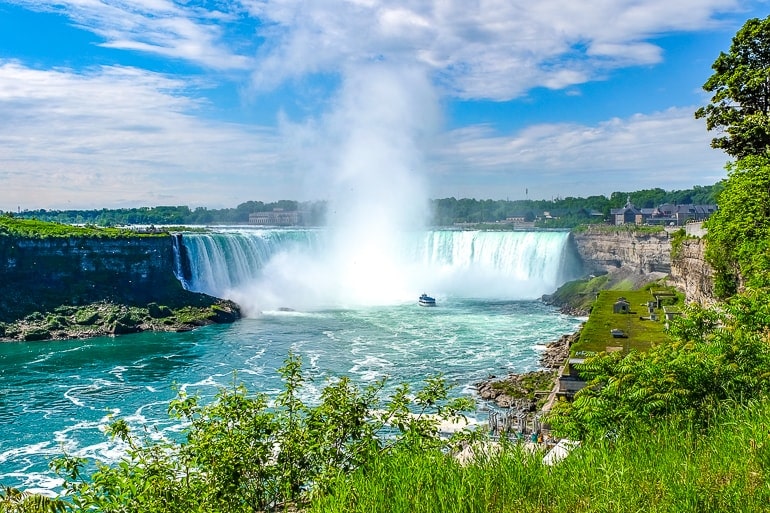
You can’t go to Canada without checking out (or at least researching how to visit) Niagara Falls. While the name “Niagara Falls” is actually the name of the three interconnected falls that straddle the border, “Horseshoe Falls” is the one on the Canadian side.
It’s the larger one and usually the one people think of when they say “Niagara Falls. It’s also the prettier one, but we’re a little biased!
Niagara Falls, the city, has lots to keep visitors busy. From carnival-like attractions and museums on the street to lots of parks, walking trails, and viewpoints, you’ll have plenty to do.
For the Falls themselves, you can hop on the famous “Maid of the Mist” boat tour that goes up close to the Falls. Hornblower Niagara Cruises is the company that operates the tour on the Canadian side.
You can also book tours to go into the tunnels behind the falls and on viewing platforms very close to where you need to wear a plastic poncho to not get too wet! The falls are a spectacular sight in nature and you should definitely visit them if you’re coming to Canada!
We’ve written a whole series on exploring Niagara Falls for you to check out if you’re planning a trip!
- 25 of the Best Things to Do in Niagara Falls (on the Canada Side)
- Niagara Falls Accommodations + Hotels with the Best “FallsViews”!
Want the Ultimate Niagara Falls Experience? Check Out the Top-Rated Ways to Discover the Falls:
>> Voyage to the Falls Boat Tour – Get Up Close on the Classic Boat Cruise People Love! >> 40-Minute Fireworks Night Cruise – Fireworks Seen from the Water Near the Falls >> Small Group Niagara Falls Half-Day Sightseeing Tour – See the Best Sights on a Guided Tour >> Helicopter, Boat Ride & Skylon Lunch Tour – A Combination of the Top Experiences All-in-One!
Classic “Cottage Country” in Ontario
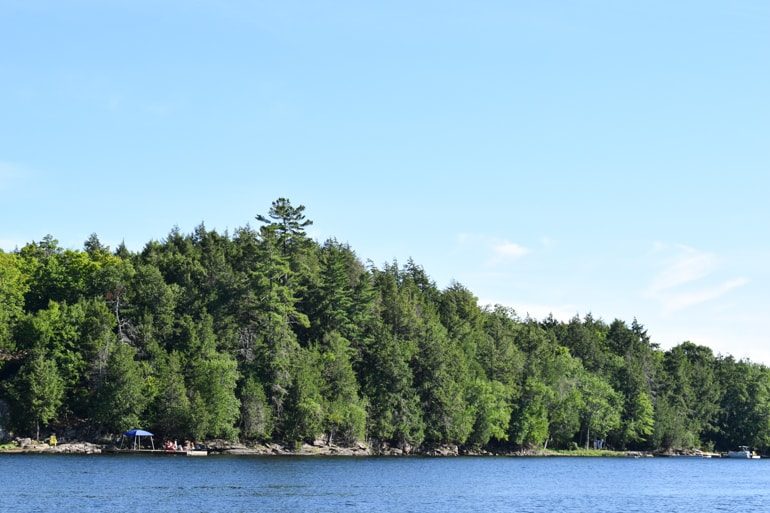
One of the best ways to discover what Ontario has to offer is to dive into nature and do like the locals do. Renting a cottage in Ontario is a great way to experience Ontario wilderness with the comforts of a home away from home.
Cottage rentals on famous Lakes Muskoka, Lake Joseph, and many more in the quintessential “cottage country of Ontario” can take you as high as Halliburton and as low as Grand Bend.
There are freshwater lakes all over the province to greet you with swimming, fishing, water sports, and canoeing.
Ontario is also home to some amazing resorts and inns that are worth booking to take the hassle out of your visit to Ontario’s nature.
Algonquin Park
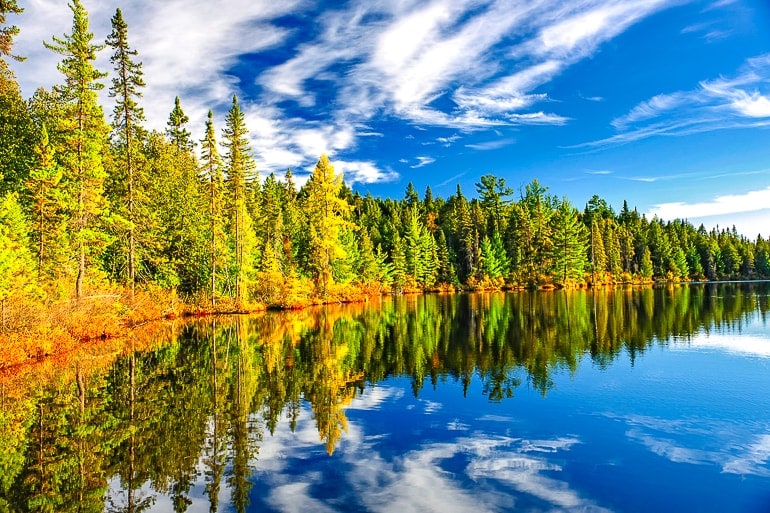
Alternatively, if camping and being rugged is more your style, there are dozens of amazing campgrounds around Ontario specifically designed to help short stay tourists get the full experience from their time camping in Ontario.
Gear rentals are simple, fees are often quite low, and the benefits of being outside in a secure location are second to none.
Check out Algonquin Provincial Park , the oldest provincial park in Canada – a great spot for canoeing, camping, fishing, wildlife, and more.
Doing a route through the park can take days and so a canoe trip is certainly worth the planning if you want to fully immerse yourself in the Canadian wilderness. Remember, Algonquin Provincial Park is about a quarter the size of Belgium!
Niagara on the Lake Wine Region
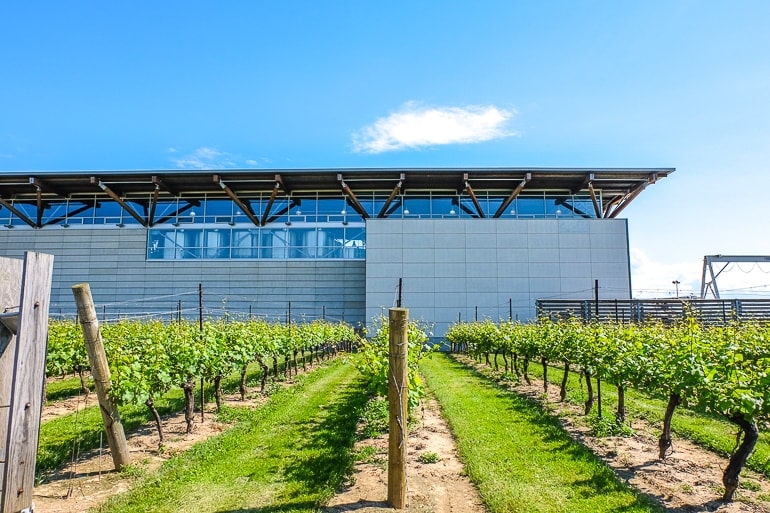
When you think of world-class wine – does Canada come to mind? Well, it should! Canada has a few famous wine-growing regions across the country and Ontario has one of the most famous”: Niagara on the Lake.
The region has a very distinct climate due to the Great Lakes and the geography of the area. Because of this, the regions produce many kinds of grapes but is also known for their ice wines – a sweet dessert wine only produced where the grapes are left to freeze!
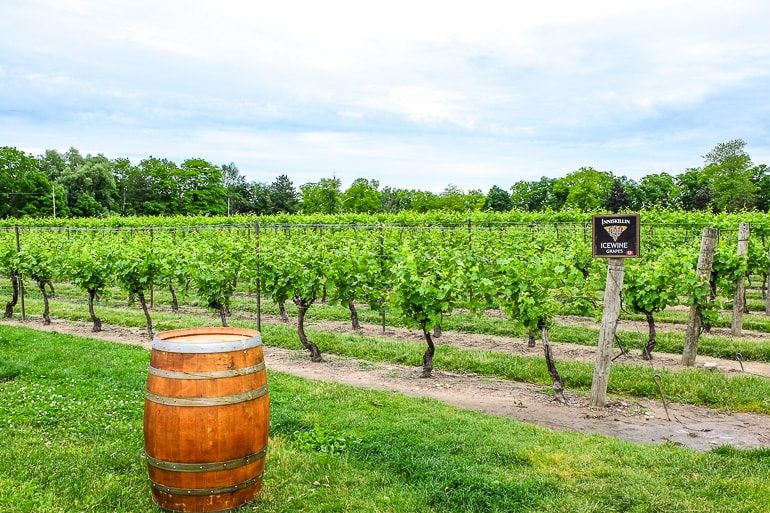
With over 90 wineries, breweries, and distilleries in such a small and accessible region by bike or car, Niagara on the Lake is quickly growing to include more than just the largest established wineries of the area.
Many of the vineyards have tours of their facilities and tastings throughout the summer and even in the winter to try ice wine.
You can read more about some of the best wineries in Niagara on the Lake here and hop on a top-rated Niagara wine tour . You might also want to stay a few nights – so here’s a guide on where to stay in Niagara on the Lake !
Visit Wine Country + Niagara Falls From Toronto: Take a Full Day Niagara Tour from Toronto !
Central and Western Canada
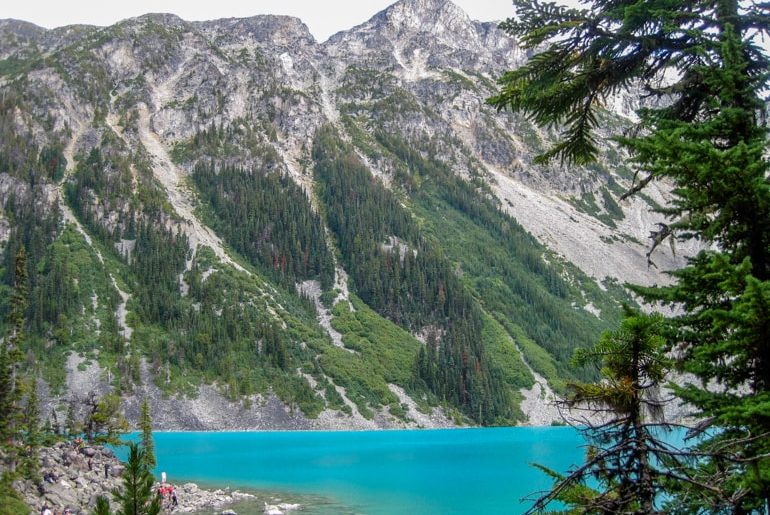
Once you’re out of Ontario, you’ll reach the Central and Western provinces in Canada. From the flat plains to the Rocky Mountains and the Pacific Ocean, the four provinces that comprise western Canada are very large.
They all have their own unique character with lots of things to do and see for all interests. From East to West, there is Manitoba, Saskatchewan, Alberta, and British Columbia!
While the West Coast of Canada gets a lot of attention, there are lots to discover in the middle if you are wanting to experience more of Canada’s beautiful lakes and mountains.
Some of the most stunning photographs that you see for Canada are from the Rocky Mountain region and from places like Banff, Jasper, and Whistler – all of which we discuss below!
Polar Bears in Churchill
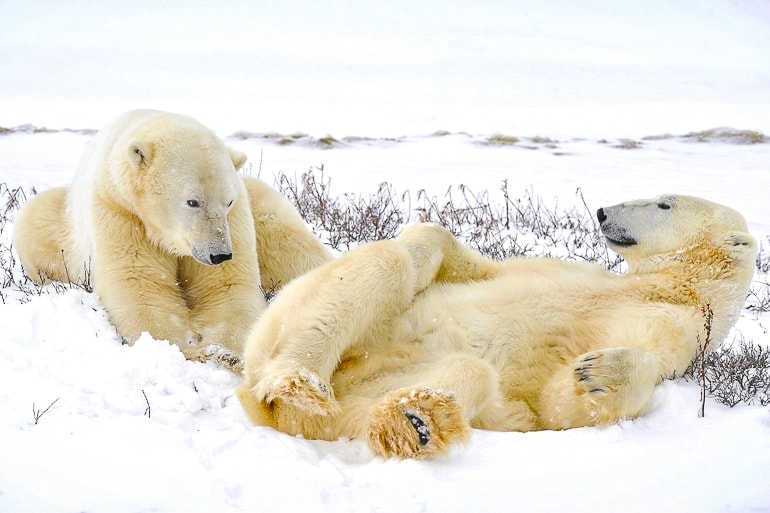
Visiting Manitoba might not be the first thing you think of when you are visiting Canada for the first time, but the most adventurous of tourists might consider it. Far north in Manitoba is the small town of Churchill.
It is here that you can find tours that make sure you have a safe and educational time in one of only a handful of spots around the world where you can see polar bears in the wild.
In fact, Churchill has a thriving tourism industry that is centered around spotting the bears but also winter adventure activities and stunning landscapes for photography, the northern lights, and generally exploring the cold tundra way up north! To learn more, you can check out Great White Bear Tours .
Grasslands National Park
Established in 1981, Grasslands National Park can be described as adventuring into the middle of nowhere. However, don’t let this stop you from visiting Saskatchewan. The park is famous for some of the darkest skies in Canada. This makes for premiere stargazing.
The flat prairies are home to a diverse range of wildlife – like Plains Bison – that graze the area. The park is also home to one of the richest concentrations of dinosaur fossils in the world.
In fact, while Western Canada is known to be a fossil “hot spot”, the first fossils in the area were discovered here in Saskatchewan. There’s also plenty of camping to be done on the flat, grassland terrain – perfect if you want to get away from the big cities.
To learn more, you can check out the official site for Grasslands National Park .
The Canadian Rocky Mountains
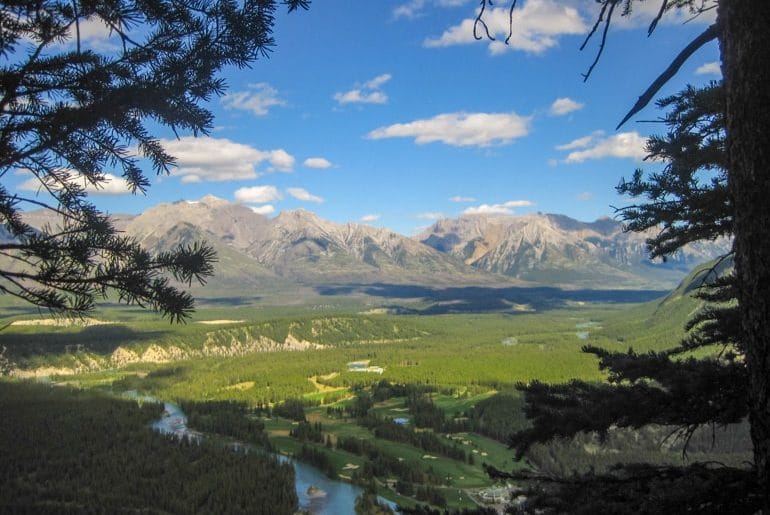
That quintessential postcard shot of Canada usually has some variation of a tall mountain and a gorgeous blue lake. Right?
So, if that is what you’re after then look no further than the Rockies! Alberta is home to a large portion of this mountain range and you really can’t go wrong with any of these locations.
However, for an easy and stunning road trip make your way from Edmonton to Calgary (or vice versa) stopping at Jasper, Lake Louise, and Banff National Parks. There will be no shortage of turquoise lakes or hiking trails but here are a few classic ones in each location to get you started:

Jasper National Park
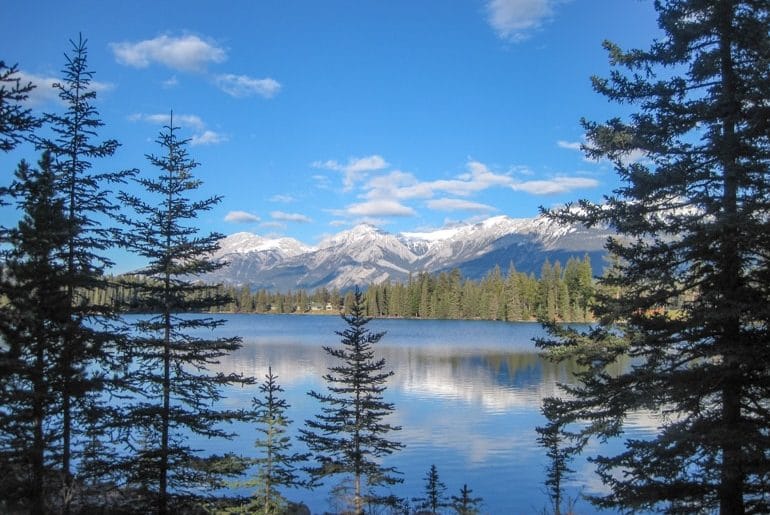
Covering over 10,000 square kilometres, this National Park is home to the famous Columbia Icefield glacier, countless hot springs, and even more trails to satisfy any level of holiday hiker thinking of tackling the terrain.
Declared a UNESCO World Heritage Site in 1984, Jasper does not disappoint in any season! If you want to check out a few of the other top places in the area, here is a short list of the most notable: Valley of the Five lakes, Old Fort Point, and Maligne Lake.
Looking for Accommodation in Jasper? Start Your Search for Deals in Jasper Here . Want to Discover Jasper? Search for Wildlife and Waterfalls or Go Easy River Rafting with a Guide !
Lake Louise & Banff National Park
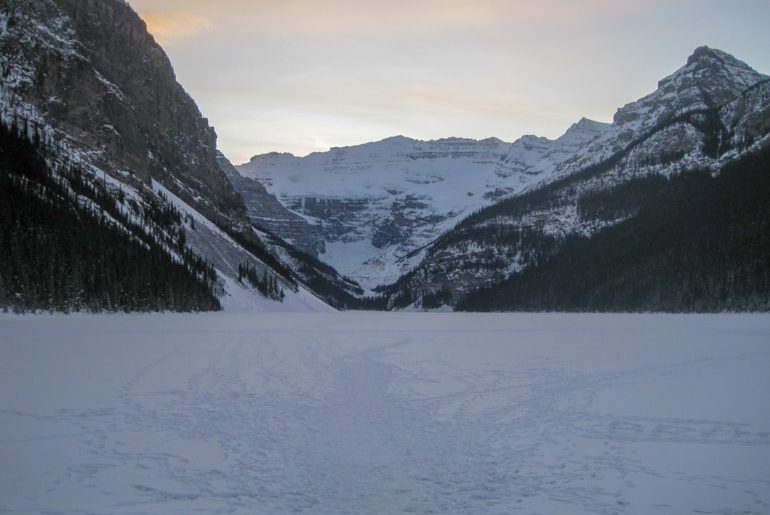
Driving west from Jasper you’ll pass through these two consecutive National Parks along the Icefields Parkway, a drive which in itself is a must-see attraction.
First stop, Lake Louise – home to the iconic turquoise lake (in summer) or the magical skating rink (in winter) and a castle-like hotel that rivals even that of any fairy-tale story.
After Lake Louise, Banff is the town with the second highest elevation in the Alberta Rockies, and when you roll into town you’ll notice it right away.
You’ll feel as if at any second you could drive up onto the mountains. Known for mountain biking, hiking, and snow sports, Banff is a town not to be missed on your Rockies road trip.
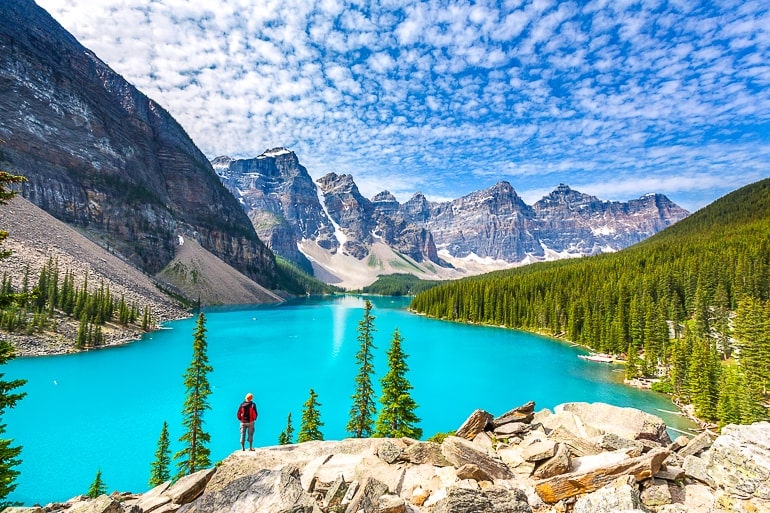
If you’re looking for other attractions and lakes in the area, there are quite a few notable ones: Lakeshore Trail, Moraine Lake, Tea House Train, Tunnel Mountain, and Johnston Canyon.
Looking for Banff Accommodation? Check Here for Deals in Banff or Book the Fairmont Banff Springs !
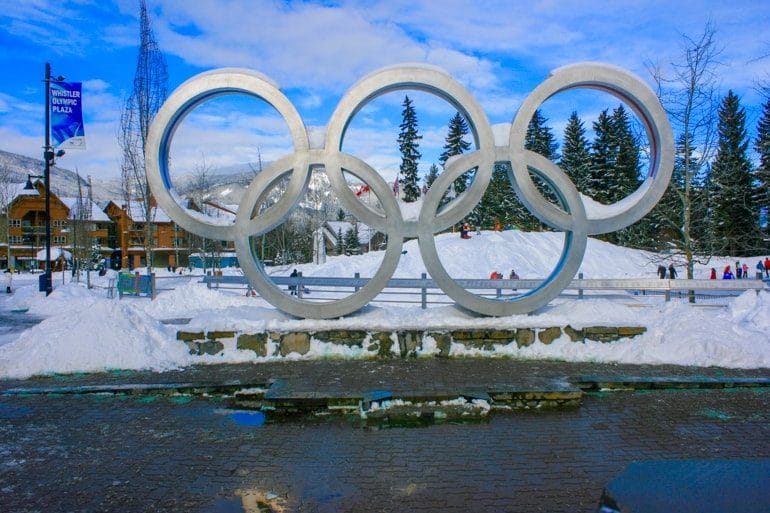
If your mountain craving hasn’t been curbed with those top spots then get yourself to Whistler, British Columbia.
Whistler is a mecca for incredible skiing and snowboarding in the winter as well as a lush spot for all things biking, hiking, and swimming during the summer months.
The options of things to do in Whistler are endless no matter the season. That said, the top recommendations, if you’re short on time, would be to get up into the clouds on the Peak 2 Peak Gondola.
The views on your way up will have you glued to the gondola windows the whole time. You can take a stroll through the iconic Whistler village and relive the 2010 Olympic winter games (Go Canada!) with some amazing items and attractions leftover from the games.
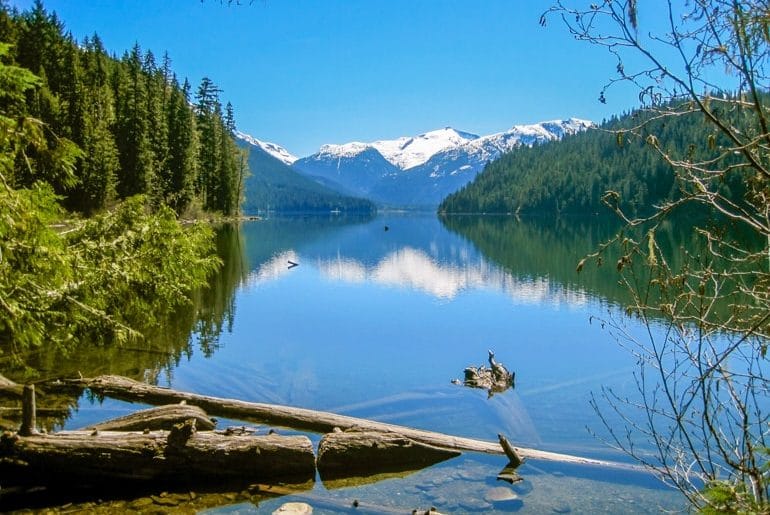
And if you’ve got a little more time up in Whistler then do check out some of these spots in the surrounding Whistler area: Cheakamus Lake, Joffre Lakes, Brandywine Falls, and Shannon Falls. To learn more, discover the Whistler tourism site .
Looking for Accommodation in Whistler? Check Out Deals on Whistler Accommodation . Want to Discover Whistler? Book a Top-Rated Full-Day Tour of Whistler and Shannon Falls
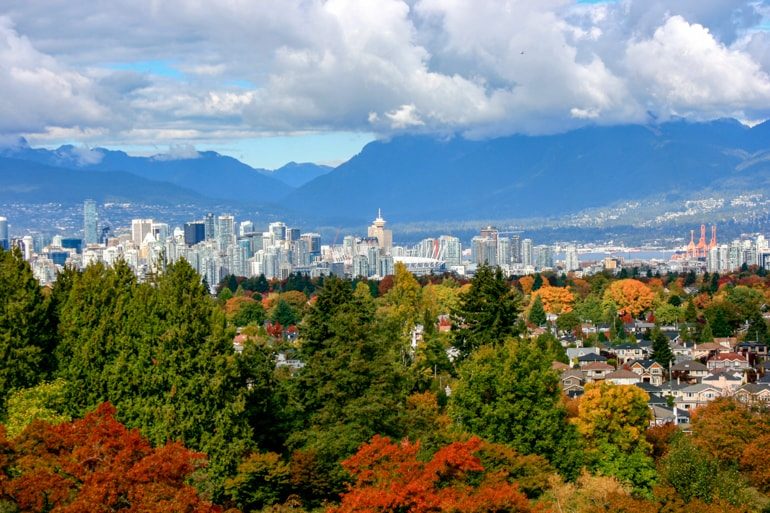
It’s time to head from the Rocky Mountains to the city by the sea – from Whistler to Vancouver that is! The drive alone along the Sea to Sky highway is one of the biggest attractions and the best drive to get you between the two locations.
Vancouver is known for its natural beauty being surrounded by snow-capped mountains and stunning blue ocean at the coast.
It’s not hard to tell why it’s been named one of the most beautiful Canadian cities more than once before. Since there are so many neighbourhoods to choose from, you might want to check out our guide to Vancouver Neighbourhoods and Hotels !
Stanley Park and the Sea Wall path are not-to-miss places on your visit. You can walk it, run it, or even rent a bike and cruise along taking in the sights of the city and the multitude of beaches along the way.
North Vancouver is known for its lush forests and the high and mighty Capilano Suspension Bridge. Granville Island will have your mouth watering from the first moment you lay eyes on the expansive market there.
Finally, you should indulge in some of the best food on offer in the city in historic Gastown! Want more on Vancouver? Here are 6 of the Top Local Things to Do and See in Vancouver .
Looking for Hotels in Vancouver? Check Here for Vancouver Deals .
Want to See Vancouver and More? Have a Look at the Best Ways to See the City and Surrounding Area:
>> Classic Vancouver Panorama Tour by Seaplane – Discover Vancouver from the Air! >> Vancouver Delights: 7 Hour City Tour – Explore Lots of Vancouver from Top to Bottom! >> Vancouver: 7-Hour Sea to Sky Tour – Check Out the Coastline and the Mountains in One Day!
Vancouver Island
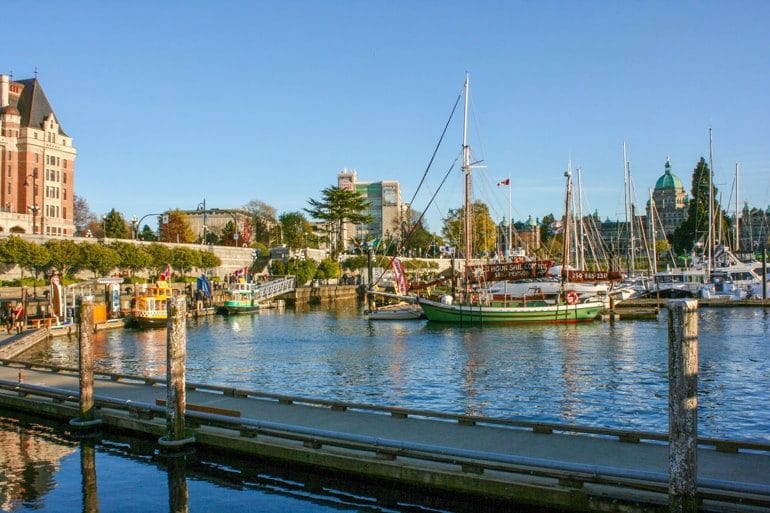
When you’ve had your fill of the city and you’re seeking a reprieve from the hustle and bustle, then it’s time to get on a boat and head over to Vancouver Island!
Actually, if you’re feeling like you want to travel a bit more luxuriously you can fly (by seaplane or helicopter) from Vancouver to the island!
Known for its mild climate, lush rainforests, and incredible coastal views a visit to Vancouver Island will have you feeling as if you’re a million miles away from any city. To learn more, check out the Vancouver Island tourism site .
Want to Explore Vancouver Island? Check Out This Royal Full Day Tour By Coach and Ferry
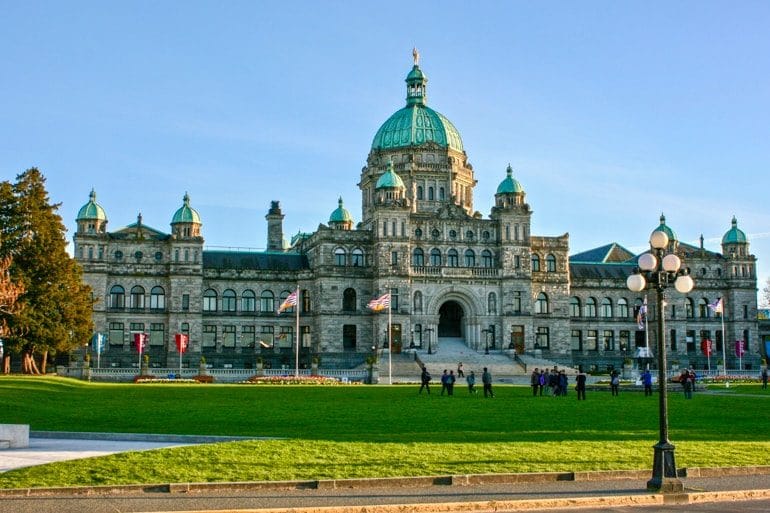
Victoria is the capital city of British Columbia and sits on the southern tip of Vancouver Island. Victoria is home to a beautiful Parliament Building, as well as Beacon Hill park that is perfect for a sunny stroll along the ocean.
Goldstream Provincial Park is a spot not to be missed with its own version of Niagara Falls. To learn more about Victoria, check out the tourism website .
Looking for Accommodation in Victoria? Check Out Victoria Hotel Deals . Want to Discover Victoria? Hop on an Amazing Sea Plane Tour or Go Whale Watching on a Covered Boat
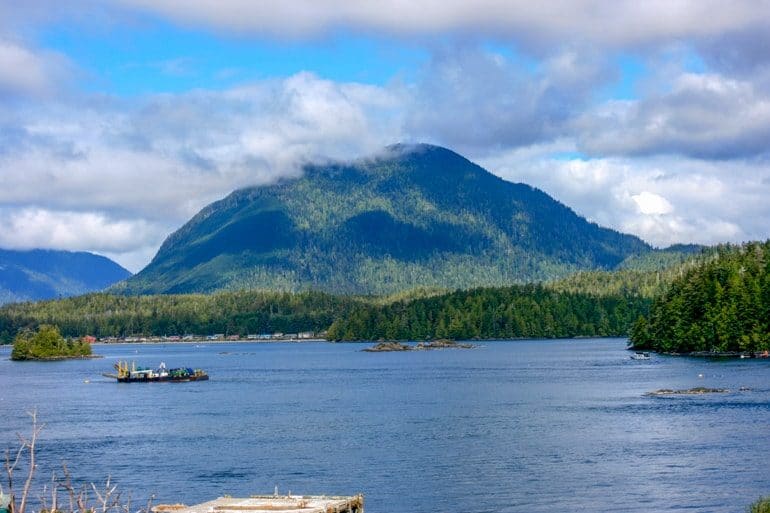
For those of you looking to discover somewhere a bit smaller, then Tofino further northwest of Victoria is your must-see spot!
Known for its surfing and whale spotting, this part of the island has almost an ethereal vibe when the fog rolls in. This makes for a great spot to storm watch during the winter months.
To learn more about how awesome Tofino is, check out the Tofino tourism site . We’ve (Eric & Lisa) since visited and absolutely fallen in love with Tofino and the surrounding areas.
So, naturally, we’ve written some detailed posts on Tofino including:
- Our Tofino Visitor’s Guide: Things to Do, Eat, and More
- Where to Stay in Tofino, BC: Hotels & Areas
Okanagan Valley
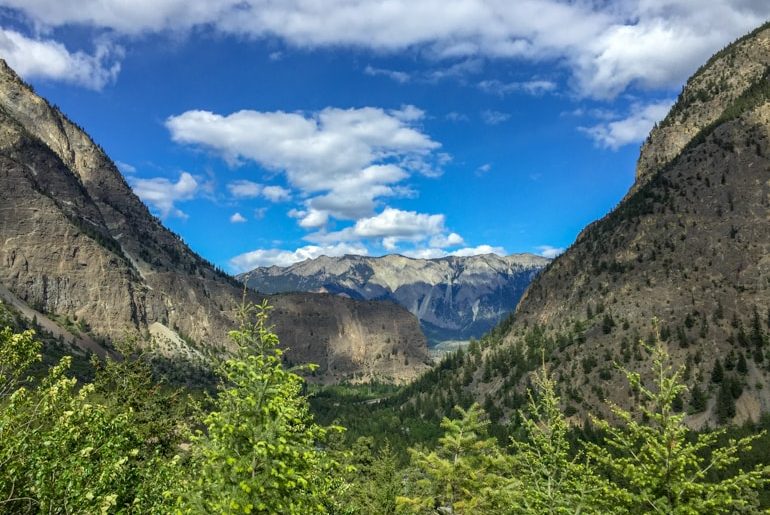
Who loves wine?! Did you all raise your hands in the air like you just don’t care? If you did then it’s the Okanagan Valley that should have you jumping for joy!
Kelowna, Penticton, Peachland, Vernon, & Osoyoos all boast some of the region’s most well-known vineyards, fruit orchards, and stunning views.
While you sip your wines that are locally sourced and bottled, take in the sweeping views of the lakes and valleys. Countless tours exist to make the day easy to get from each of the wineries safely and comfortably.
You can also drive through the rolling hills stopping at the vast amount of wineries that exist around every turn. Just remember to drive and enjoy responsibly if you do! To learn more about the Okanagan Valley, check out their tourism website .
Northern Canada (The Territories)
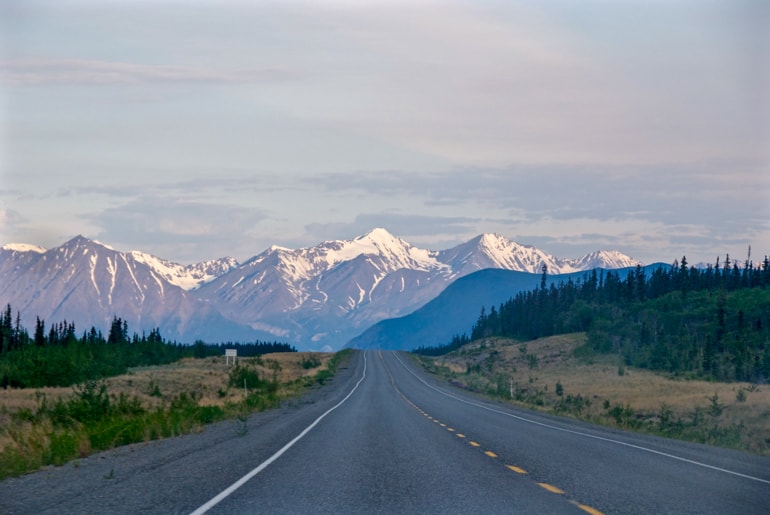
If you’re heading to Canada for the first time, you might not end up in the Territories unless you know there’s something you want to see.
If you like canoeing, camping, mining for gold, and the chance at seeing the Northern Lights, then the Territories might be for you to explore!
From west to east, there is Yukon (borders with Alaska), Northwest Territories, and Nunavut, where you’ll find a high percentage of Canada’s Indigenous population known as the Inuit.
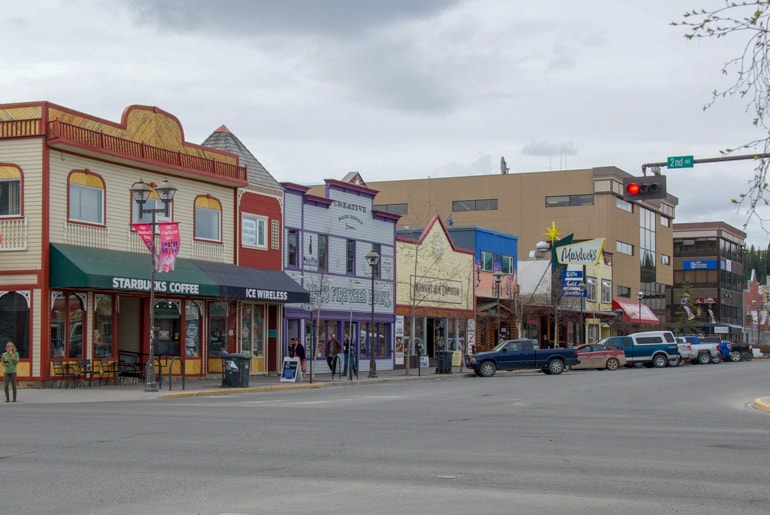
As the capital city (and only city) in the Yukon, Whitehorse is a great place to experience the truly touched outdoors in Canada. The city itself was only “recognized” in 1950 but existed long before.
In fact, the famed Klondike Gold Rush in the late 1800s is part of the reason the Yukon (and the city itself) exist today. The history and legend of gold in the area continue to this day.
Fun Fact: because of how high north the city is, Guinness World Record claims that Whitehorse is the city with the least air pollution! Good to know! This high latitude means that winter days are very short and summer daylight can last for 9 hours.
This makes summer great for hiking, fishing, camping, and exploring. There’s a reason we have exploring the Yukon on a camping adventure on our experiences of a lifetime list !
The winter is amazing for cross-country skiing and viewing the northern lights – and many tours are centered around helping you discover the northern lights at their best up in the Yukon! To learn more about the Yukon in general, here is the official Yukon tourism website .
And there you have it – just a short list (rolls eyes) of some of the best attractions and places to check out in Canada. Like we said, this is just a sampler.
We wanted to cover the whole country and we think we’ve done a pretty good job giving you a taste of what is out there for you to discover, Of course, we couldn’t cover everything!
Are you planning a trip to Canada? What do you think of our list? What are you planning on seeing? Get in touch and let us know – we’re happy to share more knowledge to help you trio plan!
As always, Happy Canada Waddlin’, -L&E
- Compare flights on Skyscanner
- Check for Hotel Deals or Book A Hostel
- Get A Rental Car (depending on the destination)
- Research plug types and possibly get a travel adapter
- Go over our packing list
Pin it for later!
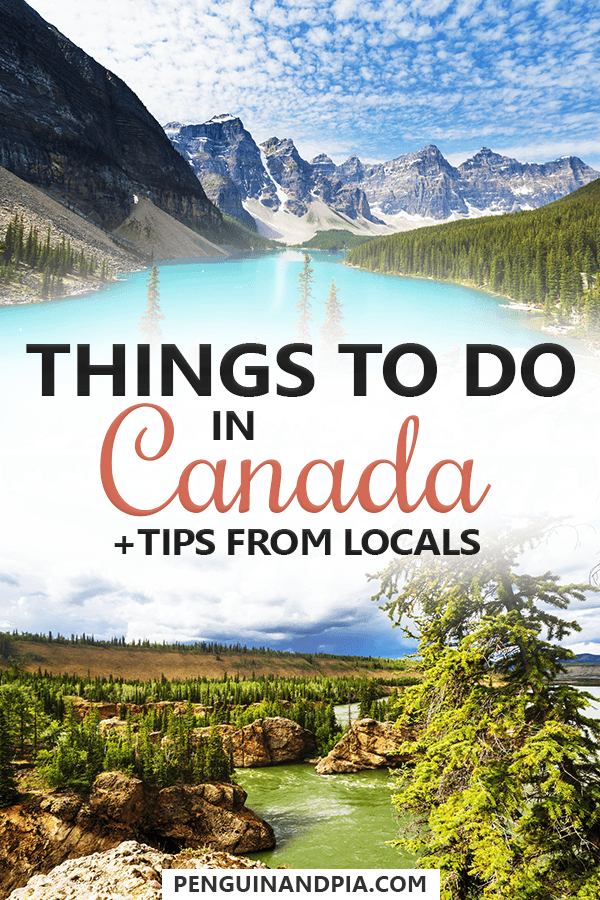
As an Amazon Associate we earn from qualifying purchases.
Destinations
Privacy policy
Disclaimer & Affiliate Disclosure
Terms of use
© 2024 Creativlier Media Inc.
- Destinations
- United States

The Definitive Guide of Places & Tourist Attractions in Canada
The second largest country on Earth, the Great White North is brimming with enchanting landscapes, vibrant cities and friendly people. Yes, we are talking about Canada.
This stunning country is home to a diverse range of tourist attractions in Canada that will provide you with a truly unforgettable travel experience.
What's in this article?
Places & Tourist Attractions in Canada
When you think of Canada, the first images that come to mind may be vast landscapes, magnificent wildlife and a rich cultural heritage.
Canada is a land of diversity, a place where each province and territory carves out its own Canadian identity. But Canada’s true charm lies in its countless tourist attractions, which are found throughout the country from coast to coast.
This richness and variety make Canada such an exciting destination to explore. With 75 carefully selected locations, this guide will show you the highlights of Canada.
Banff National Park & the Rocky Mountains
Nestled in the heart of the majestic Rocky Mountains, Banff National Park offers you unparalleled natural beauty.

With its lush forests, glistening glaciers, serene alpine meadows, and wildlife spotting opportunities, Banff isn’t just a popular tourist attraction in Canada , it’s a feast for the senses!
Calgary Stampede
Once a year, the city of Calgary erupts into a cowboy-filled frenzy with the Calgary Stampede, one of the most exciting tourist activities in Canada .

Dubbed as “The Greatest Outdoor Show on Earth,” this 10-day event attracts millions of visitors from around the globe who come to enjoy rodeos, music concerts, chuckwagon races, and more.
Just remember to pack your cowboy boots and hat!
A vibrant cosmopolitan city nestled between the Rocky Mountains and prairies, Calgary offers its visitors a mix of urban attractions and natural beauty.
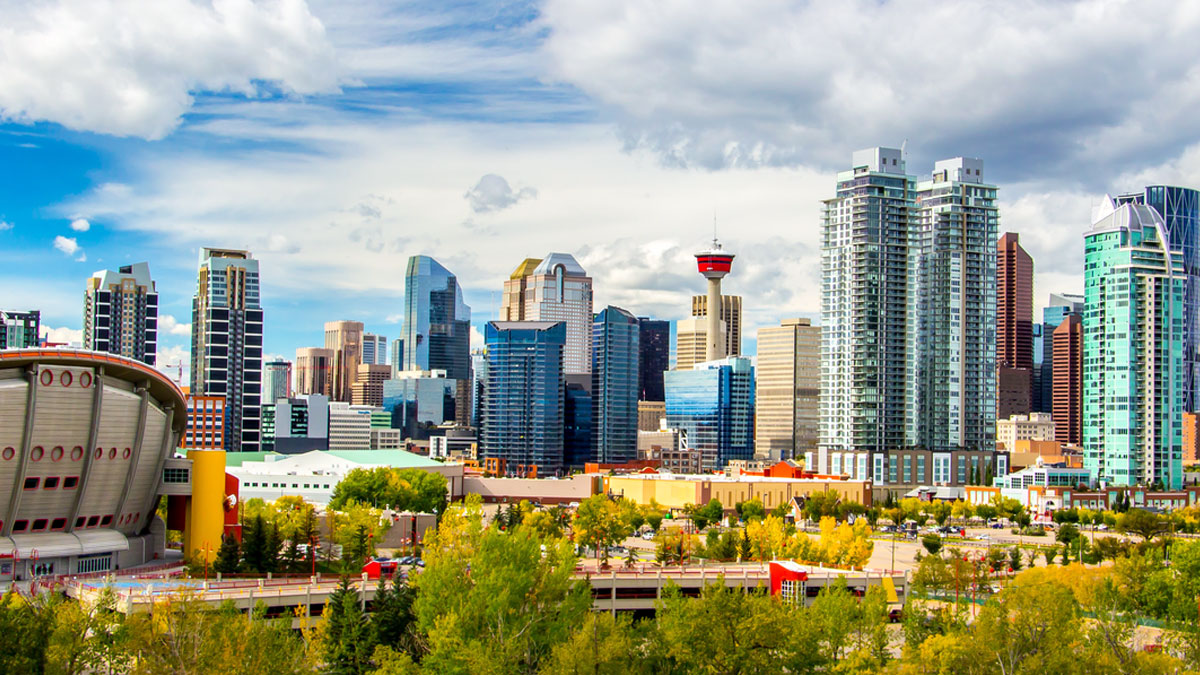
From exploring the Calgary Tower and the Glenbow Museum to the exciting world of the Calgary Zoo and Heritage Park Historical Village, you’ll never run out of fun tourist things to do in Canada here in Calgary.
Cypress Hills Interprovincial Park
Spanning across both Alberta and Saskatchewan, the Cypress Hills Interprovincial Park holds the unique distinction of being the highest point in Canada that’s east of the Rockies.

This park isn’t just a big tourist attraction in Canada for its heights; it also offers diverse ecosystems, a rich array of flora and fauna, and exciting activities like hiking, horseback riding, and camping.
Royal Tyrrell Museum in Drumheller
Nestled in the rugged Alberta badlands, the Royal Tyrrell Museum is a must-visit famous tourist attraction in Canada for every dino enthusiast.

Housing one of the largest displays of dinosaurs in the world, this paleontological museum provides a glimpse into our planet’s prehistoric past. It’s not every day you get to walk amongst dinosaurs, right?
Waterton Lakes National Park
Waterton Lakes National Park, where the prairies meet the mountains, is truly a sight to behold.

As a natural tourist attraction in Canada , Waterton offers a unique blend of unusual geology, mild climate, rare wildflowers, and abundant wildlife. Whether you enjoy hiking, wildlife viewing, or water sports, this park has got you covered!
Believe it or not, Peyto Lake’s striking turquoise hue is real, and it’s one of those cool places in Canada you want to visit .
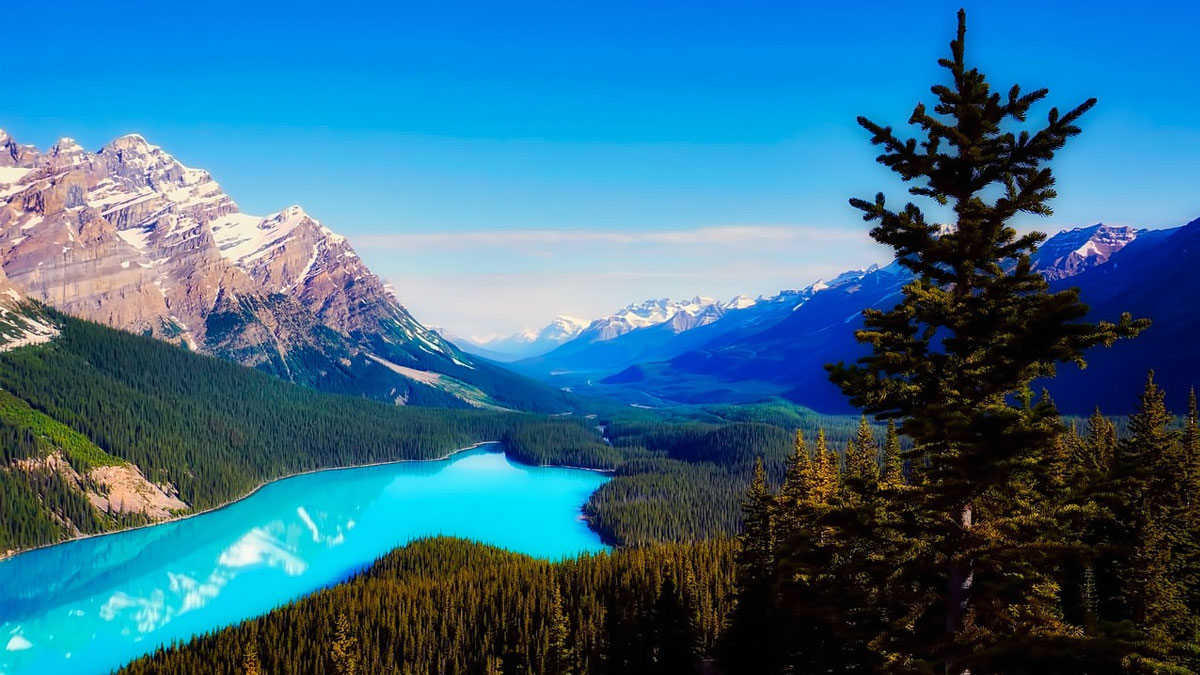
Thanks to the glacier rock flour that flows into the lake, Peyto Lake mesmerizes its visitors with its dazzling color during the summer months. It’s truly a photographer’s paradise!
Athabasca Falls
In the heart of Jasper National Park lies Athabasca Falls , one of the most powerful and picturesque waterfalls in the Rockies.

Not just another tourist attraction in Canada , the falls and its surrounding area offer several viewpoints and trails, each offering a unique perspective of the falls’ raw power and beauty.
Jasper National Park
Jasper National Park, the largest national park in the Canadian Rockies, is a nature lover’s dream come true.

From exploring the pristine wilderness and diverse wildlife to witnessing the ethereal beauty of glaciers or even the hot springs , Jasper has something for every outdoor enthusiast.
It is indeed a most visited tourist attraction in Canada .
Athabasca Glacier
Part of the colossal Columbia Icefield, the Athabasca Glacier is a must-see for any traveler. Here, you can take the Ice Explorer vehicle right onto the glacier or walk on the glass-floored Glacier Skywalk overlooking the Sunwapta Valley.

It’s an icy adventure like no other and undoubtedly one of the best tourist attractions in Canada .
British Columbia
Vancouver island.
Experience the best of nature and city life at Vancouver Island , a gem on the Pacific Northwest coast. Known for its diverse ecosystems — from rainforests and mountains to beautiful coastlines — Vancouver Island offers a variety of tourist activities in Canada .

Don’t miss out on the quaint city of Victoria, the stunning Butchart Gardens, and the wild waves of Pacific Rim National Park.
Vancouver’s Stanley Park
Stanley Park , a true urban oasis, is a must-visit in the heart of Vancouver city. As one of the big tourist attractions in Canada , this 405-hectare park offers a plethora of activities.
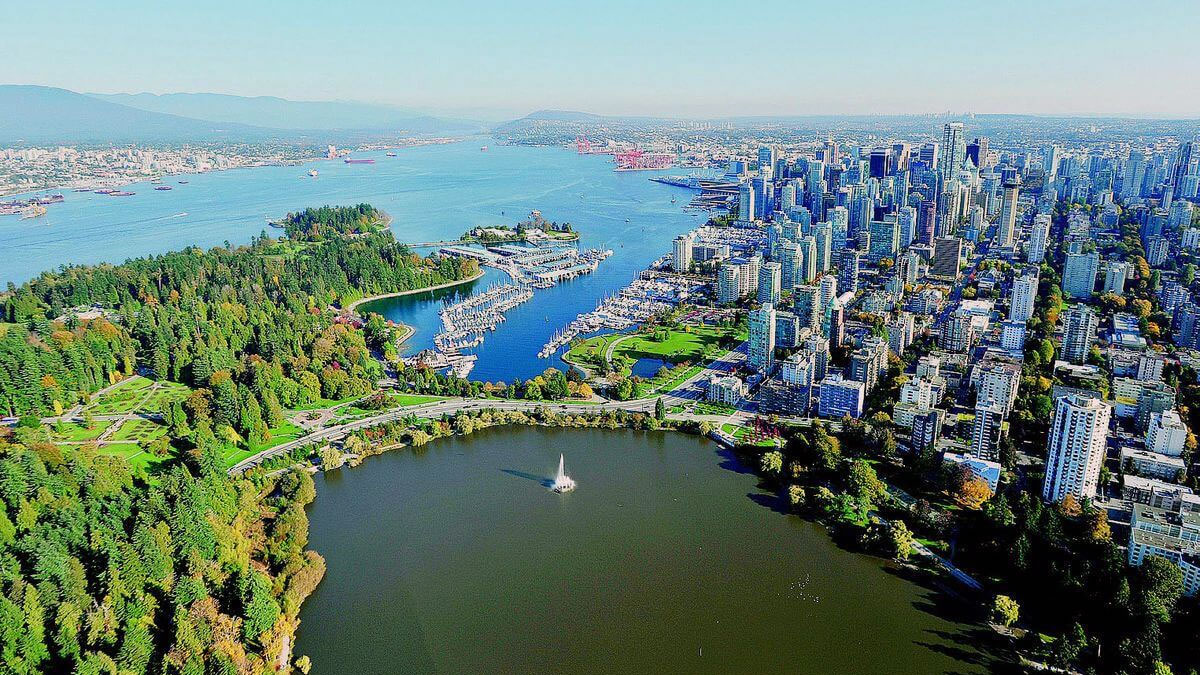
Wander along the seawall, marvel at the totem poles, visit the aquarium, or just enjoy the tranquility of the park’s many gardens. Stanley Park indeed has something for everyone.
Whistler , one of the most famous tourist attractions in Canada , is a paradise for winter sports enthusiasts.

Known worldwide for its ski slopes, Whistler was one of the host cities for the 2010 Winter Olympics. But don’t limit yourself to winter! The area offers hiking, mountain biking, and golf in the summer, not to mention the stunning Peak 2 Peak Gondola ride that operates year-round.
Considered a haven for surfers and nature lovers, Tofino sits on the rugged west coast of Vancouver Island.

With its expansive beaches, ancient rainforests, and stellar surfing conditions, it’s no wonder Tofino is one of the best tourist attractions in Canada .
And when you need a break from the waves, treat yourself to some local cuisine, notably the fresh-off-the-boat seafood!
Okanagan Valley
Okanagan Valley , renowned for its wineries and fruit orchards, offers more than just a good glass of wine. This sun-soaked valley is a popular tourist attraction in Canada for its lake activities, golf courses, and ski resorts.

Don’t forget to set aside time to explore Kelowna, the region’s largest city, and indulge in some farm-to-table dining experiences.
Garibaldi Lake
Situated in Garibaldi Provincial Park, Garibaldi Lake is a glacial lake known for its stunning turquoise-blue waters and breathtaking surrounding mountain ranges.
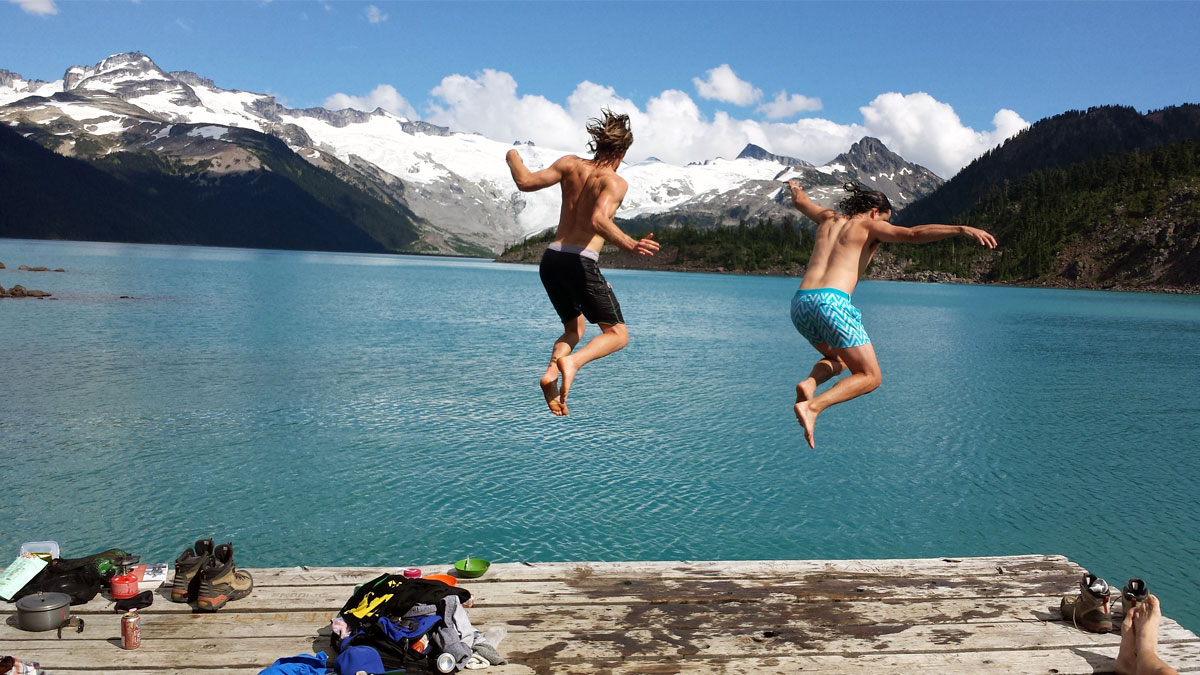
It’s a cool place to see in Canada , especially for hikers and campers. The hike to the lake is rewarding, with incredible views of glaciers, wildflower meadows, and volcanic rock formations.
Pyramid Lake
Nestled in the Canadian Rockies, Pyramid Lake is a picturesque spot that you can’t miss. This tranquil lake of Canada offers stunning mountain views and plenty of activities.

From kayaking and fishing in the summer to snowshoeing and cross-country skiing in the winter, Pyramid Lake is a versatile tourist attraction in Canada that you can enjoy year-round.
Cheakamus Lake
Tucked away in the beautiful Garibaldi Provincial Park, Cheakamus Lake is a little piece of paradise. This serene glacial lake is surrounded by towering cedars and firs and offers plenty of outdoor adventures.

From camping and fishing to scenic hiking trails, Cheakamus Lake is undoubtedly one of the natural tourist attractions in Canada you need to add to your bucket list.
Maligne Lake
One of the cool things to see in Canada is Maligne Lake in Jasper National Park .
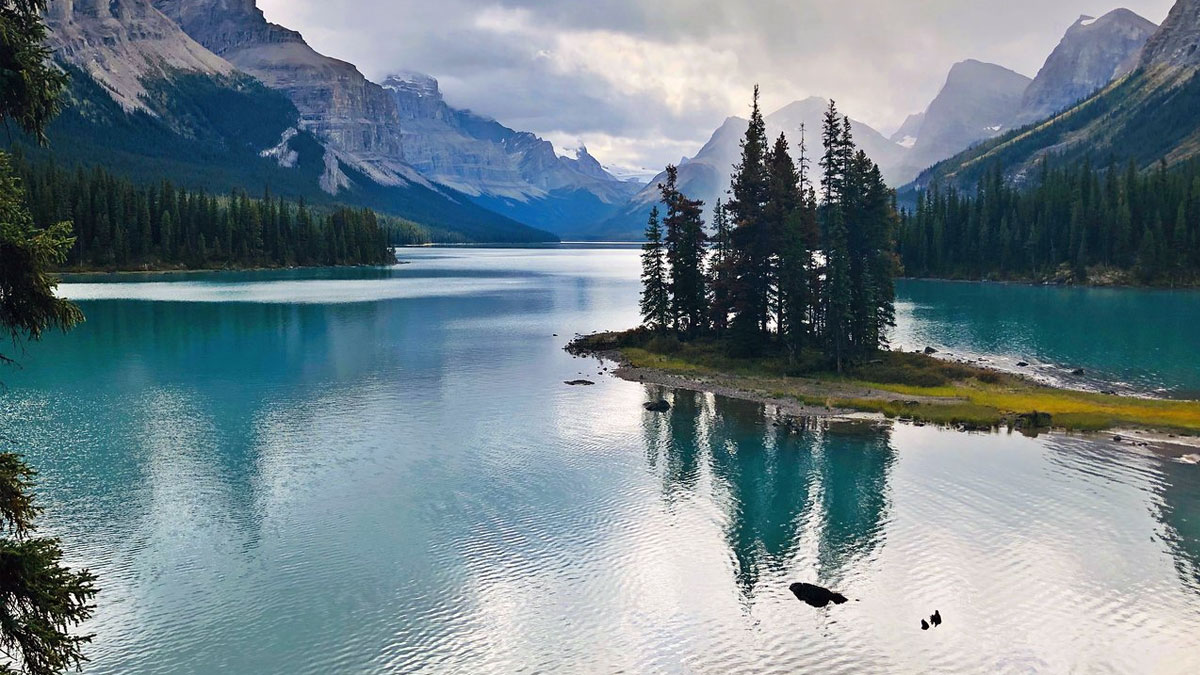
Known for its vibrant blue water, Spirit Island, and the surrounding snow-capped peaks, Maligne Lake is a hotspot for sightseeing cruises, kayaking, fishing, and hiking.
It’s an idyllic spot to experience Canada’s incredible outdoors.
Hornby Island
Hornby Island , a little piece of paradise in British Columbia, is a top spot for relaxation and recreation. It’s a popular tourist attraction in Canada thanks to its sandy beaches, clear waters, and stunning cliffs.
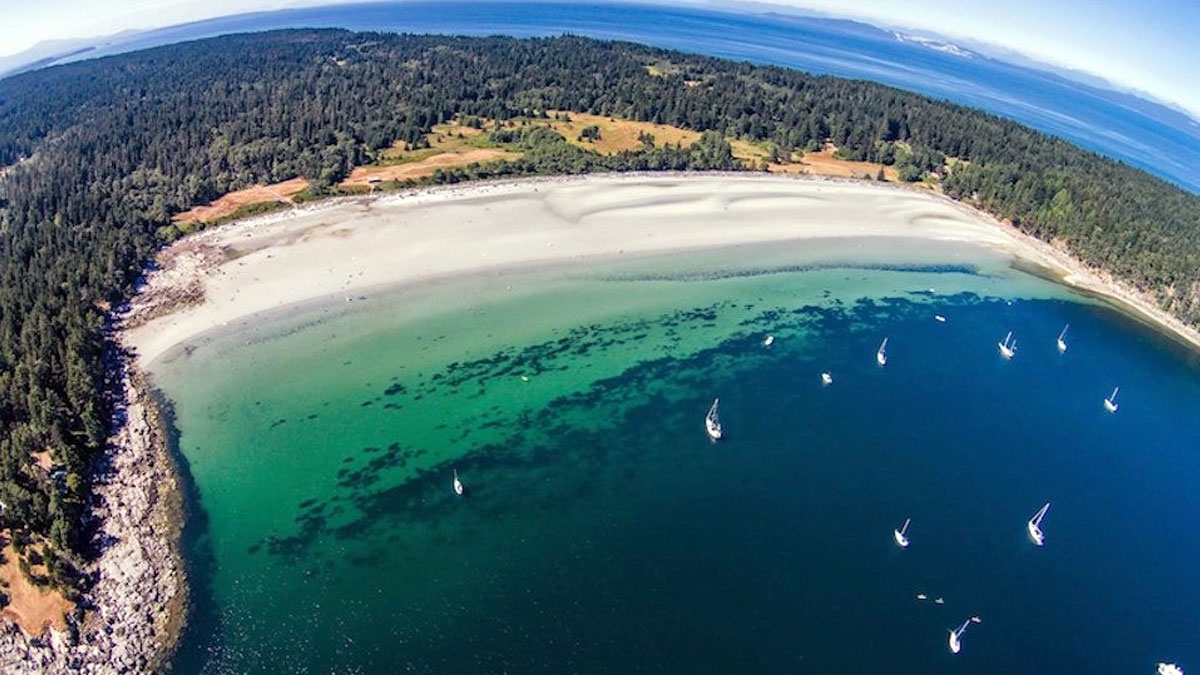
Don’t miss out on exploring the island’s wineries, artisan studios, and the chance to spot local wildlife like eagles, seals, and sea lions.
Capilano Suspension Bridge
Feel your heart race as you cross the Capilano Suspension Bridge , a famous tourist attraction in Canada located in Vancouver. Hovering 70 meters above the Capilano River, this 137-meter long bridge offers stunning views of the lush rainforest.

The park also features Treetops Adventure and the thrilling Cliffwalk for the more adventurous visitors.
Pacific Rim National Park Reserve
For anyone wondering “ what are the tourist attractions in Canada I should explore?” Pacific Rim National Park Reserve is a fantastic answer.

Situated on the west coast of Vancouver Island, this park is known for its long, sandy beaches, temperate rainforests, and rich cultural heritage. Experience the power of the sea, the tranquillity of the forest, and learn about the indigenous cultures of this region.
Victoria’s Inner Harbour
Victoria’s Inner Harbour isn’t just any harbour. It’s the heart of the city, bustling with activity. Here, you can tour the iconic Parliament Buildings or the Royal BC Museum, stroll down the charming waterfront, and indulge in some shopping and dining.

At night, the harbour lights up, providing a picturesque setting that makes it one of the most visited tourist attractions in Canada .
Polar Bears of Churchill, Manitoba
One of the most unique tourist attractions in Canada is undoubtedly the Polar Bear viewing in Churchill, Manitoba .
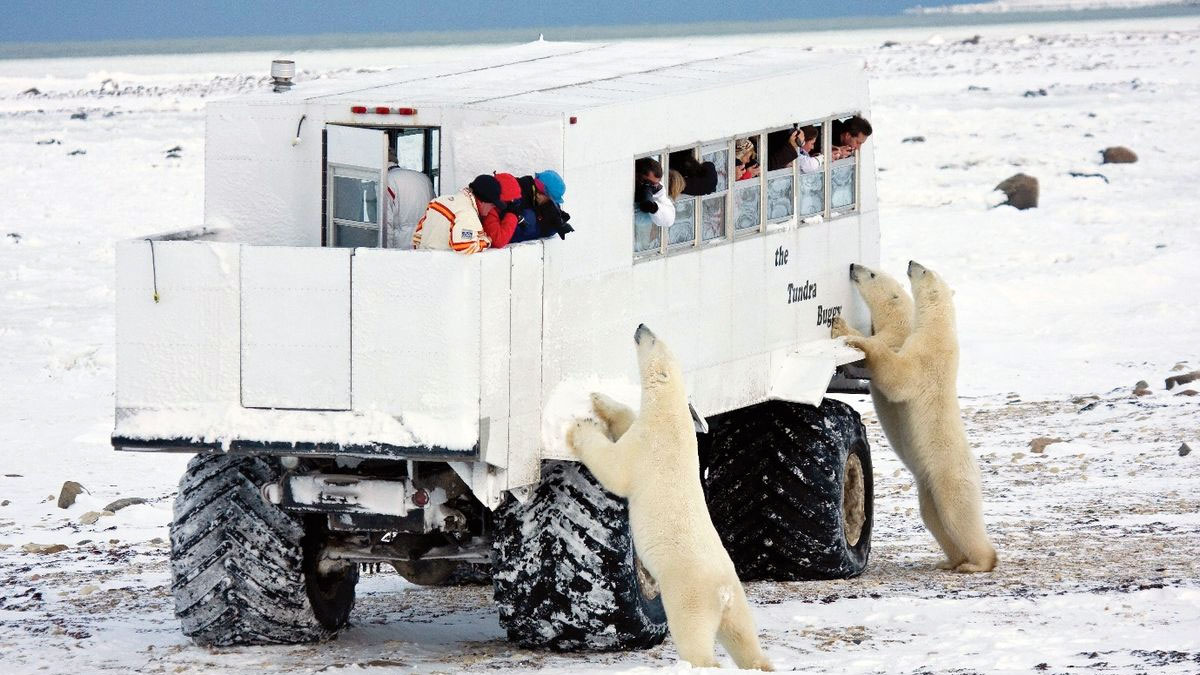
Recognized as the “Polar Bear Capital of the World,” Churchill offers guided tours where visitors can observe these majestic creatures in their natural habitat during the fall. It’s an unmissable experience!
Winnipeg , the capital of Manitoba, is a vibrant city that’s rich in culture and history. From the architectural splendor of the Canadian Museum for Human Rights to the lively atmosphere of The Forks, Winnipeg has something for everyone.

So, wondering about what famous tourist attractions are found in Canada ? Winnipeg won’t disappoint!
Manitoba, in general, is a province that boasts of diverse landscapes — from its prairies and forests to its lakes and rivers.
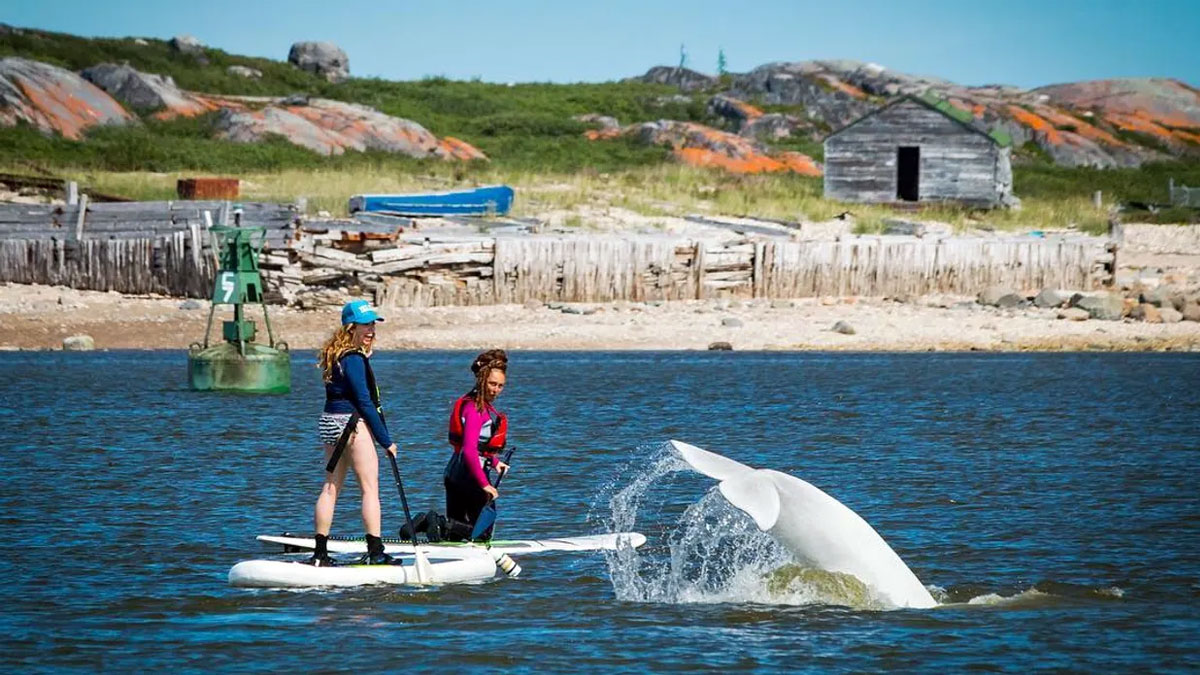
It’s known for its wildlife, with opportunities to see everything from bison to beluga whales. It’s also home to numerous cultural festivals, making Manitoba a fun-filled tourist attraction in Canada .
Riding Mountain National Park
Riding Mountain National Park is a natural sanctuary where the wild meets the plains. This park is a hub for outdoor enthusiasts, with activities such as hiking, wildlife viewing, camping, and boating.

The pristine forests, rugged cliffs, and clear lakes make this national park one of the natural tourist attractions in Canada .
The Forks, Winnipeg
Known as the “meeting place,” The Forks in Winnipeg is where the Red and Assiniboine rivers join.

This historic site is now a bustling hub of activity, featuring unique shops, delicious food, a beautiful riverwalk, and more. With its year-round events and attractions, The Forks is definitely a popular tourist attraction in Canada .
New Brunswick
Bay of fundy.
Home to the highest tides in the world, the Bay of Fundy is a marvel of nature. The tidal phenomenon leads to stunning transformations of the landscapes twice a day.
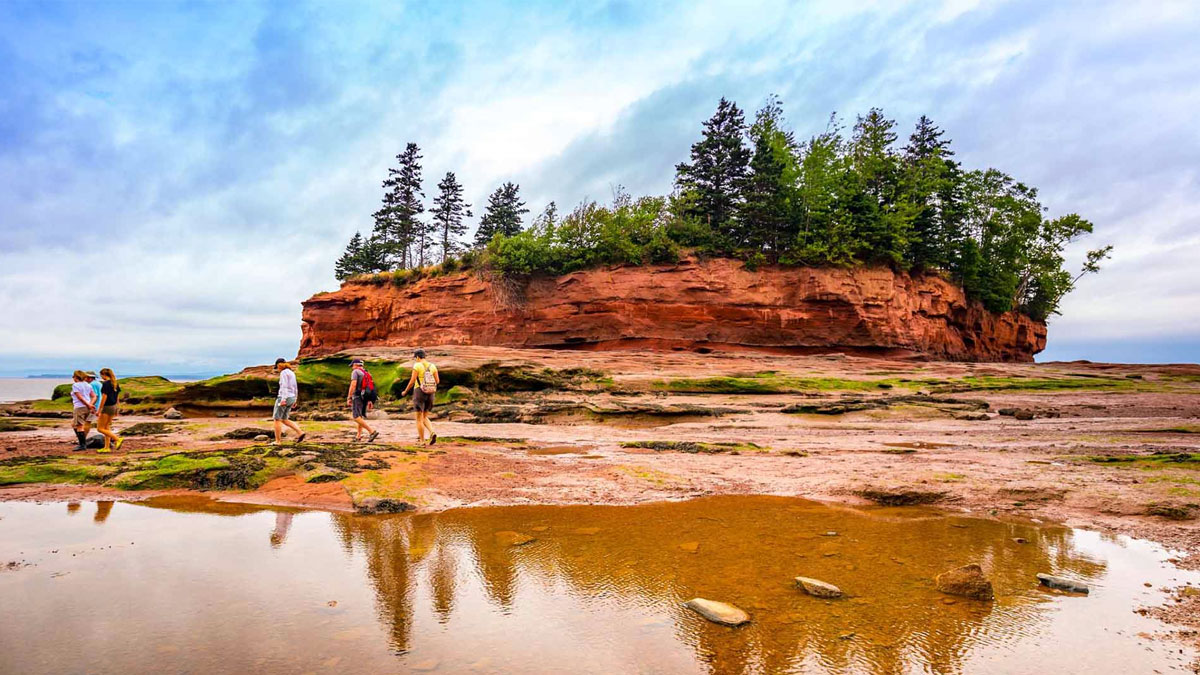
From whale watching to walking on the ocean floor at low tide, the Bay of Fundy is a must-visit tourist attraction in Canada .
Fundy National Park
Located on the Bay of Fundy, Fundy National Park offers diverse landscapes — rugged cliffs, dense forests, and some of the best beaches in Canada .
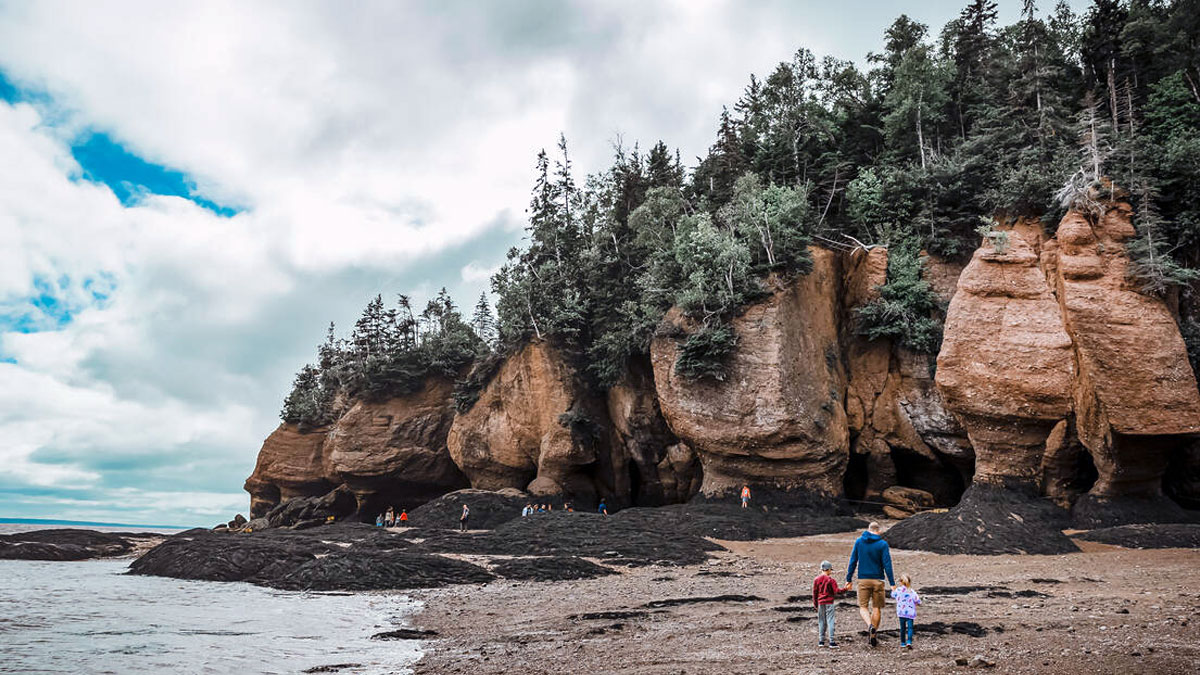
It’s a paradise for hikers, with over 100 km of trails, and a great spot for camping under the stars. This park is a shining example of the best tourist attractions in Canada .
Hopewell Rocks
Hopewell Rocks, also known as Flowerpot Rocks , are one of New Brunswick’s top attractions. At low tide, visitors can walk around the base of these unique rock formations. However, as the tide rises, these rocks turn into tiny islands.
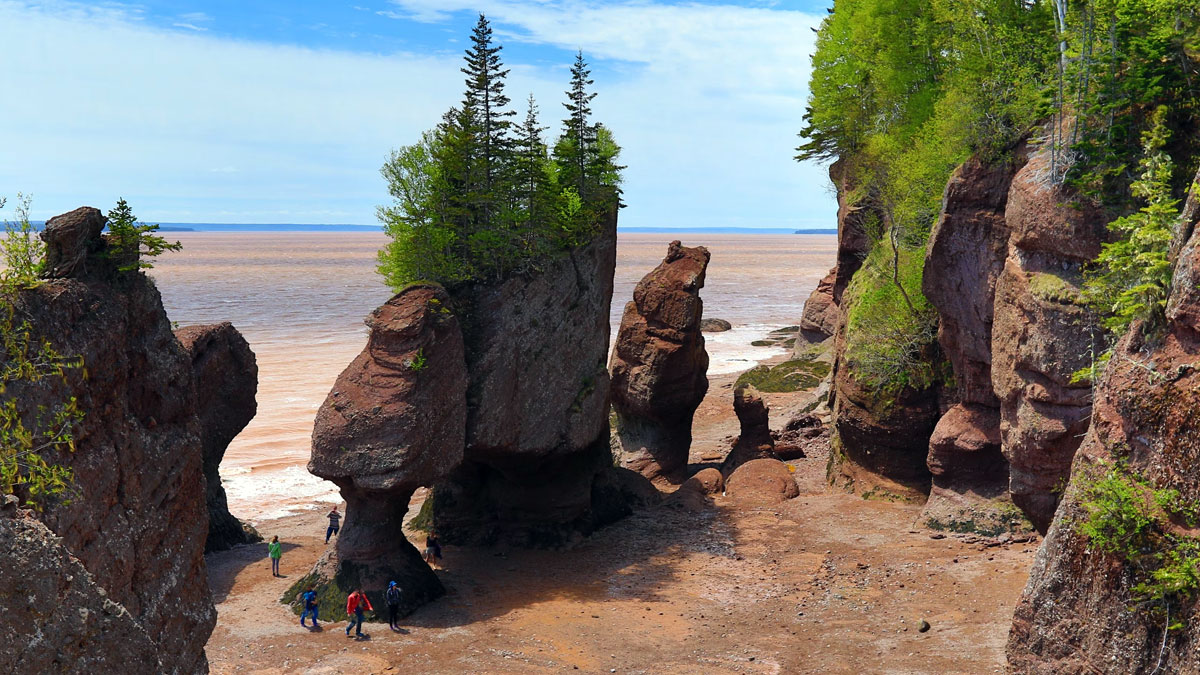
These continuously evolving formations are truly a sight to behold!
Saint John City Market
As the oldest continuing farmer’s market in Canada, Saint John City Market offers a vibrant atmosphere filled with fresh produce, local crafts, and international cuisine.
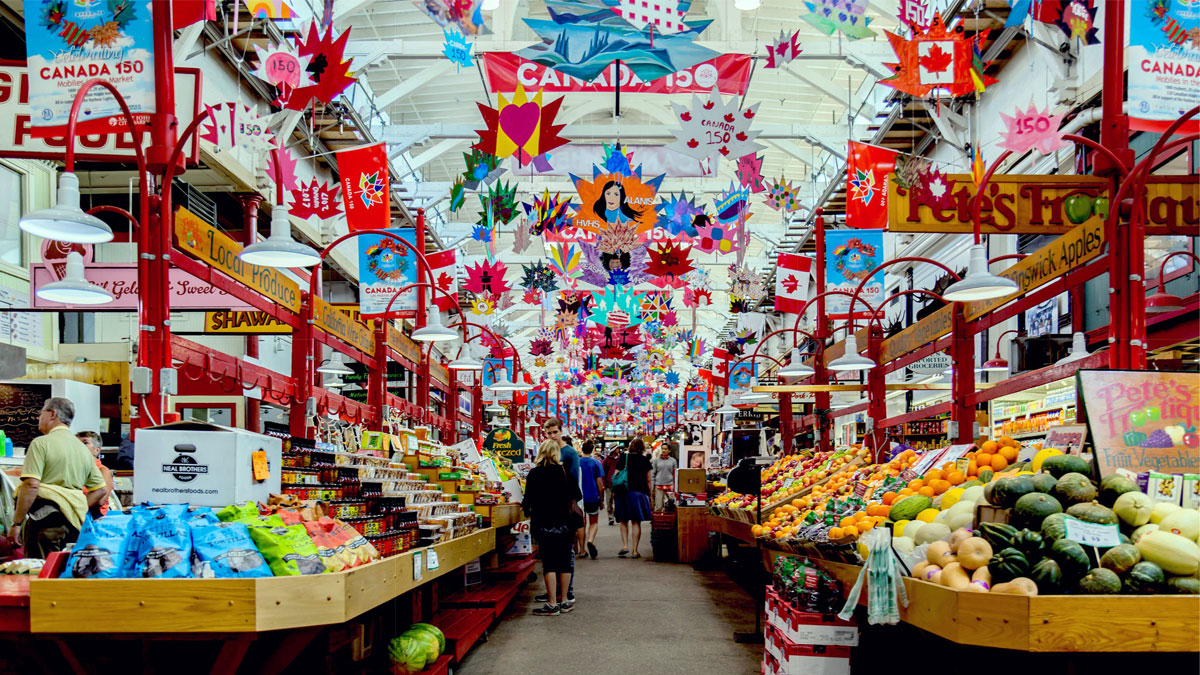
It’s not just a market; it’s an integral part of the community and a great place to experience the local culture.
Newfoundland and Labrador
St. john’s signal hill national historic site.
If you are on a quest to visit the big tourist attractions in Canada , St. John’s Signal Hill National Historic Site should be on your list.

It offers panoramic views of St. John’s and the Atlantic Ocean. Known for the first transatlantic wireless signal and its military history, it’s a destination steeped in historical significance.
Gros Morne National Park
A UNESCO World Heritage site, Gros Morne National Park , is a testament to the raw beauty of Newfoundland and Labrador.

From breathtaking fjords to barren cliffs, it offers a variety of landscapes and outdoor activities like hiking and boat tours. Without a doubt, it’s one of the best tourist attractions in Canada .
L’Anse aux Meadows National Historic Site
For a taste of Viking history, the L’Anse aux Meadows National Historic Site is your go-to destination. It’s the only confirmed Norse site in North America, and a UNESCO World Heritage site.
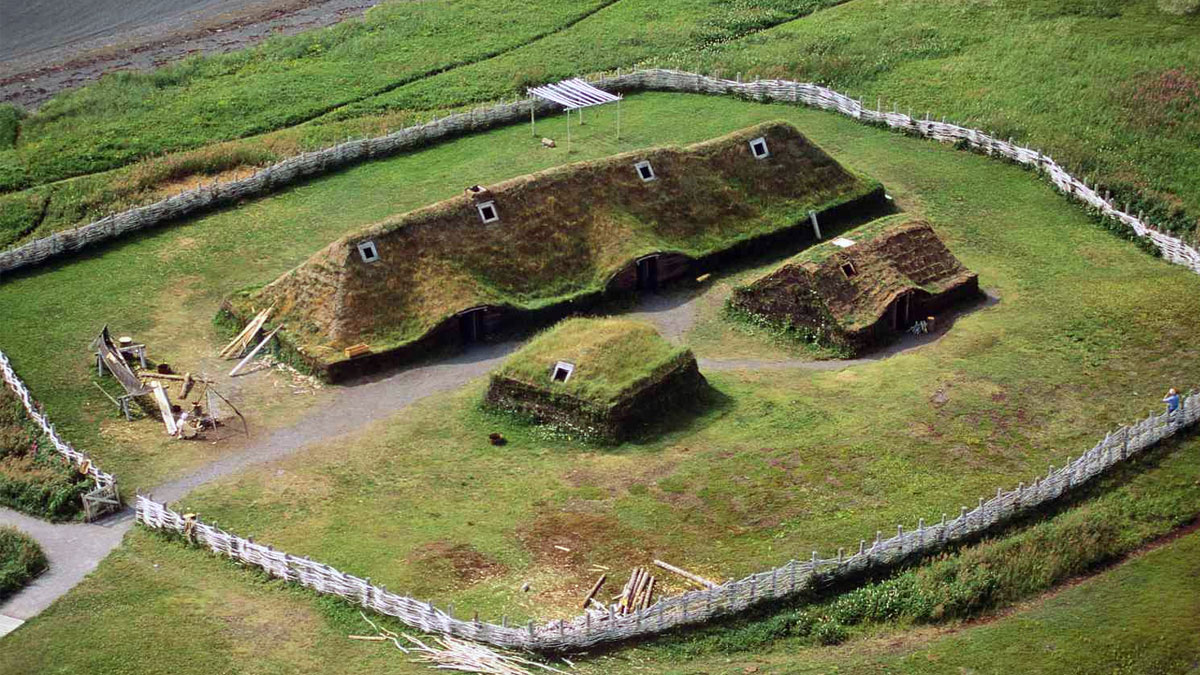
Walk around the reconstructed sod buildings and imagine life over a thousand years ago.
Terra Nova National Park
Terra Nova National Park , the first national park in Newfoundland and Labrador, offers a mix of forests, ponds, and rugged Atlantic coastline.

It’s a haven for wildlife and outdoor activities. Canoeing, camping, hiking, or watching the sunset over Newman Sound, you’ll be spoilt for choice.
Cape Spear Lighthouse National Historic Site
As the easternmost point in Canada, Cape Spear Lighthouse National Historic Site offers stunning views and a peek into the life of 19th-century lighthouse keepers.

Don’t forget to keep an eye out for icebergs, whales, and seabirds, making this site a famous tourist attraction in Canada .
Nova Scotia
Peggy’s cove.
In Nova Scotia, Peggy’s Cove, with its iconic lighthouse standing on the massive rocks against the Atlantic backdrop, is a sight to behold.

Often described as a painter’s paradise, its rustic charm, and the mesmerizing sunset will leave you captivated.
Cape Breton
Cape Breton , known for its scenic beauty and Celtic heritage, is one of the tourist things to do in Canada .

From the world-famous Cabot Trail to the enchanting Bras d’Or Lake, there’s something for everyone. And don’t miss the Gaelic and Acadian cultures present on this island.
Halifax Citadel National Historic Site
Halifax Citadel National Historic Site offers a trip back in time to the 19th century.

This fort offers sweeping views of Halifax, historical reenactments, and a chance to learn about the region’s military history. Fun fact: you can even become a soldier for a day!
Lunenburg , a UNESCO World Heritage site, is a vibrant port town known for its unique architecture and colorful waterfront.

Whether you are visiting the Fisheries Museum of the Atlantic or enjoying a waterfront dining experience, you’ll fall in love with Lunenburg’s charm.
Cabot Trail
Taking a drive on the Cabot Trail is one of the cool things to do in Canada . This scenic roadway in Cape Breton offers breathtaking views of the Gulf of St. Lawrence, the Atlantic Ocean, and the island’s highlands.

Make sure to stop for hiking, whale watching, and sampling local cuisine.
Toronto’s CN Tower
Arguably one of the most iconic structures in the country, Toronto’s CN Tower is a must-visit for anyone seeking the most visited tourist attractions in Canada .
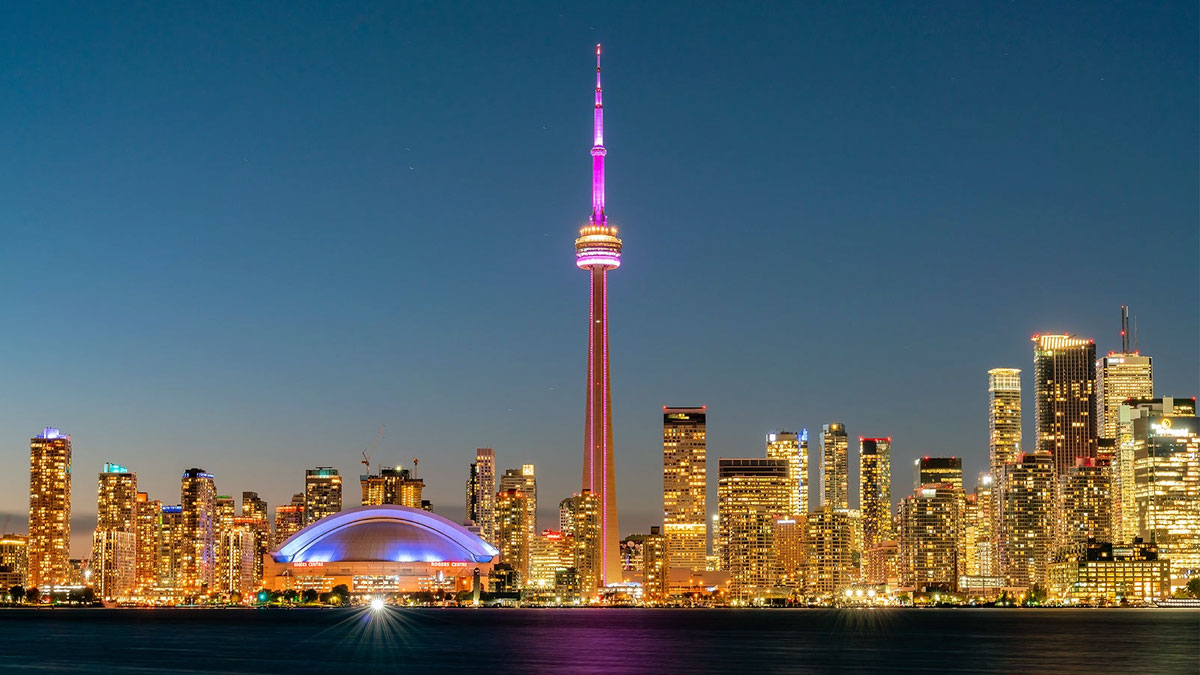
This architectural marvel, standing at a whopping 553.33 meters high, not only offers panoramic city views from its observation decks but also hosts a revolving restaurant for a dining experience with a view.
For the brave-hearted, there’s the Edge Walk – the world’s highest full-circle, hands-free walk.
Niagara Falls
Niagara Falls is an extraordinary spectacle of nature’s power and beauty, making it one of the famous tourist attractions in Canada .
Composed of three waterfalls, it is the most voluminous waterfall in North America.

Visitors can experience the falls up-close on a Maid of the Mist boat tour or from the Journey Behind the Falls. At night, the falls light up in a display of vibrant colors, creating a magical atmosphere.
Ottawa’s Parliament Hill
If you’re keen on immersing yourself in the heart of Canadian democracy, a visit to Ottawa’s Parliament Hill is in order.
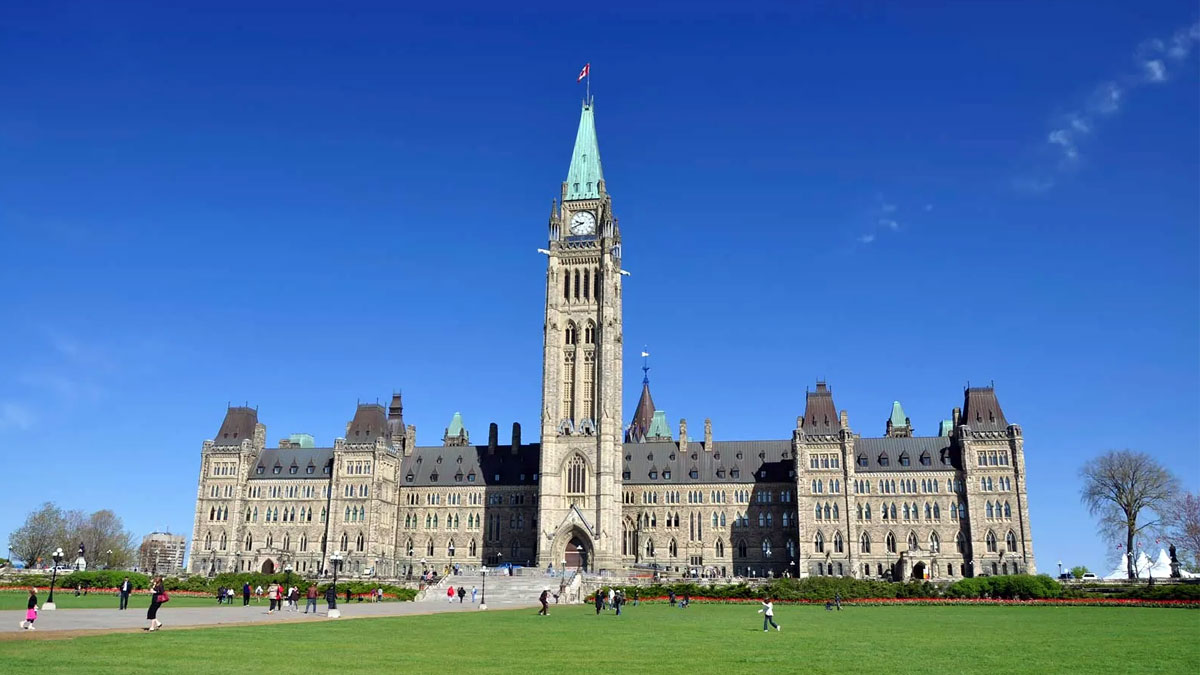
The stunning Gothic Revival-style buildings are home to Canada’s federal government. Visitors can explore the historic Centre Block, Peace Tower, and the House of Commons. During summer, don’t miss the Changing of the Guard ceremony held daily on the lawn.
Old Montreal
Old Montreal , located in the heart of the city, offers a charming throwback to the early French settlers’ era.

With its cobbled streets, historic buildings, and quaint shops, it’s like stepping into a European town. One of its highlights is the stunning Notre-Dame Basilica, known for its grand interior.
Rideau Canal
A historic waterway and UNESCO World Heritage site, the Rideau Canal is one of the best tourist attractions in Canada .

In summer, it’s a haven for boaters, cyclists, and walkers. Come winter, it transforms into the world’s largest skating rink. No matter the season, the canal offers a delightful experience.
Algonquin Provincial Park
Algonquin Provincial Park , Ontario’s first and most famous park, is a paradise for nature lovers and outdoor enthusiasts.

It is home to a vast network of lakes, rivers, and forests that offer countless trails for hiking , canoe routes, and opportunities for wildlife viewing.
The park’s Visitor Centre exhibits its natural and human history, making it a great educational visit.
Lake Louise
Although technically located in Alberta, Lake Louise is such a notable attraction that it bears mentioning here. Renowned for its turquoise, glacier-fed lake ringed by high peaks, this place is postcard-perfect.

Hiking, canoeing, or simply soaking in the majestic views, Lake Louise is an emblem of Canadian natural beauty.
The Canadian
Embarking on a journey aboard “ The Canadian ,” VIA Rail’s iconic transcontinental train, is one of the cool things to do in Canada .

This four-night, three-day trip from Toronto to Vancouver offers an unparalleled view of Canada’s diverse landscapes — from the vast prairies and the Canadian Shield’s rocky expanse to the stunning Rockies.
Hockey Hall of Fame
For sports enthusiasts, especially hockey fans, the Hockey Hall of Fame in Toronto is a must-visit. This museum hosts exhibits about players, teams, NHL records, memorabilia, and NHL trophies, including the Stanley Cup.

Interactive games and displays ensure an engaging visit for all ages.
Toronto Zoo
With over 5,000 animals representing 450 species, the Toronto Zoo is one of the largest in the world.

Divided into geographical regions, the zoo allows visitors to explore the diversity of the world’s wildlife without leaving Ontario. It also contributes to conservation efforts, making it more than just an entertainment venue.
Thousand Islands National Park
Located along the Saint Lawrence River, T housand Islands National Park is made up of over 20 islands and several mainland properties.

This park offers unique camping experiences, such as oTENTik, a cross between a tent and a cabin. It’s also home to a diverse range of wildlife and a popular destination for boating, fishing, and hiking.
Prince Edward Island
Green gables heritage place.
Green Gables Heritage Place , located in Cavendish, is a must-visit for fans of Lucy Maud Montgomery’s “Anne of Green Gables.” This historical site brings to life the beloved tale of the red-haired Anne Shirley.

Visitors can explore the original Green Gables house, the Haunted Woods, and Lover’s Lane, exactly as they are described in the books.
They can also visit the interpretive centre to learn more about the author’s life and works. This site offers a glimpse into Canada’s cultural heritage and is a popular tourist attraction in Canada .
Basin Head Provincial Park
Basin Head Provincial Park , located on the eastern coast of PEI, is home to the famous Singing Sands Beach. Yes, you read that right — the beach sings! The sand grains on this beach make a unique sound when walked upon due to their shape and high silica content.

Besides this unique feature, the park boasts clear blue waters, a fisheries museum, and ample opportunities for fun activities like swimming and beachcombing. An excellent spot for a relaxing day in the sun, Basin Head Provincial Park is a natural tourist attraction in Canada that you won’t want to miss.
Cavendish Beach
Located inside Prince Edward Island National Park, Cavendish Beach is a vision of red sand and rolling dunes against the backdrop of the Atlantic Ocean.
This beach is perfect for sunbathing, beachcombing, and swimming. You might even spot a seal or two bobbing in the water! The sunset views here are nothing short of magical.

Be sure to also check out the nearby Green Gables Heritage Place and the Cavendish Boardwalk for shopping and dining. A day at Cavendish Beach is a day well spent and is one of the best tourist attractions in Canada .
Confederation Bridge
Confederation Bridge , the longest bridge in the world crossing ice-covered water, is a marvel of engineering.
Connecting Prince Edward Island with mainland New Brunswick, this 12.9-kilometer (8 miles) bridge offers breathtaking views of the Northumberland Strait.

The bridge is also a testament to the feats of human engineering, making it a famous tourist attraction in Canada .
You can drive, bike, or even walk across the bridge during the annual bridgefest. However, walking is not allowed at other times.
On either side, you’ll find visitor information centers with interpretive displays about the bridge’s construction.
Old Quebec (Vieux-Quebec)
As a UNESCO World Heritage site, Old Quebec, or Vieux-Quebec , boasts of rich history and European charm. With its fortified city walls – the only ones north of Mexico – quaint cobblestone streets, and centuries-old buildings, it’s a journey back in time.

You’ll be charmed by the picturesque Place Royale, the stunning Château Frontenac, and the captivating Petit Champlain district, all serving as remnants of the province’s vibrant past. Truly, Old Quebec stands as one of the most significant tourist attractions in Canada .
Quebec City
Quebec City , the province’s capital, is not only stunningly beautiful but also packed with history. With its fascinating blend of old-world charm and modern dynamism, Quebec City promises a unique experience.

Visit the captivating Quartier Petit Champlain, known as the oldest shopping district in North America, take a stroll along the Dufferin Terrace for a breathtaking view of the St. Lawrence River, or enjoy the vibrant culinary scene. It’s impossible not to love Quebec City!
Montreal , the largest city in Quebec, is a city that mixes the old with the new in the most seamless way.
Explore the historic Old Montreal, with its stunning architecture and old-world charm, or experience the city’s modern side by visiting the famous Montreal Museum of Fine Arts or shopping on Saint Catherine Street.
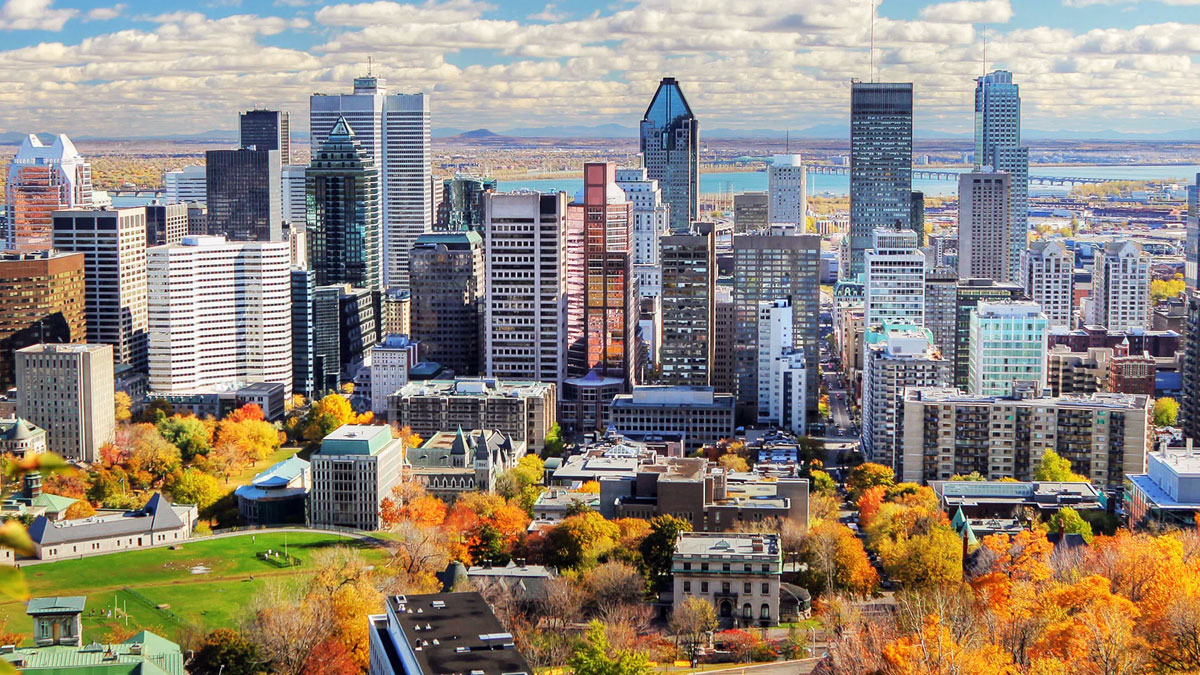
Enjoy a hike up Mount Royal for a panoramic view of the city or unwind in the beautiful Montreal Botanical Garden. And let’s not forget about the city’s rich culinary scene, with a smorgasbord of dining options that are sure to delight every palate.
Mont Tremblant
Mont Tremblant , a city in the Laurentian Mountains, is known primarily for its skiing. But this tourist attraction in Canada offers much more.

In the summer, the mountain becomes a hub for hiking, biking, golfing, and water sports. And no matter the season, the pedestrian village at its base is always buzzing with activity, offering a wide array of shops, restaurants, and events.
Montmorency Falls
Just a few minutes from Quebec City, you’ll find Montmorency Falls , an impressive waterfall that’s actually higher than Niagara Falls.

Take the cable car up for a breathtaking view, walk across the suspension bridge for a bit of a thrill, or, if you’re visiting in the winter, marvel at the enormous “sugar loaf”, an impressive accumulation of ice at the base of the waterfall.
Whether you’re an adventurer or a nature lover, Montmorency Falls is a must-see.
Forillon National Park
At Forillon National Park , situated on the eastern tip of Gaspé Peninsula, you can hike through forested trails, walk along the rugged coastline, or explore the underwater world with snorkeling.

You might even spot some wildlife, including seals, whales, and various bird species. With its array of ecosystems and breathtaking landscapes, Forillon is a testament to Quebec’s natural beauty.
Mingan Monoliths
In the heart of the Gulf of St. Lawrence, you’ll find the Mingan Archipelago National Park Reserve , home to the stunning Mingan Monoliths .

These limestone formations, carved by time and the sea, stand as natural sculptures on the coastline, creating a landscape unlike any other.
This under-the-radar destination is an unmissable tourist activity in Canada for anyone with a love for unique, natural beauty.
Last but not least, Parc Omega allows you to discover the wildlife of Canada without leaving the comfort of your car.

Located just an hour from Ottawa, this safari park is home to deer, elks, bisons, wolves, and many more species, most of which can be seen up close.
Additionally, the park offers a traditional First Nations house, a pioneer’s house, and a maple sugar shack, all adding to the richness of your visit.
Saskatchewan
Regina , the capital city of Saskatchewan, is brimming with activities that highlight its rich heritage and diverse culture.
A must-visit is the Royal Saskatchewan Museum, where you can learn about the province’s natural history and Indigenous cultures. Another remarkable spot is the Saskatchewan Science Centre, an interactive museum ideal for families. The Wascana Centre, one of North America’s largest urban parks, provides a breath of fresh air amidst city life.

With its picturesque lake and walking trails, it offers a perfect outdoor setting for both relaxation and adventure. Truly, Regina is a city that offers a mix of urban attractions and natural beauty, making it one of the most visited tourist attractions in Canada .
Grasslands National Park
Grasslands National Park , as its name suggests, is a celebration of vast open prairies and stunningly beautiful grasslands. But it’s not just about the grass; it’s home to a diverse range of wildlife, including bison, pronghorns, and over 200 species of birds.

For history enthusiasts, the park houses several archaeological sites featuring teepee rings and ancient bison drive lanes. With its pristine landscapes, dark sky preserve, and rich history, Grasslands National Park definitely fits the bill as a natural tourist attraction in Canada .
Wanuskewin Heritage Park
Wanuskewin Heritage Park stands as a testament to the cultural heritage of the Northern Plains Indigenous peoples.
This National Historic site offers a deep dive into 6000 years of Indigenous history and traditions.
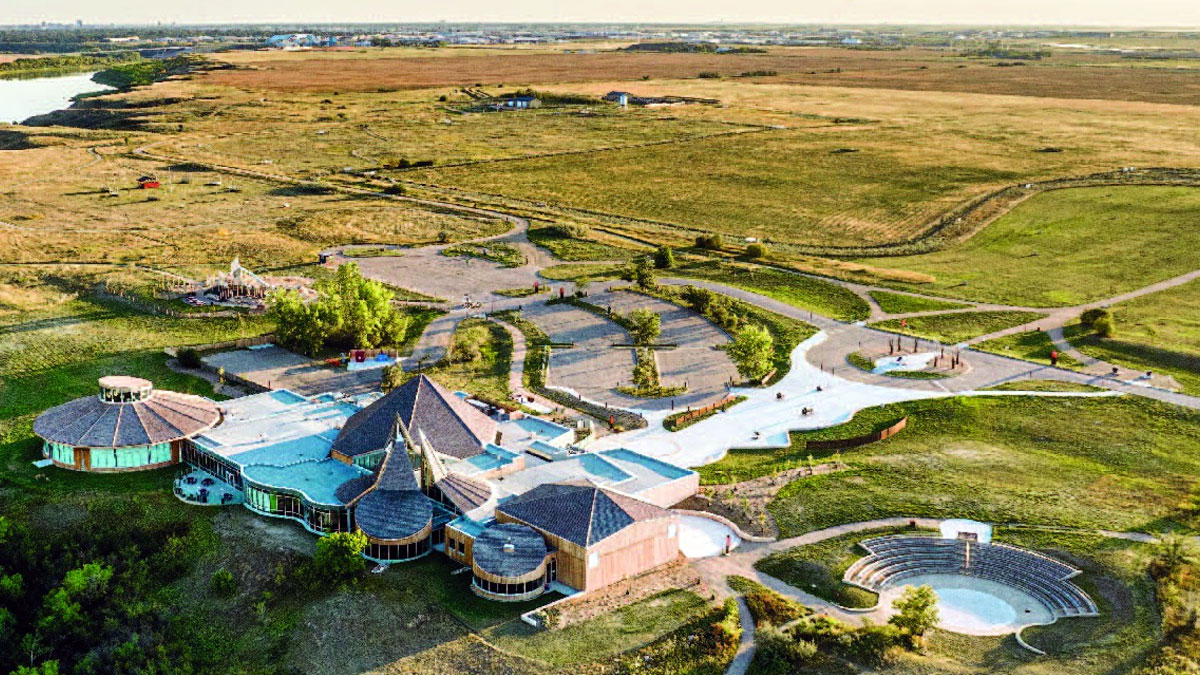
From exploring archaeological digs to walking the ancient trails, from participating in traditional dances to tasting Indigenous cuisine, you’re in for an enriching experience. This fusion of culture, history, and nature makes Wanuskewin Heritage Park one of the unique tourist attractions in Canada .
Prince Albert National Park
Prince Albert National Park , situated in the heartland of Saskatchewan, is a place where prairies meet pine forests, and wildlife roams free. Whether you’re a fan of watersports, hiking, or wildlife spotting, this park has it all.

Keep an eye out for free-ranging bison, elk, and white pelicans. Don’t forget to visit the cabin of Grey Owl, one of Canada’s earliest conservationists.
A visit to this park offers a genuine encounter with Canada’s untamed wilderness.
Athabasca Sand Dunes Provincial Park
An unlikely sight in the heart of Canada, the Athabasca Sand Dunes Provincial Park is one of the largest active sand surfaces in the world and the most northerly major sand dune formation on Earth.

This remote park, accessible only by floatplane, features rare plants that can’t be found anywhere else. For the adventurous souls who make the journey, they’ll be rewarded with an otherworldly landscape that’s as beautiful as it is surprising.
The Yukon, a territory in northwest Canada, is wild, mountainous, and sparsely populated. Known for the Klondike Gold Rush and its indigenous heritage, the Yukon offers an adventure that goes beyond the ordinary.
From witnessing the ethereal Northern Lights to exploring its expansive, untouched wilderness, the Yukon is one of the most visited tourist attractions in Canada .
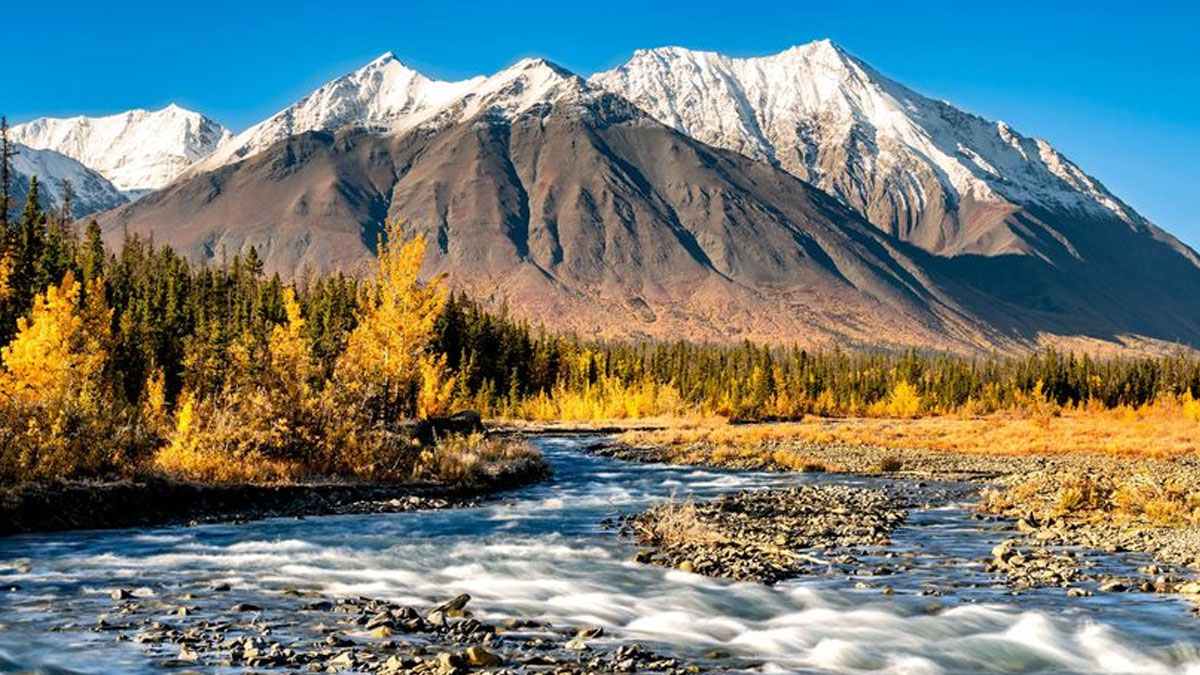
The Yukon is also home to Canada’s highest peak, Mount Logan, situated in Kluane National Park and Reserve. For history buffs, the Yukon’s gold rush history offers a fascinating journey into the past, with Dawson City at its heart.
Whitehorse , the capital of Yukon, is not just any city. It’s a place where nature and urban living harmoniously intertwine. It’s not unusual to spot a moose wandering down the main street or watch the Northern Lights dancing above the city skyline.
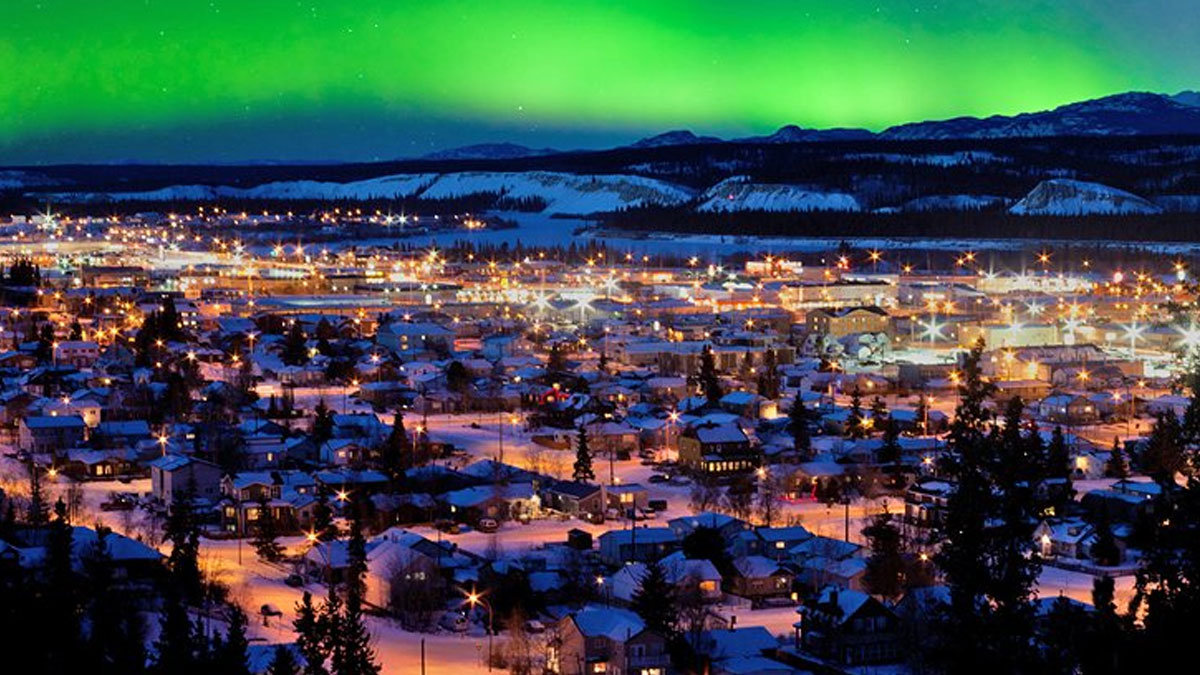
One of the cool places to see in Canada , Whitehorse offers various activities. You can paddle down the Yukon River, explore the SS Klondike – a sternwheeler boat that’s now a National Historic Site, or immerse yourself in the rich indigenous culture at the Kwanlin Dün Cultural Centre.
Whitehorse’s vibrant art scene, with galleries showcasing local artists, and its culinary delights, add to the city’s charm.
Dawson City
Travel back in time in Dawson City , the heart of the Klondike Gold Rush. The wooden boardwalks, vintage buildings, and old-time saloons will make you feel as if you’ve stepped into a western movie. It’s a place that tells the tale of the Yukon’s history, making it one of the famous tourist attractions in Canada .
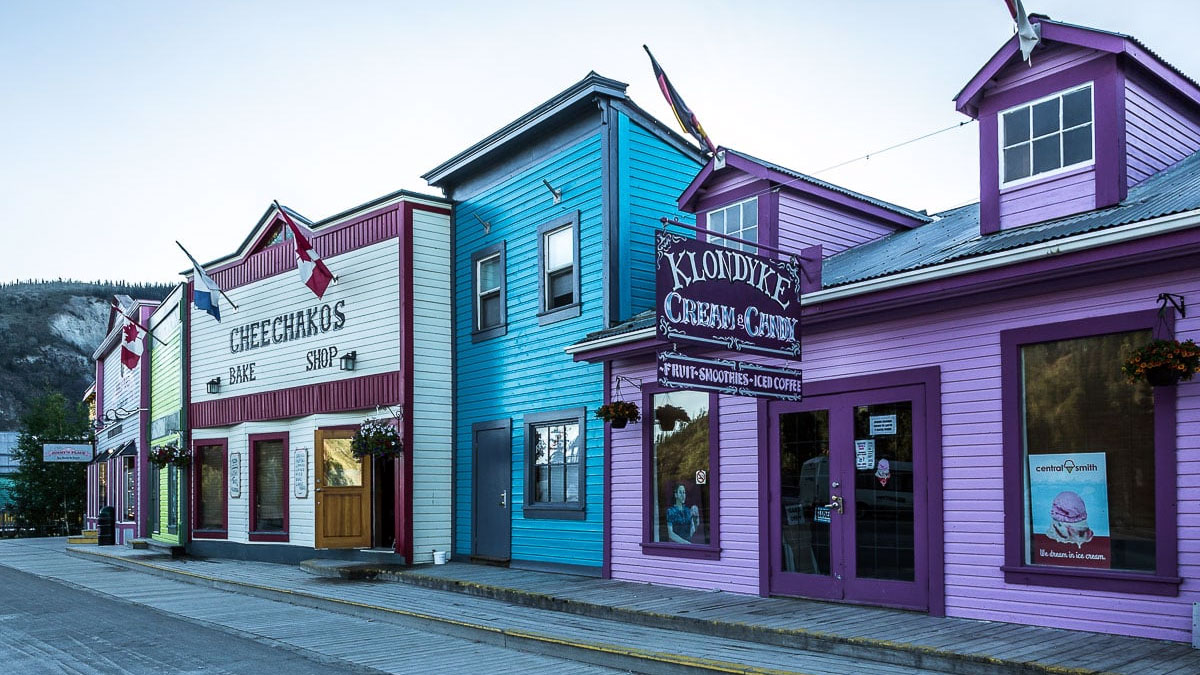
Visit the Dawson City Museum, take a tour of the old gold fields, or try your luck at gold panning – Dawson City offers a glimpse into the heady days of the Gold Rush. And don’t miss the chance to watch a cancan show at Diamond Tooth Gerties, Canada’s oldest gambling hall.
Kluane National Park and Reserve
Kluane National Park and Reserve , home to Canada’s highest peak, Mount Logan, is a wilderness of pristine glaciers, alpine meadows, and breathtaking mountain vistas. Its grandeur and beauty are nothing short of awe-inspiring, making it one of the natural tourist attractions in Canada .

The park offers several outdoor activities such as hiking, rafting, flightseeing tours, and camping. Wildlife enthusiasts can spot a range of animals like grizzly bears, moose, wolves, and Dall sheep.
For a more leisurely experience, you can relax and fish at Kathleen Lake or visit the park’s cultural sites to learn about the indigenous people’s heritage.
Tombstone Territorial Park
Tombstone Territorial Park , named for its granite peaks resembling tombstones, is a place of rugged, raw beauty. Its dramatic landscapes, with rugged peaks, permafrost landforms, and vibrant tundra, are a photographer’s dream.

Summer brings wildflowers and migrating birds, while fall in the park is a riot of colours, making it a stunning tourist attraction in Canada . It’s a hiker’s paradise, with trails offering scenic views, and a great place to spot wildlife like caribou, moose, and black bears. Plus, the Dempster Highway, one of the cool things to see in Canada , runs through the park, offering an epic road trip.
The Yukon, with its stunning landscapes, rich history, and vibrant culture, shows us another side of Canada.

Discover the Top 10 Cheap Places to Travel in Mexico
Top Mexico Travel Tips for a Safe and Memorable Adventure
Discover 41 Breathtaking Waterfalls in Canada that You Must Visit
Top 10 Beaches in Mexico: The Best of The...
Discover the Top 10 Cheap Places to Travel in...
Top Mexico Travel Tips for a Safe and Memorable...
- North America 35
- United States 21

10 Most Incredible Natural Attractions in Canada
By: Author Taylor Lorenz
Posted on Last updated: 11/04/2021
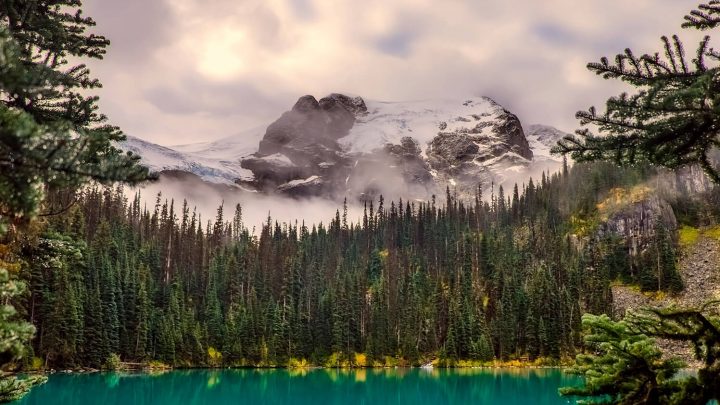
It’s no secret that Canada is a stunner and many come to the country just to visit the absolutely breathtaking scenery within the borders. From massive lakes to towering mountains, snow and ice and unique wildlife, Canada is a must-see destination for any nature lover.
Get your camera ready because these top spots you’re going to want to remember forever and are totally Instagram worthy.
Table of Contents
Northern Lights

WHERE: Yukon, Nunavut and Northwest Territories
Also known as Aurora Borealis, there is no better light show in the world. Luckily Canada has a few spots where you can spot these magnificent colours.
Niagara Falls
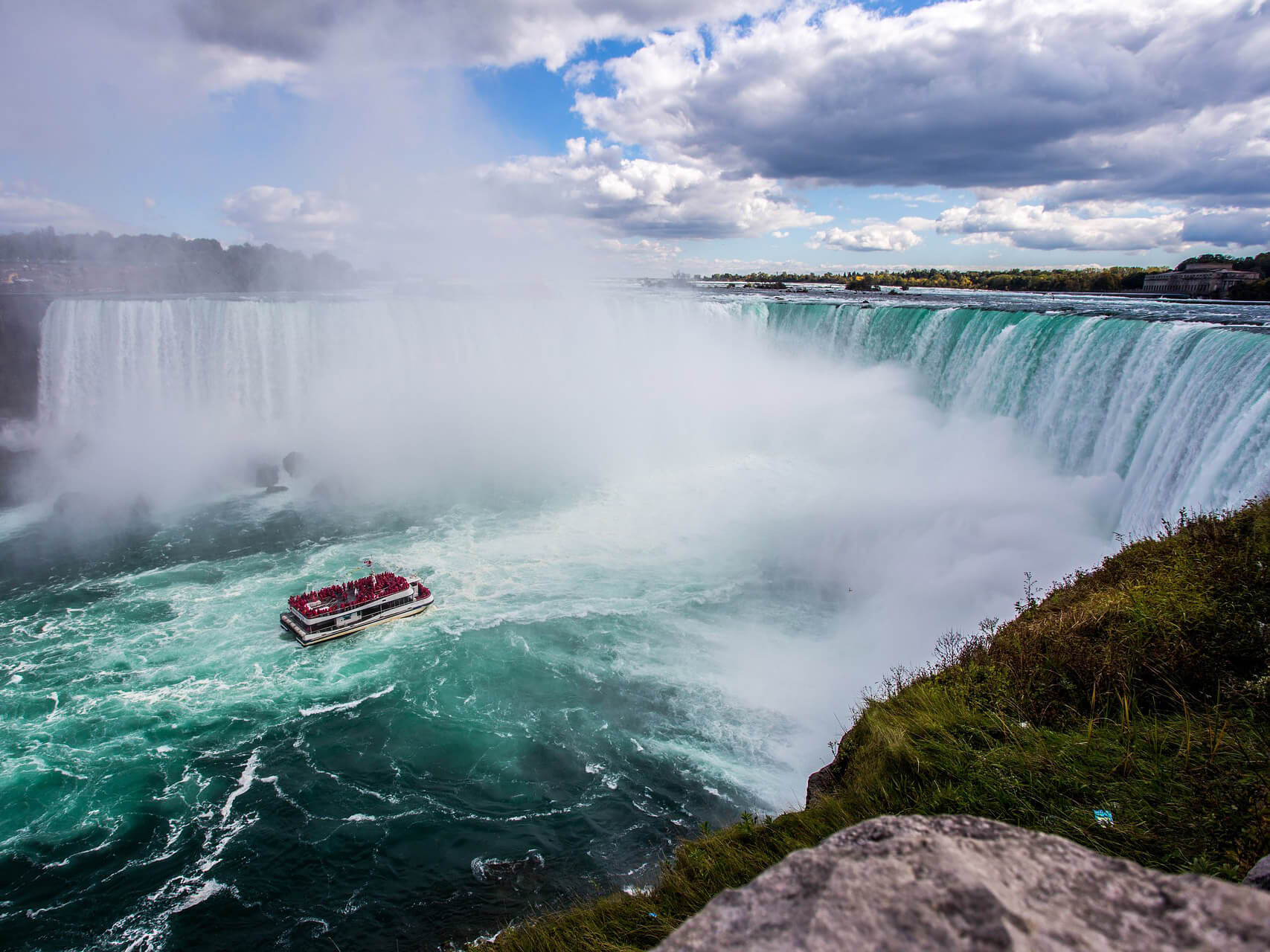
WHERE: Ontario
Niagara Falls is what Canada is known for and is the country’s biggest attraction. It draws in millions of visitors a year to see the spectacular power of the falls. It is a spot that truly has to be witnessed in person.
READ MORE: Niagara Falls for All Ages
Dinosaur Provincial Park
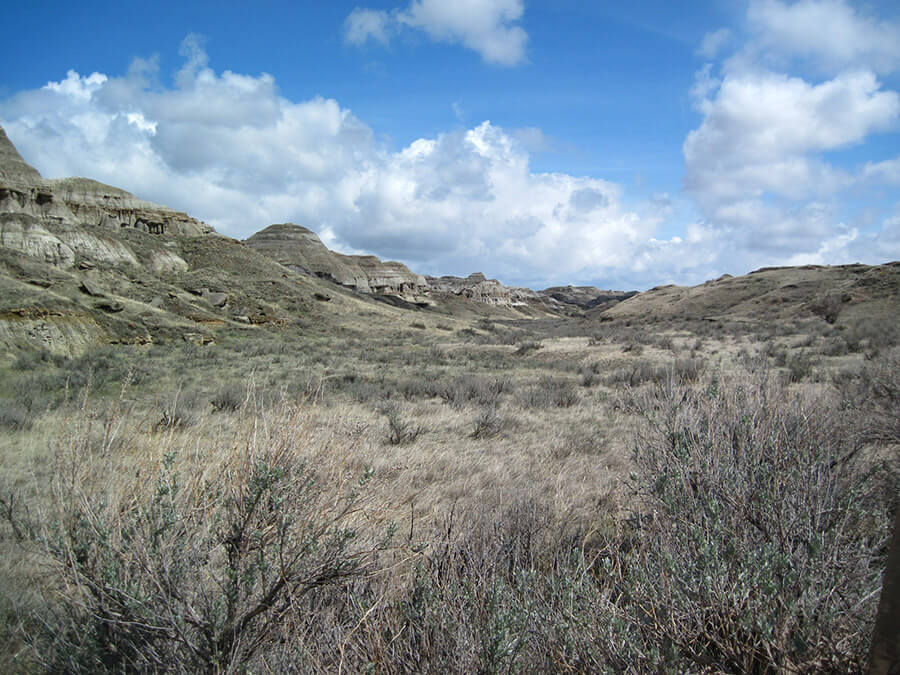
WHERE: Alberta
You can call it the Jurassic Park of Canada. This provincial park is known as one of the world’s biggest dinosaur graveyards. Over 40 species of dinosaurs have been found here because back in the day it was a popular spot for all sorts of prehistoric life. Nature or history buff, this is the place for you.
Hopewell Rocks
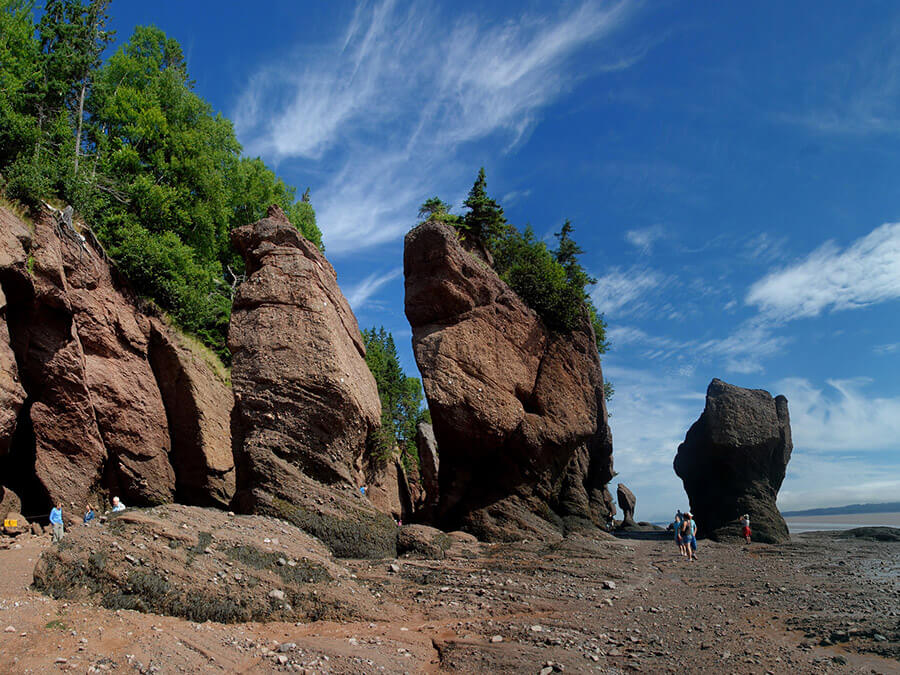
WHERE: New Brunswick
These oddly shaped rocks are in the Bay of Fundy and are a sight to see. As the tide lowers visitors can explore the ocean’s floor and roam around the rocks shaped by the water. Many have plants growing on top making them look like flower pots.
The Canadian Rockies
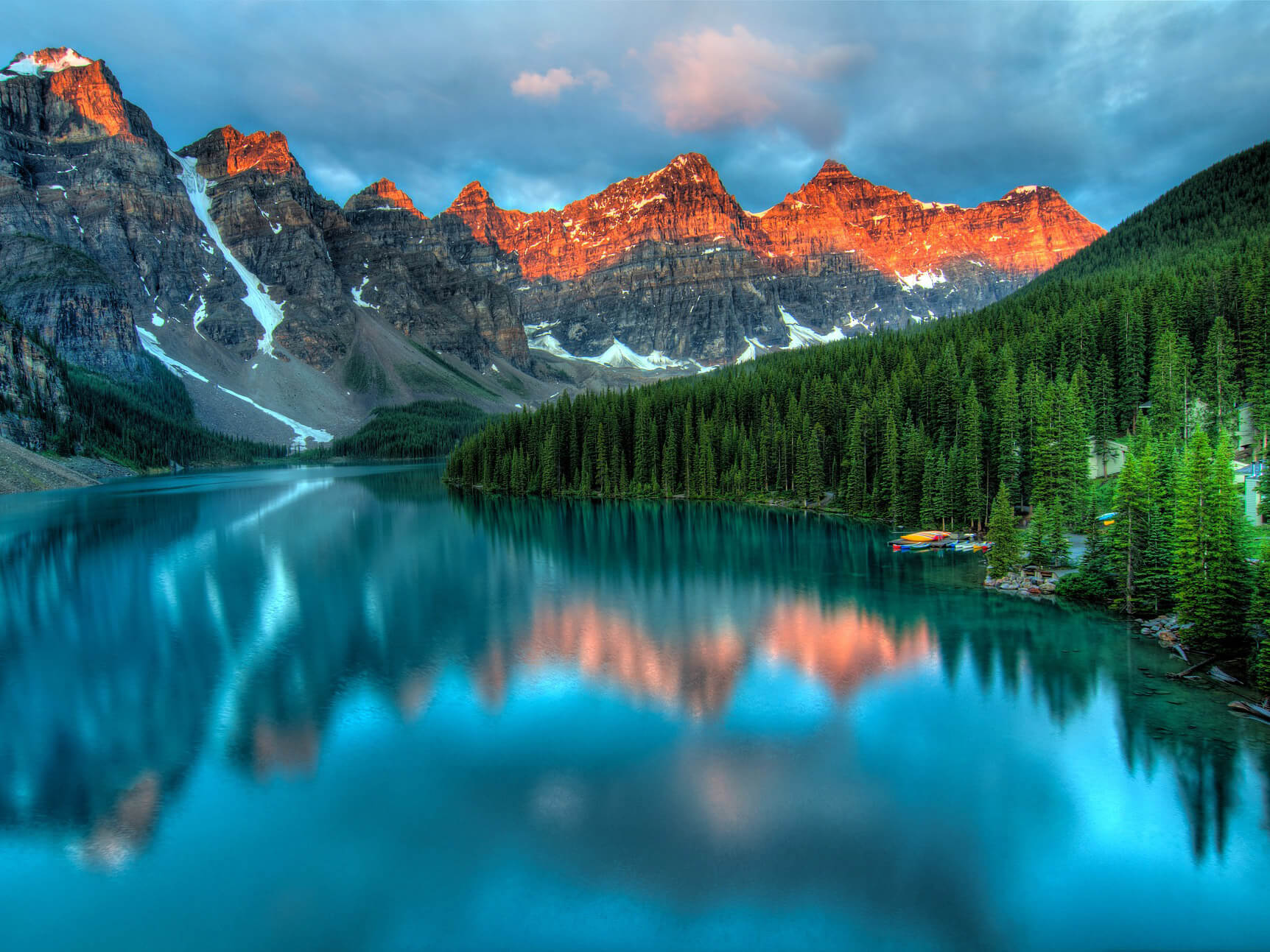
WHERE: British Columbia and Alberta
Canada is famously known for its Rocky Mountains and they are an iconic sight that many foreigners have seen. The turquoise waters of lakes such as Lake Louise and Lake Morine are amongst this UNESCO World Heritage site. Here you’ll find some of the best skiing in the world, incredible train rides and road trips plus four national parks.
READ MORE: My Biggest Mistakes in Banff
The Cabot Trail
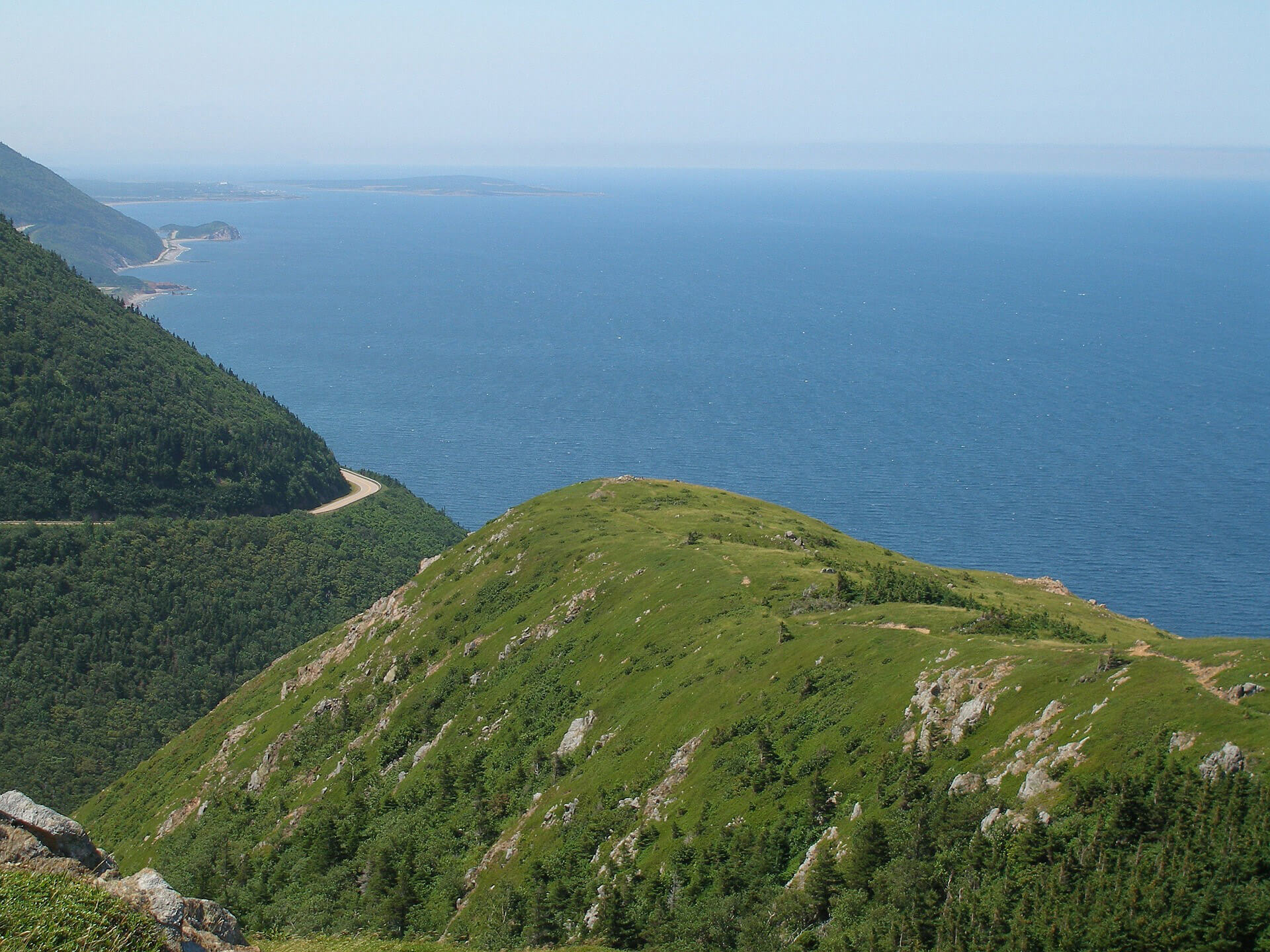
WHERE: Nova Scotia
This is Canada’s version of the Great Ocean Road in Australia. Its winding road hugs the coastline and weaves around valleys and hills with out of this world views of the water. The lush greenery of the national park makes this stop a must-do road trip in Canada.
Ellesmere Island
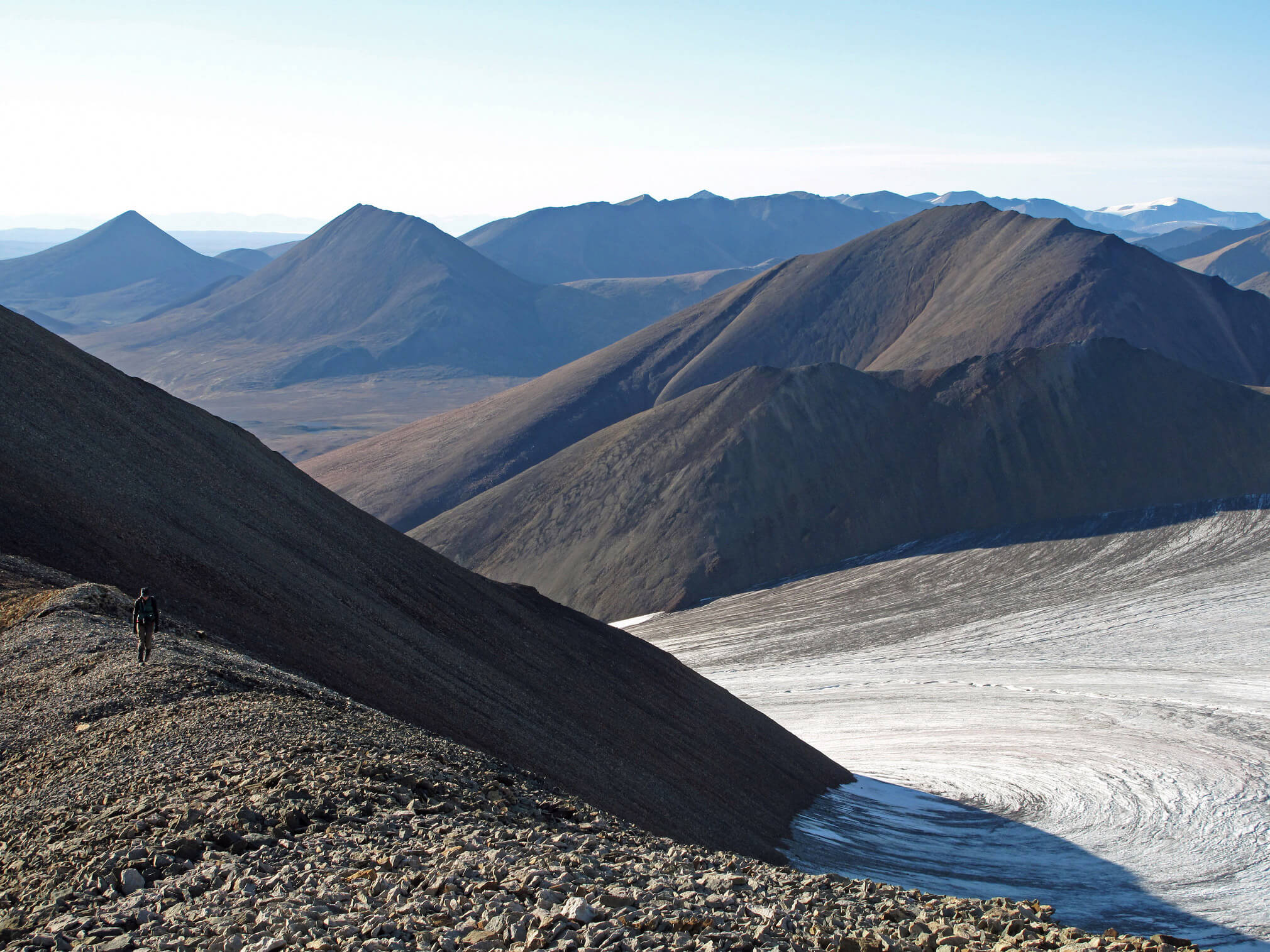
WHERE: Nunavut
Located only 702km from the North Nole, Ellesmere Island is the top of the world. The glaciers, valleys, mountains and ice caps make for a rugged terrain that is so beautiful. Here you’ll experience nature all to yourself and can adventure by backpacking, skiing or climbing with 24-hour daylight.
Gros Morne National Park
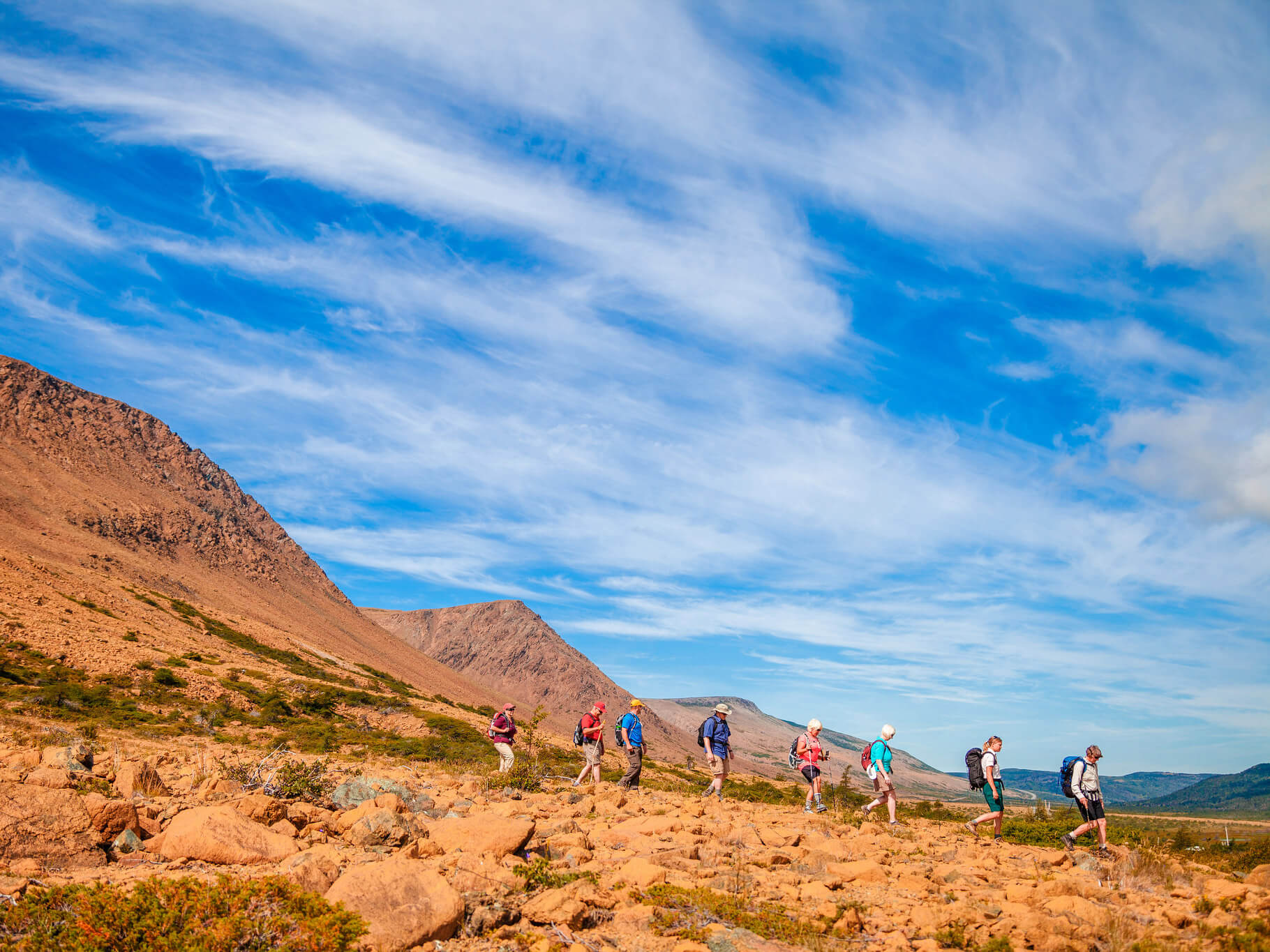
WHERE: Newfoundland & Labrador
This UNESCO World Heritage site looks like it could be on another planet because of the contrast between the greenery and the burnt orange colour of the Tablelands. This national park is most known for its fjords and is the most northerly section of the Appalachian Mountain Range.
Polar Bears
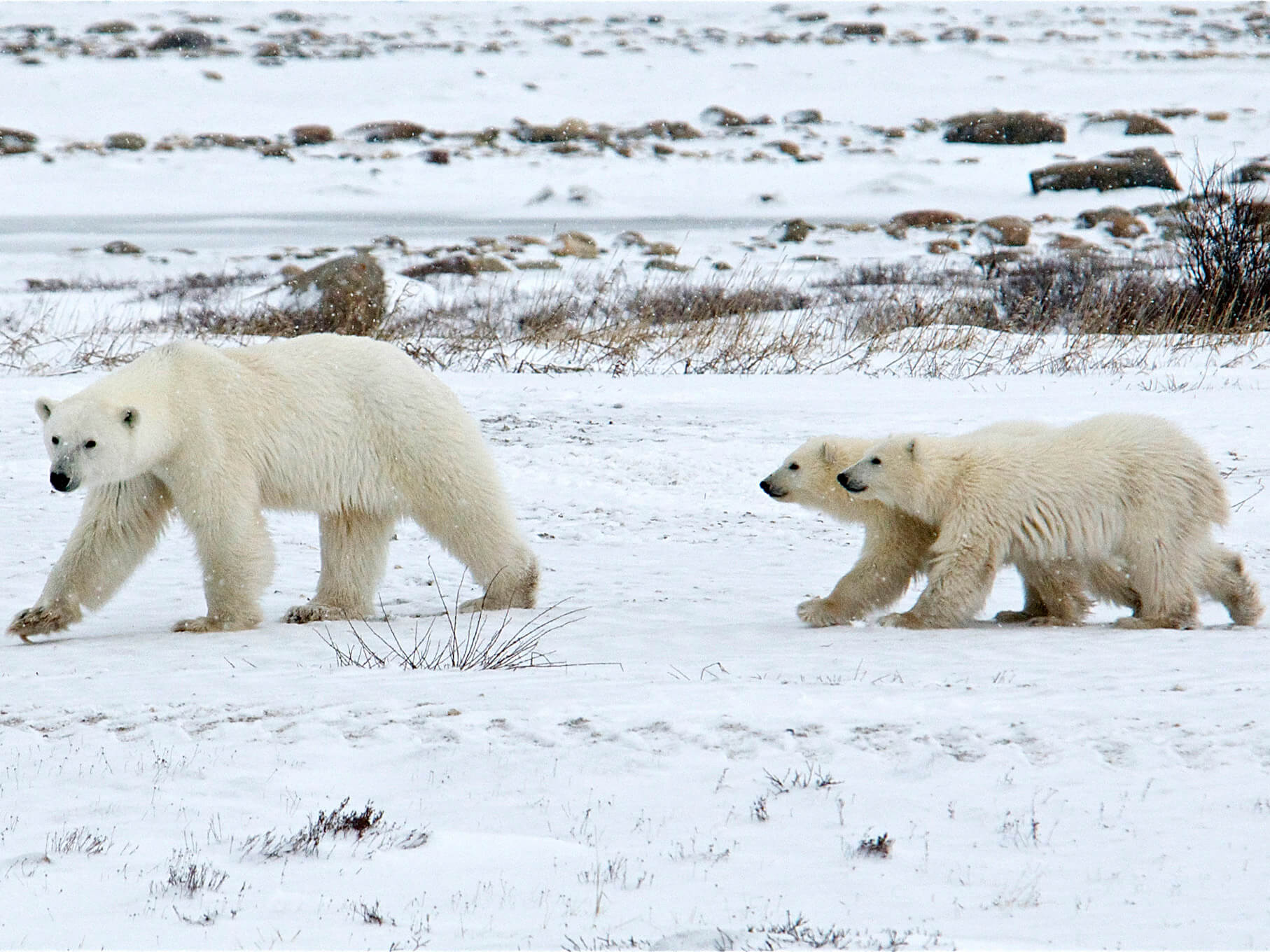
WHERE: Manitoba
It’s a bit of a journey to get to but a trip to Churchill will almost guarantee you a polar bear spotting. Churchill has one of the world’s largest populations of polar bears and their majestic beauty can be seen up close in Canada’s Arctic.
Algonquin National Park
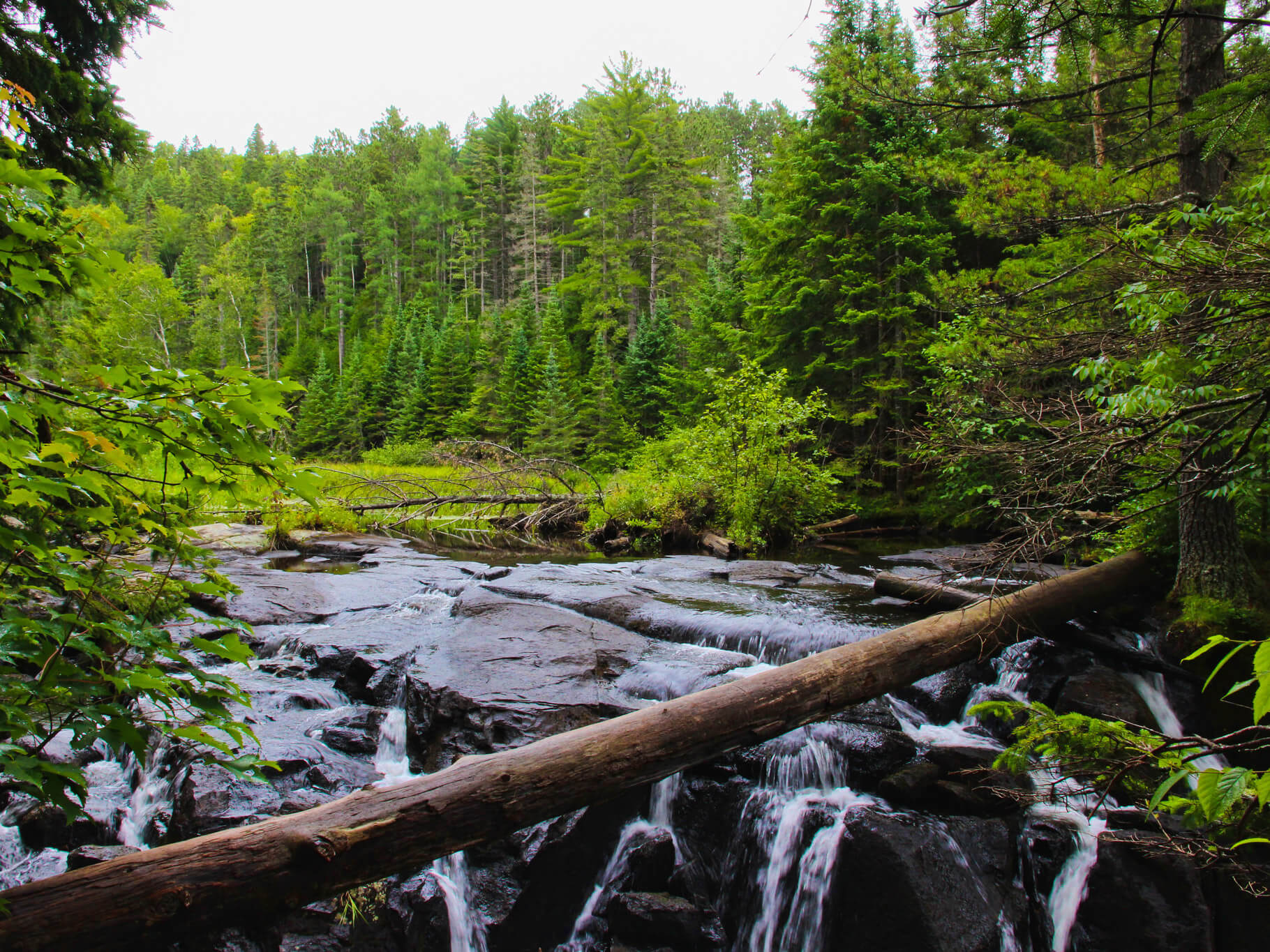
Algonquin Park is a nature lovers paradise. It’s full of hiking trails, wildlife and lakes to canoe across. Its beauty inspired the famous Canadian painting group the Group of Seven with its vivid colours.
READ MORE: 9 Best Provincial Parks in Ontario
And know that you have a list of epic places to visit in Canada you want to see them all don’t you? Well good news! You can enter for a chance to win $1500 in travel credit via Insurance Hunter ! Of course it is in honour of Canada’s 150th. There’s no better year to explore Canada then 2017!
Get out and get exploring Canada!
Need more Canada inspiration? You’ll love these posts:
- 7 Best Yoga Retreats in Canada
- The Best Things to do in Canada in Honour of Canada’s 150th
- 9 Reasons Why You Need to Travel Canada
- The Best Places to Stay in Toronto
Disclaimer: This post may contain affiliate links which I earn a small commission from and are at no additional cost to you. See my disclosure policy for details. Thank you for supporting my small business!
Disclaimer: Taylor’s Tracks is a participant in the Amazon Services LLC Associates Program, an affiliate advertising program designed to provide a means for us to earn fees by linking to Amazon.Com and affiliated sites.
- Social Studies
- Language Arts

Grade 5 | Grade 6 | Grade 8
Interior Plains Physical Regions of Canada Grade 5 Social Studies
Interior Plains: Land of Open Skies

GENERAL INFORMATION The Plains region is in between the Cordillera and the Great Canadian Shield. It is found in the Yukon, Northwest Territories, British Columbia, Alberta, Saskatchewan and Manitoba.
Sometimes, people make the mistake of calling the Plains the Prairie Provinces or just the Prairies. The term prairie refers to the prairie grasses that grow wild in Alberta, Saskatchewan and Manitoba.
The Interior Plains landscape includes much more than just the prairie grasslands. You'll find that this entire region is generally flat in elevation.

Just as in the Cordillera, the human population tends to be greater in the southern region of the plains, but you'll also notice that town and cities generally are beside a water source like a lake or river. The Plains truly rely upon water, for the region's climate is generally dry.
Water not only helps irrigate crops and livestock but it is also a source of transportation for our products, supplies, goods and services. In the past, these water routes were also major fur trading routes. Similar to the Cordillera, these waterways also act as areas of recreation, tourism, as well, as resources like hydro-electricity for Canadians.

Each city in the Interior Plains offers its own unique industries, services and resources. Yet, it is important to discuss major industries found within this landscape. First of all, the farming is extremely important. Crops such as wheat, barley, oats, flax, canola, mustard, potatoes, corn and sugar beets are grown in the plains.
Farmers also raise cattle, pigs, poultry, to name a few. Both the crops and livestock produced in this area, feed many Canadians, as well as, others around the world. Moreover, the agricultural industry is also linked with promoting the tourism industry. Many rodeos, stampedes and agricultural shows are held throughout this region for everyone to enjoy.

Secondly the mining of fuel products like oil, natural gas, coal , potash copper, zinc, gold and uranium is crucial. Here Canadians take these resources that lie below the Plains and refine or make these resources into other products that all Canadians need on a daily basis.

_______________________________________________________________
To drive across the Prairies is to see endless fields of wheat and canola ripening under a sky that seems to go on forever. The plains of Alberta, Saskatchewan and Manitoba are among the richest grain-producing regions in the world.
Yet even here are surprises. If you leave the road at Brooks, Alberta, and drive north, you descend into the Red Deer River valley. Here, in desert-like conditions, water and wind have created strange shapes in the sandstone called "hoodoos." The same forces of erosion have uncovered some of the largest concentrations of dinosaur fossils in the world.

Alberta is Canada's leading producer of petroleum. The sedimentary rocks underlying the Prairies have important deposits of oil, natural gas and potash.
Source: Knight's Canadian Info Collection
Back to Social Studies
Back to Regions Index
Lastly many of the forest areas found in the Plains are harvested for the lumber industry or else admired by tourists for the tourism industry. The resources found in the Interior Plains are transported across Canada to other regions.
Since most of the Interior Plains are flat, transportation of goods and services is easily done by trains, pipelines, trucks, and planes. In other words, the Interior Plains supply a very important link for all Canadians and their economic development.
Source: The Physical Regions of Canada

Pipeline Map - Click for Larger Version


Explore the Regions - Video Tours
Interior Plains
Alberta | Saskatchewan
Manitoba | NWT
Interior Plains: Amazing Race Roadblock & Detour

IMAGES
VIDEO
COMMENTS
The main attractions here in the Interior Plains are Cowboy Trail, West Edmonton Mall, the Calgary Stampede and the Calgary Tower. The recreational activities here are skiing, going on the field to play, tobogganing, exercise and floor or street hockey. Tourists that visit the Interior Plains should go to the Calgary Stampede at the beginning ...
The Interior Plains are highlighted in red. The Interior Plains is a vast physiographic region that spreads across the Laurentian craton of central North America, extending along the east flank of the Rocky Mountains from the Gulf Coast region to the Arctic Beaufort Sea.In Canada, it encompasses the Canadian Prairies separating the Canadian Rockies from the Canadian Shield, as well as the ...
Here are 18 interesting facts about Interior Plains of Canada to know more about it. Size and Scope: The Interior Plains of Canada cover a vast expanse, extending over 1.8 million square kilometers, encompassing significant portions of Alberta, Saskatchewan, and Manitoba. Prairie Provinces: These plains are integral to the Prairie Provinces ...
Homepage / Best Tourist Spots / interior plains canada tourist attractions. interior plains canada tourist attractions June 12, 2022 by nayan 9 View. Hey there fellow humans, check out this awesome location and landscape on The Interior Plains. I mean, just look at this picture! The vast fields, the clear blue sky, it's like nature's own ...
The Prairie Provinces. The vast stretch of land between British Columbia and Ontario comprises an area known as the Canadian Prairies, a 2,000 km valley of plains, forests, and farmland. Divided into three provinces — Alberta, Manitoba, and Saskatchewan — the resource-rich region has long served as the country's breadbasket and a crucial ...
interior plains PHYSICAL & NATURAL FEATURES . rocky mountains. Located In Alberta; ... Has many attractions including World Waterpark, Ice Palace, professor WEM's Adventure Golf Mini-Golf and Galaxyland ... Where :Prince Albert National Park is situated in central Saskatchewan, Canada and is located 200 kilometres (120 mi) north of Saskatoon ...
The Canadian Rockies mountain system consists of the Interior Plains of Alberta and Northeastern British Columbia on the east to the Rocky Mountain Trench of BC on the west. ... Travel Insurance to Canada. ... There is a free shuttle that runs between the main attractions in Banff town, and you can also walk or bike around town.
Park campsites ($11.55-28.35) can be reserved from April to September online or by calling the Parks Reservation Service (t 204 948 3333 or t 1 888 482 2267; $10/reservation). Saskatchewan. Entry to Saskatchewan's provincial parks (w saskparks.net) is $7/vehicle/day, $17 for three days, $25 weekly and $50 annually.
The region known as the Interior Plains extends from the Canadian Shield to the western ranges. It covers over 1.8 million km2 and 18% of Canada's land surface, primarily sedimentary rock in low-grade format. Bedrock relief plays a role in large-scale physiographic features, but small-scale features are primarily the result of Quaternary ...
Cypress Hills Interprovincial Park is a must-visit attraction for outdoor lovers. The park is located in the southwest corner of Saskatchewan and is named for the Cypress Hills that rise 1,900 feet above the surrounding terrain. Cliffs, lookout points, and forest trails are all there to be enjoyed and explored.
Nestled between the Rocky Mountains and the Canadian prairie, in the high ranching country of Alberta, is the historic Cowboy Trail. This scenic route along highway 22 through Canada's Rocky Mountain Foothills features horseback trail rides, farm and ranch vacations, guest ranches, western themed attractions, accommodations, adventures ...
23 Top-Rated Tourist Attractions in Canada. Written by Lana Law and Michael Law Updated Mar 29, 2024 ... The Upper Town rests on 100-meter-high cliffs and is home to the Citadel, the Plains of Abraham, Place d'Armes, ... the interior of the beautiful Notre-Dame Basilica, ...
Other articles where Alberta Plain is discussed: Canada: The interior plains: …to 650 metres), and the Alberta plain, which is more than 2,500 feet (750 metres). These plains are rolling landscapes of glacial deposits laid over almost horizontal bedrock. In some areas the undulating plains are interspersed with ranges of low hills (glacial moraines) studded with kettle lakes and flat ...
Estimated cost for this trip is around $1500. Near by is the Fairmont Chateau Lake Louise, a dreamy hotel located right on the shores of Lake Louise. Don't miss out on this breathtaking destination! We've compiled 15 stunning picturesque landscapes of authentic spots for Des endroits au Canada à visiter absolument - Le Cahier, ready to ...
Halifax. The capital of Nova Scotia is not to be missed. Like St. John's, Halifax is known for its lively nightlife, rich seafaring history, amazing seafood, shopping, epic coastlines, outdoor activities, and much, much more. You can visit the Citadel atop Citadel Hill - an important place during the War of 1812.
Yes, we are talking about Canada. This stunning country is home to a diverse range of tourist attractions in Canada that will provide you with a truly unforgettable travel experience. Places & Tourist Attractions in Canada. Alberta. Banff National Park & the Rocky Mountains. Calgary Stampede. Calgary.
The Cabot Trail. WHERE: Nova Scotia. This is Canada's version of the Great Ocean Road in Australia. Its winding road hugs the coastline and weaves around valleys and hills with out of this world views of the water. The lush greenery of the national park makes this stop a must-do road trip in Canada.
Interior Plains: Land of Open Skies. GENERAL INFORMATION The Plains region is in between the Cordillera and the Great Canadian Shield. It is found in the Yukon, Northwest Territories, British Columbia, Alberta, Saskatchewan and Manitoba. Sometimes, people make the mistake of calling the Plains the Prairie Provinces or just the Prairies.
The Citadel, the Plains of Abraham, the Place d'Armes, and the Parque Historique de l'Artillerie are all located in the Upper Town, which is perched on cliffs that are over one hundred meters high. Old Quebec is one of the most visited historical places in all of Canada and has a thriving tourism industry as a result.
Revel in North America's largest collection of Indigenous rock art in this UNESCO World Heritage Site. Daily guided tours through the archeological preserve offer a deeper understanding of the area's significance. Sample fresh local ingredients in Canada's Premier Food Corridor. From craft breweries to vibrant eateries, pursue a dining ...